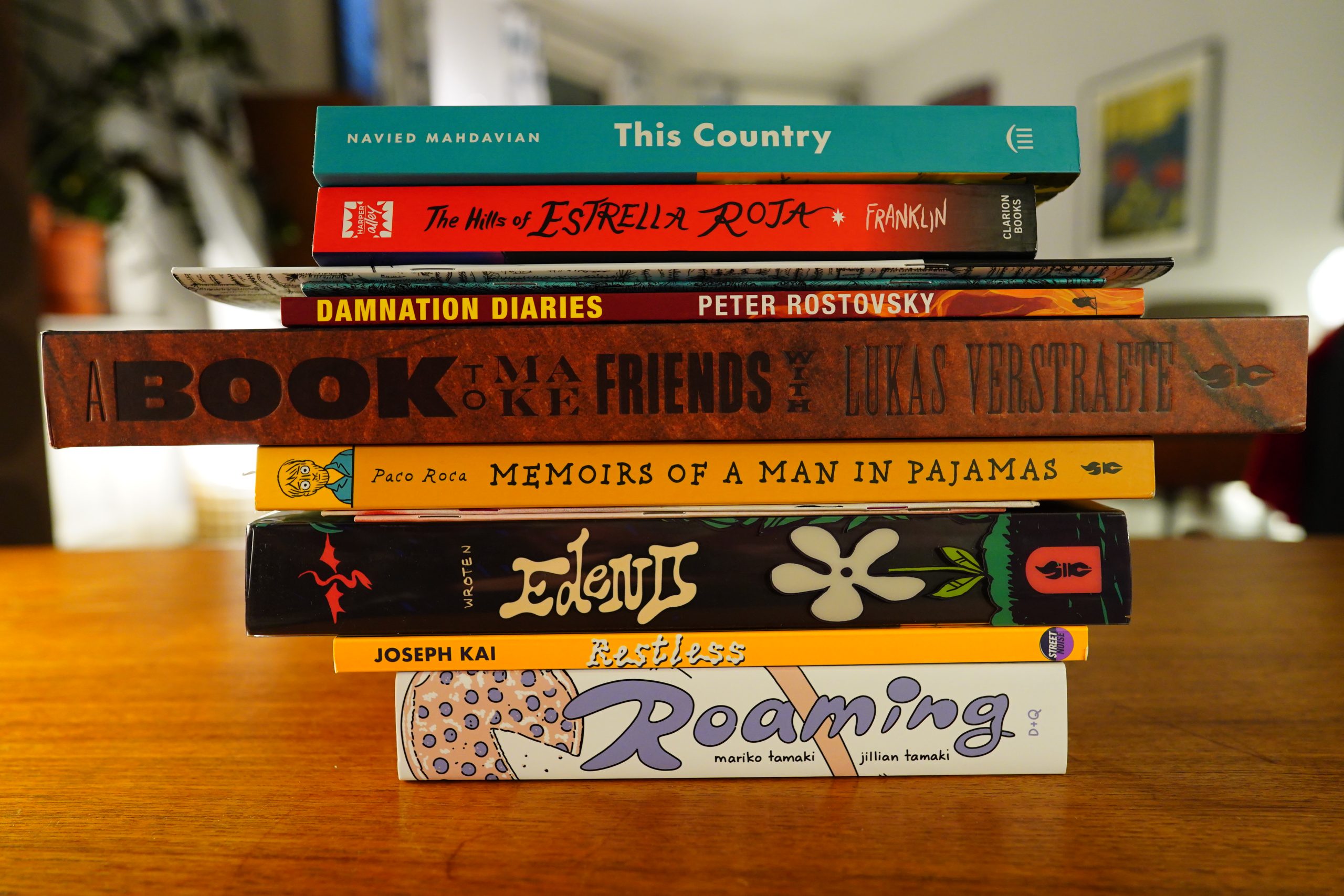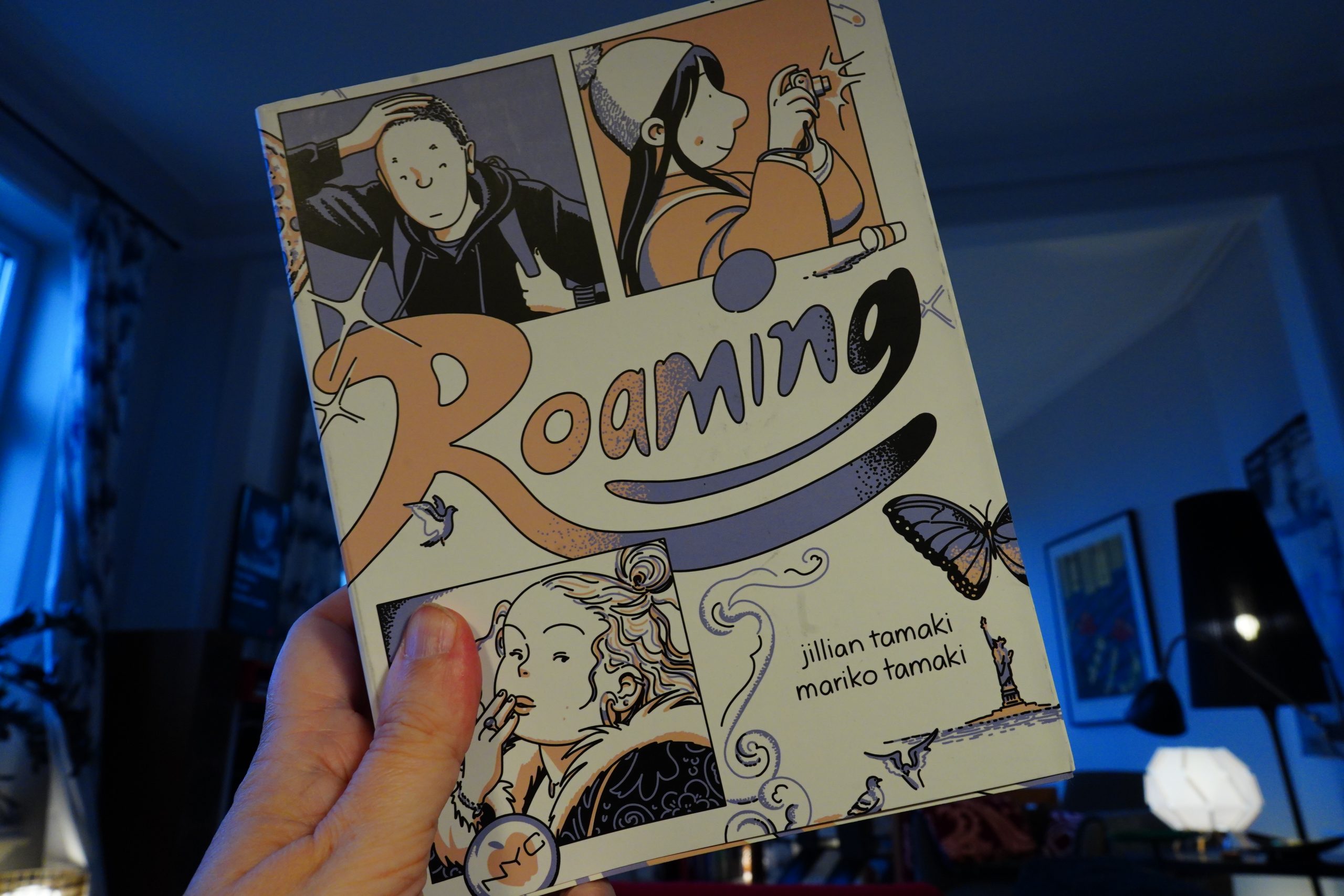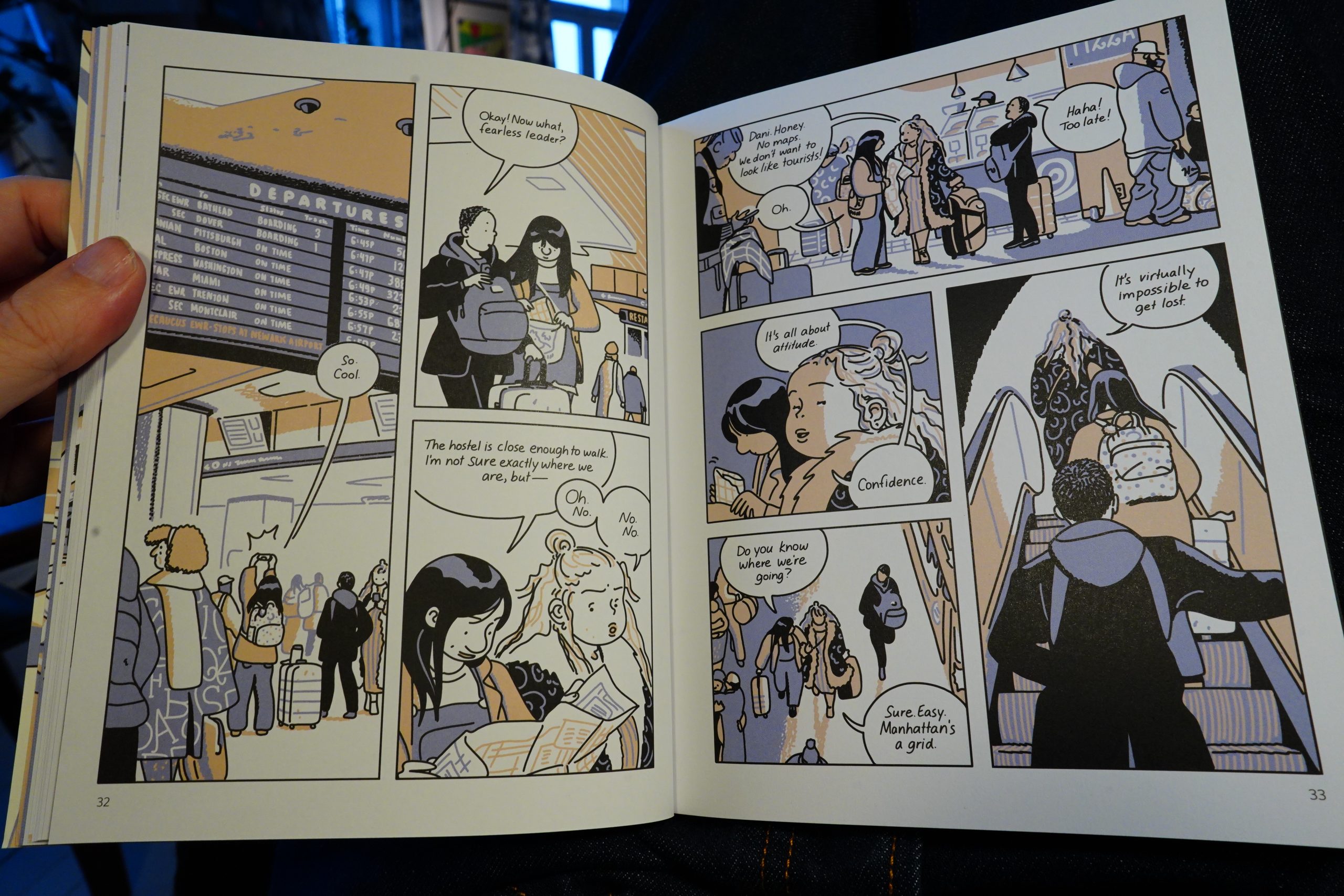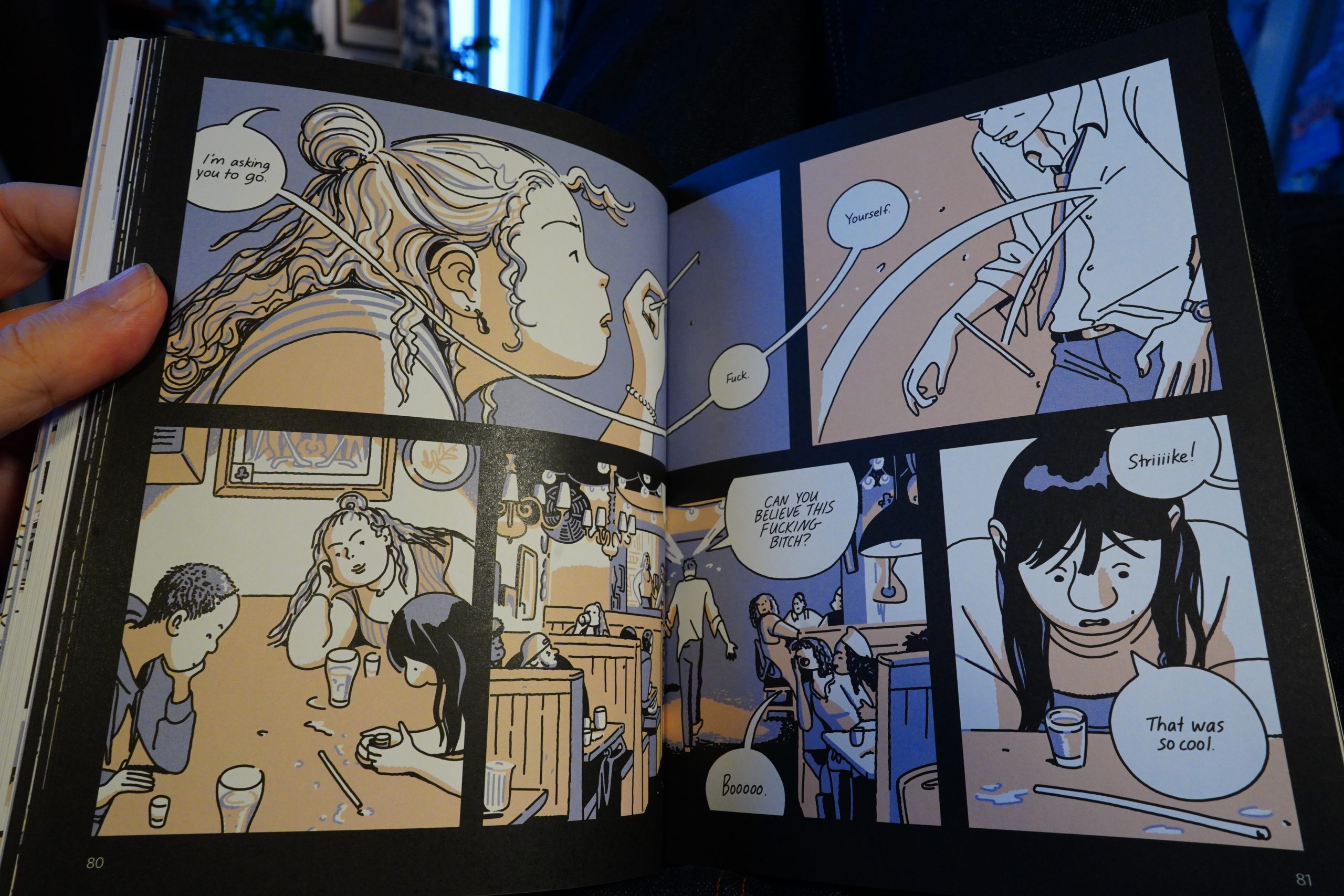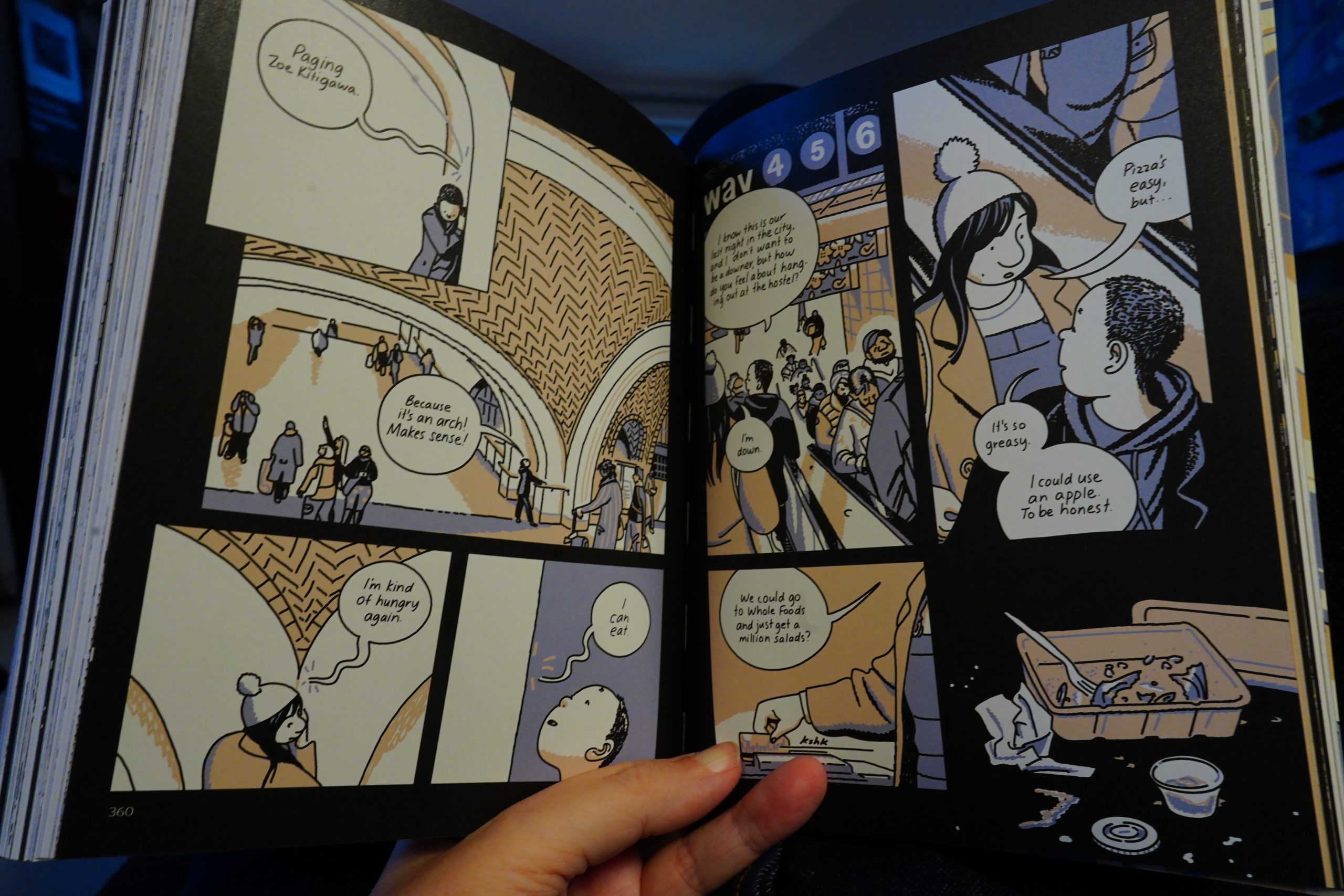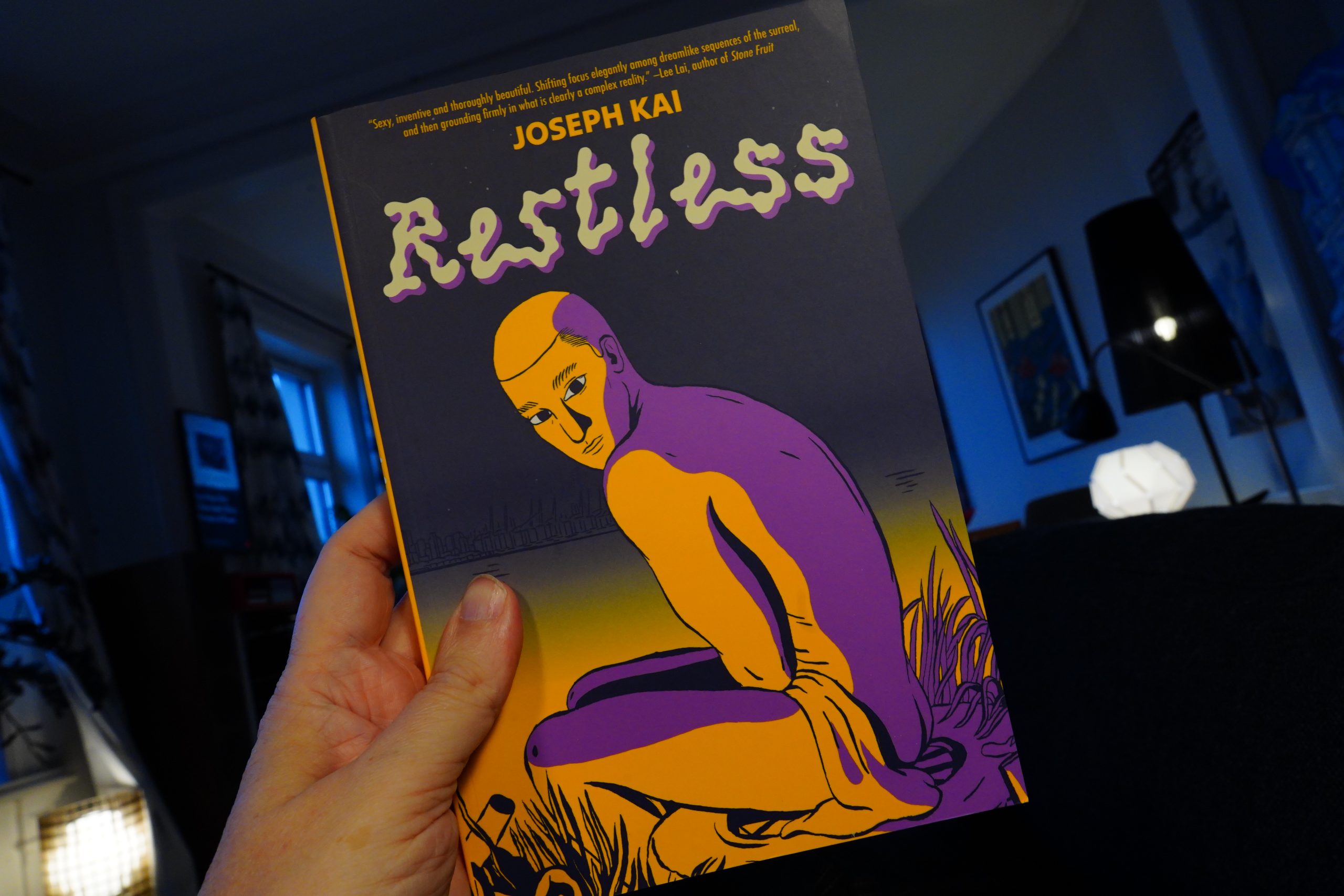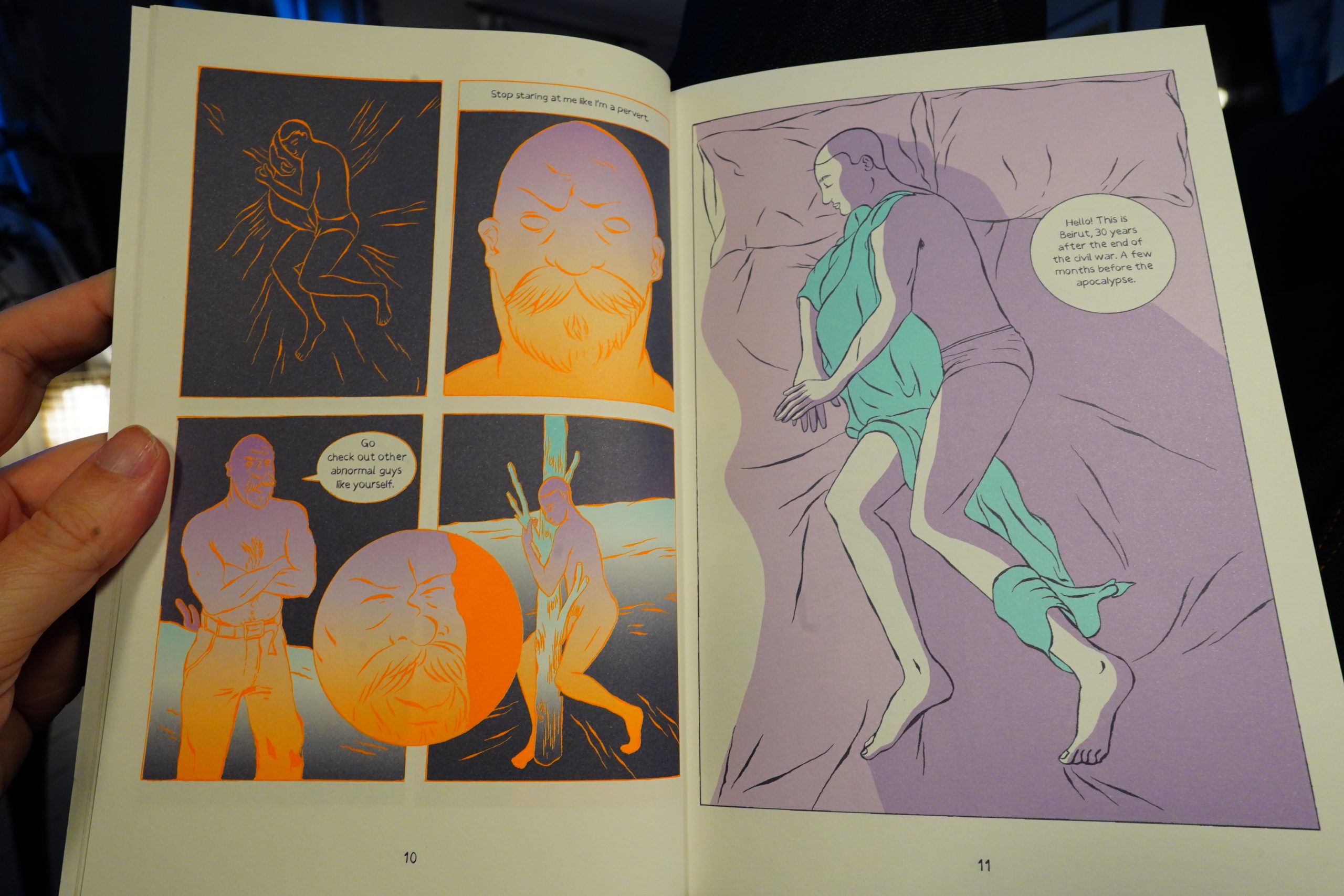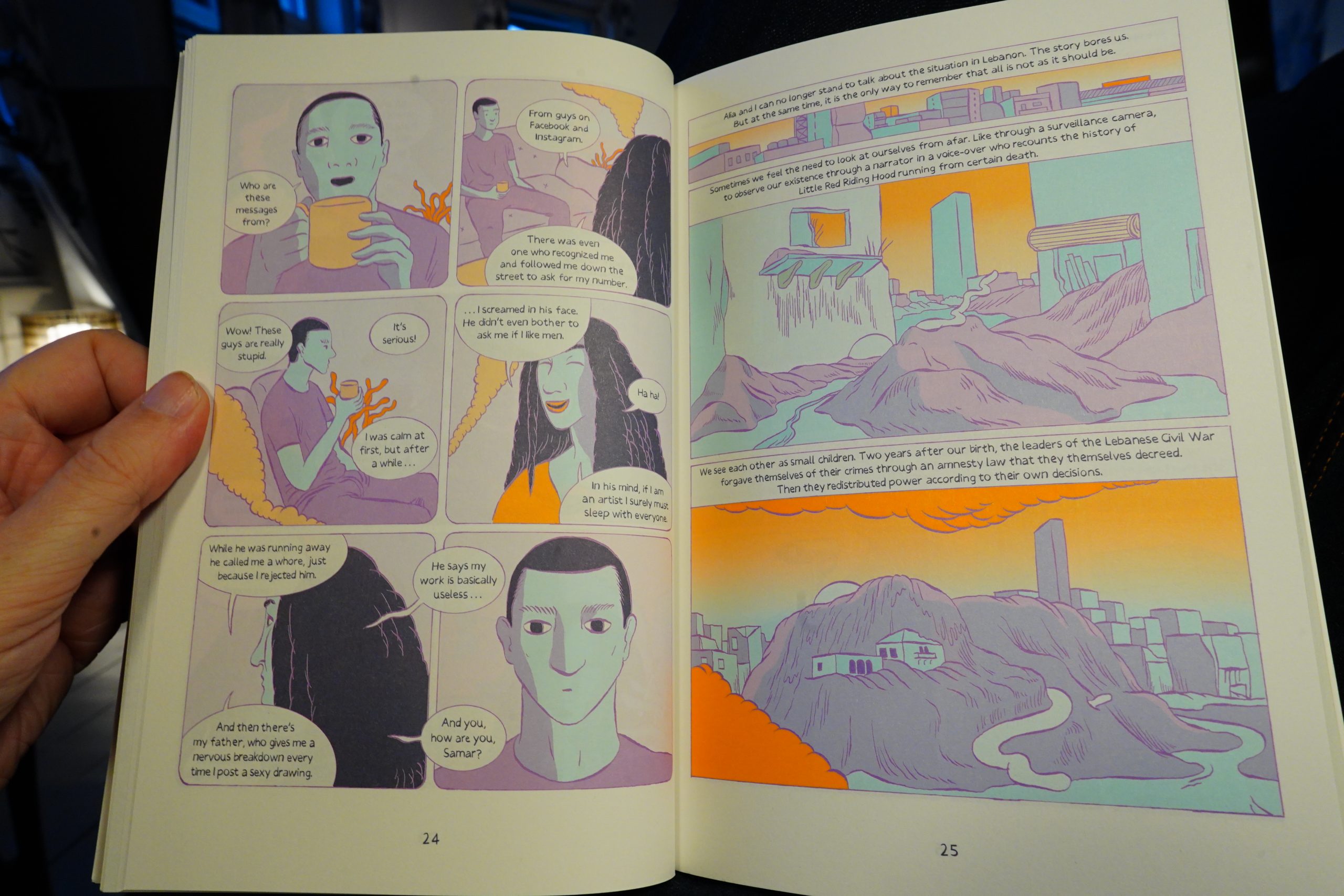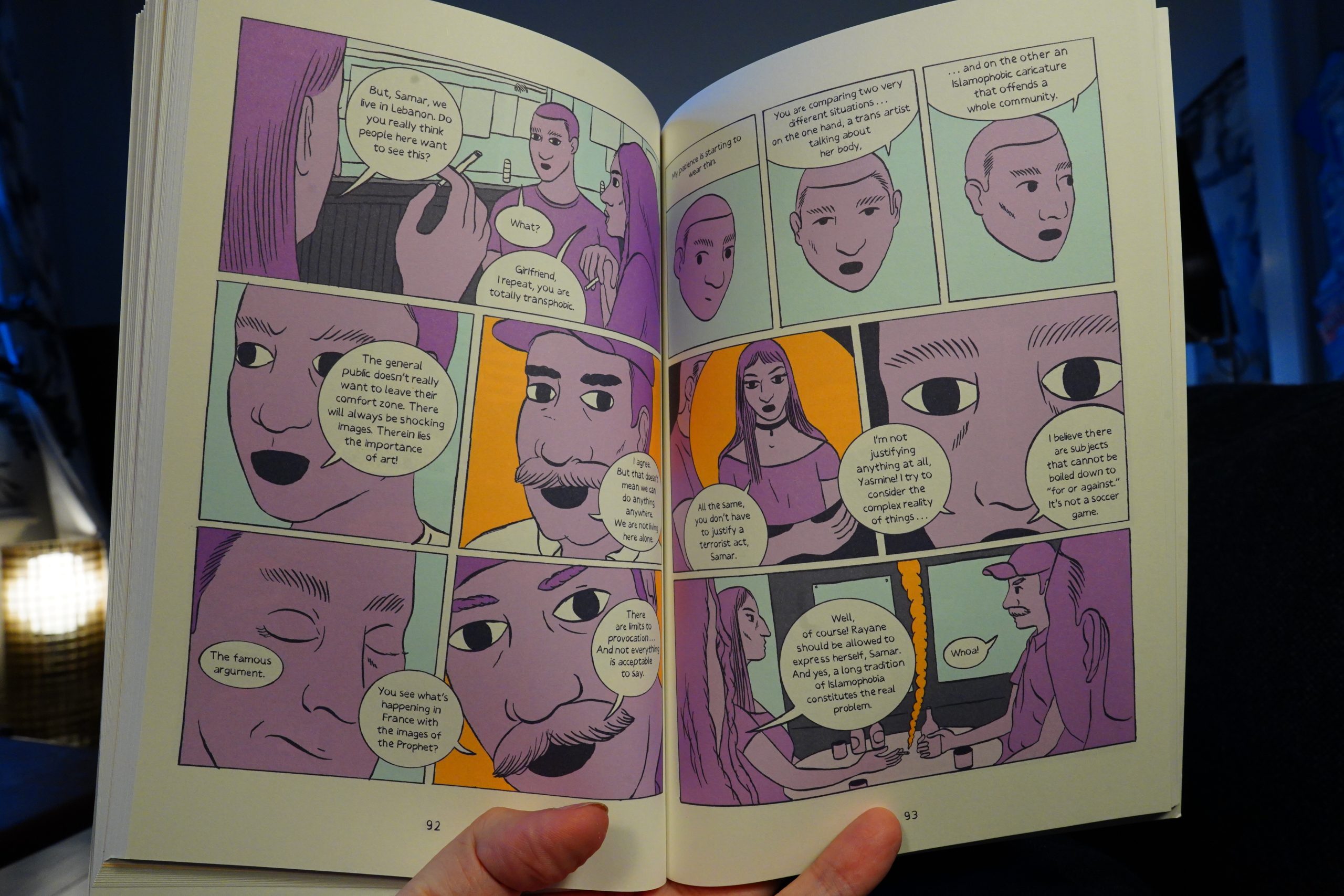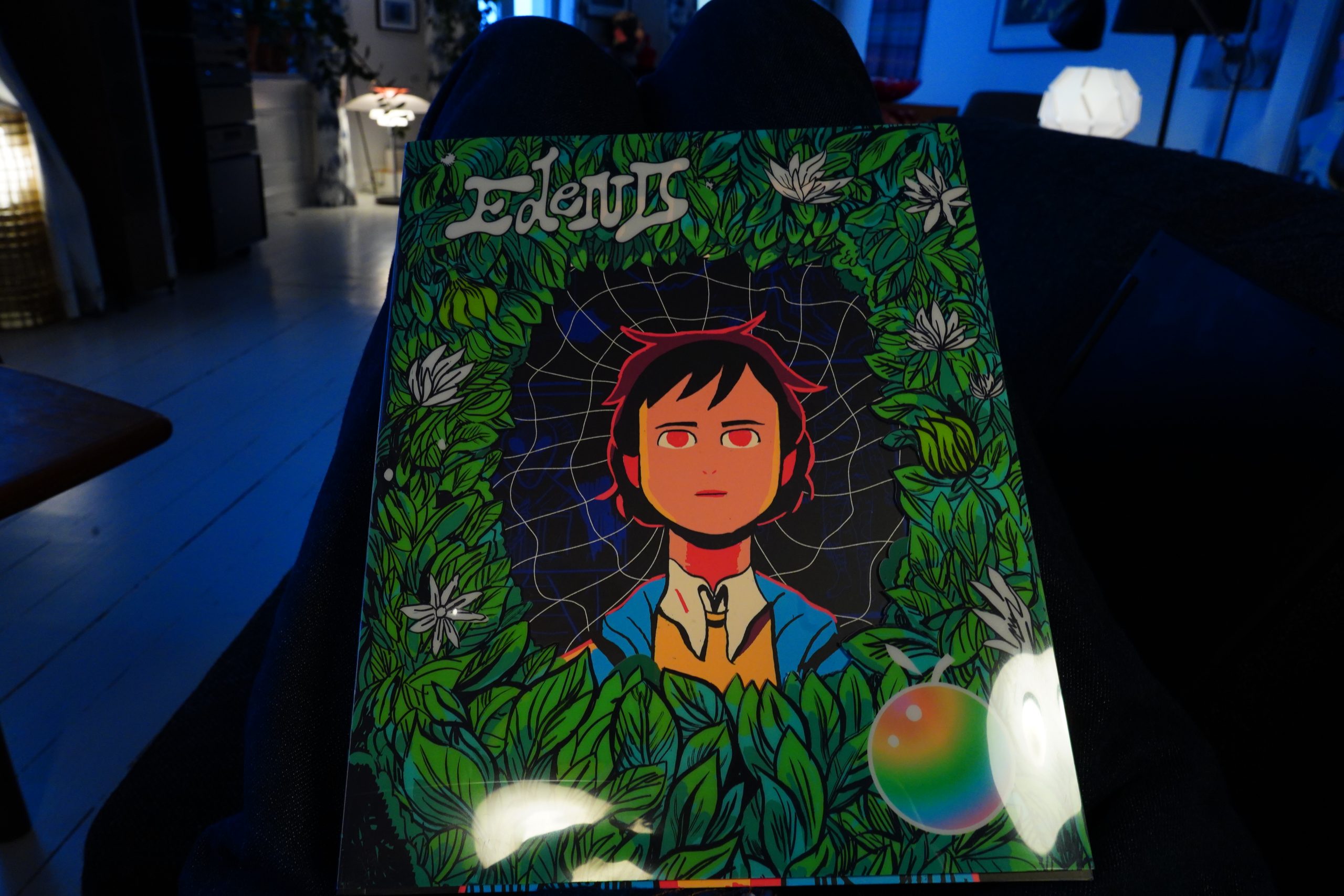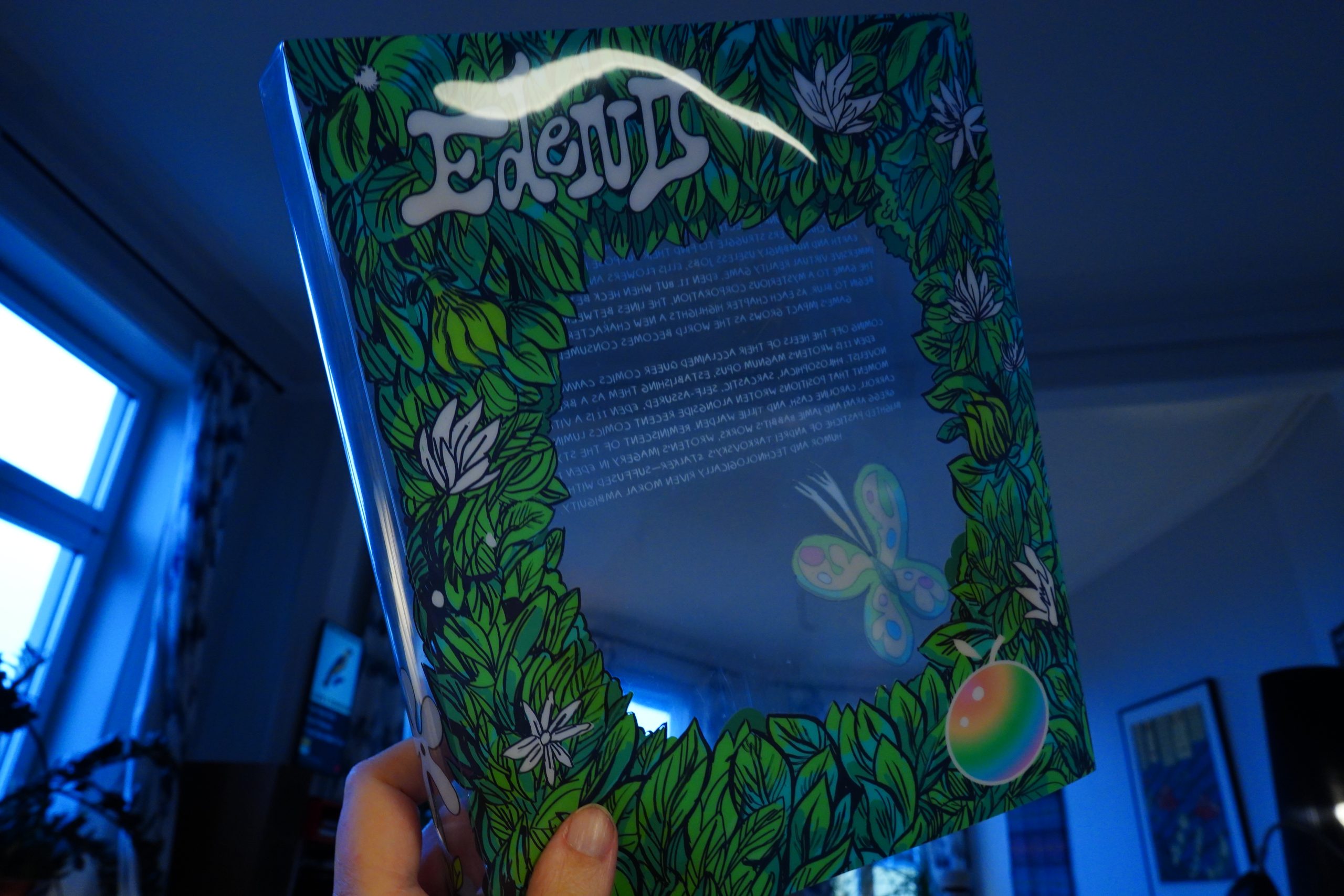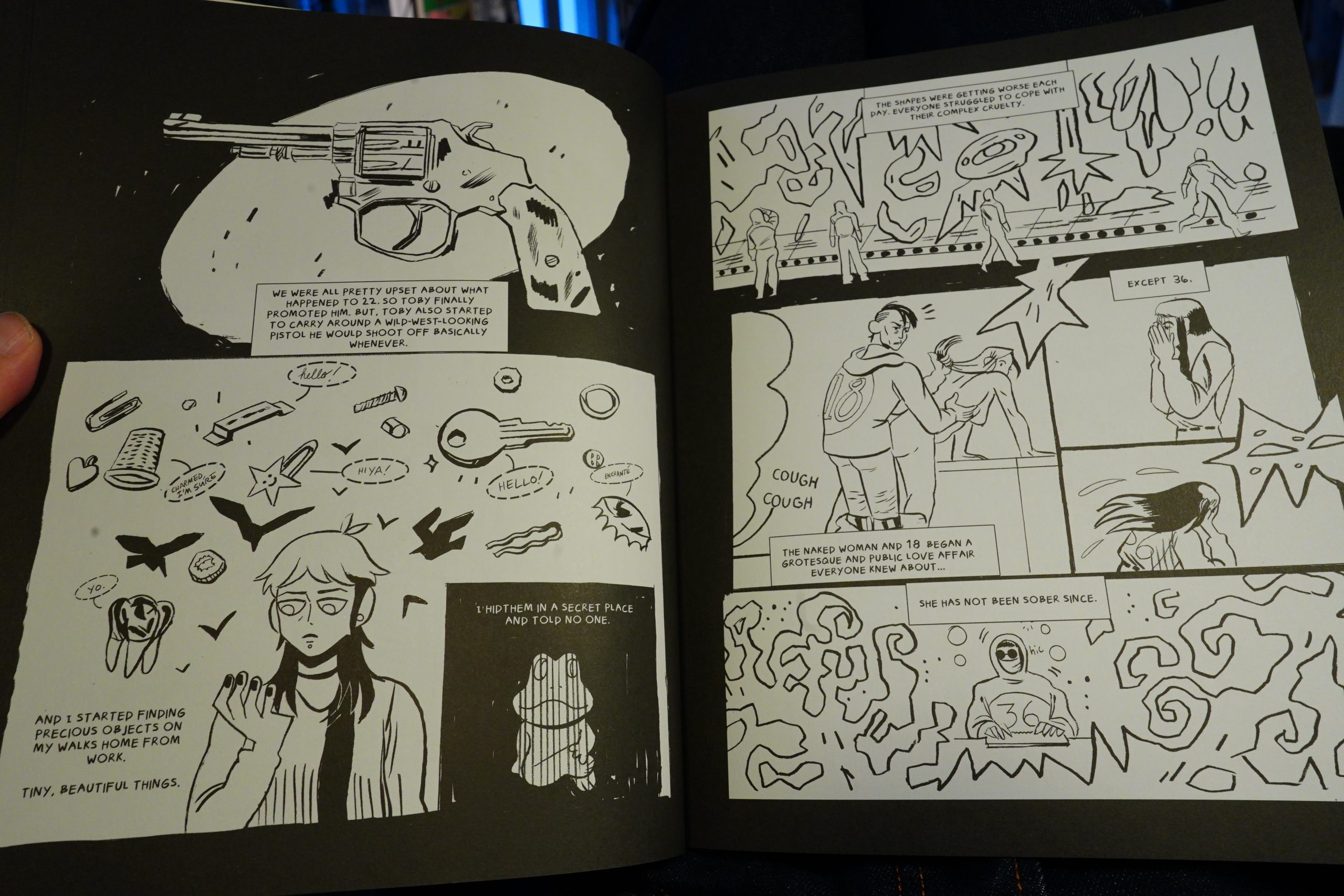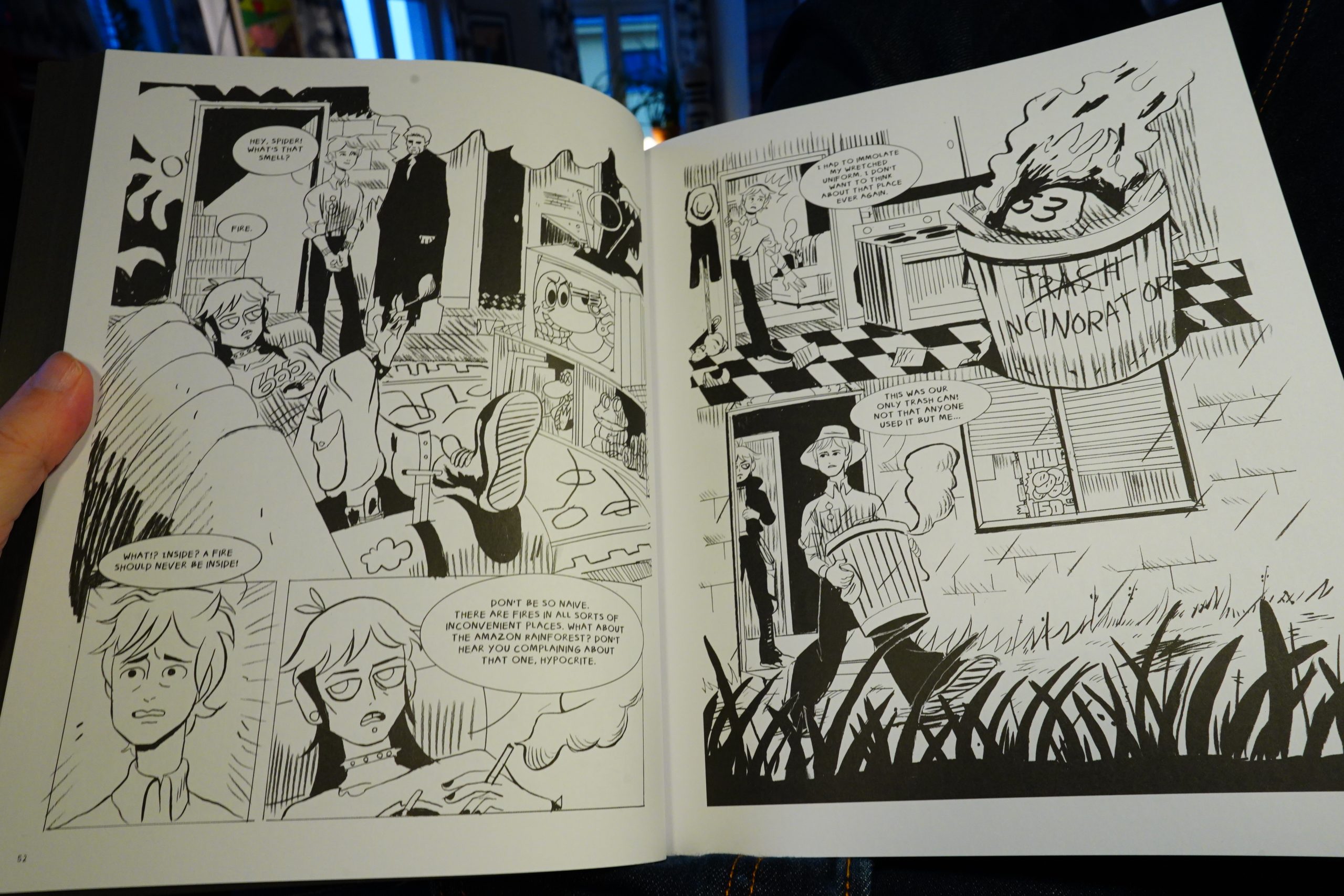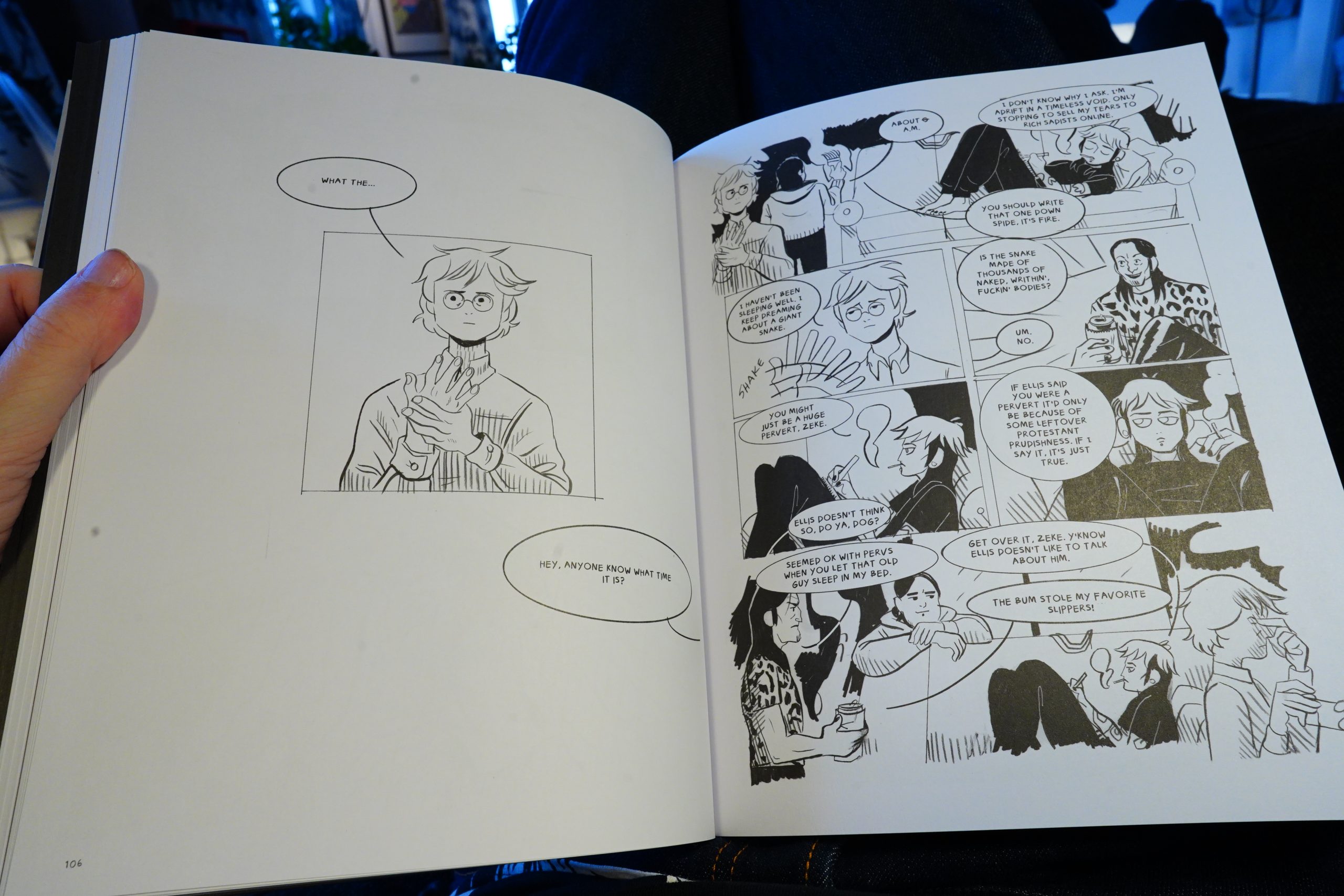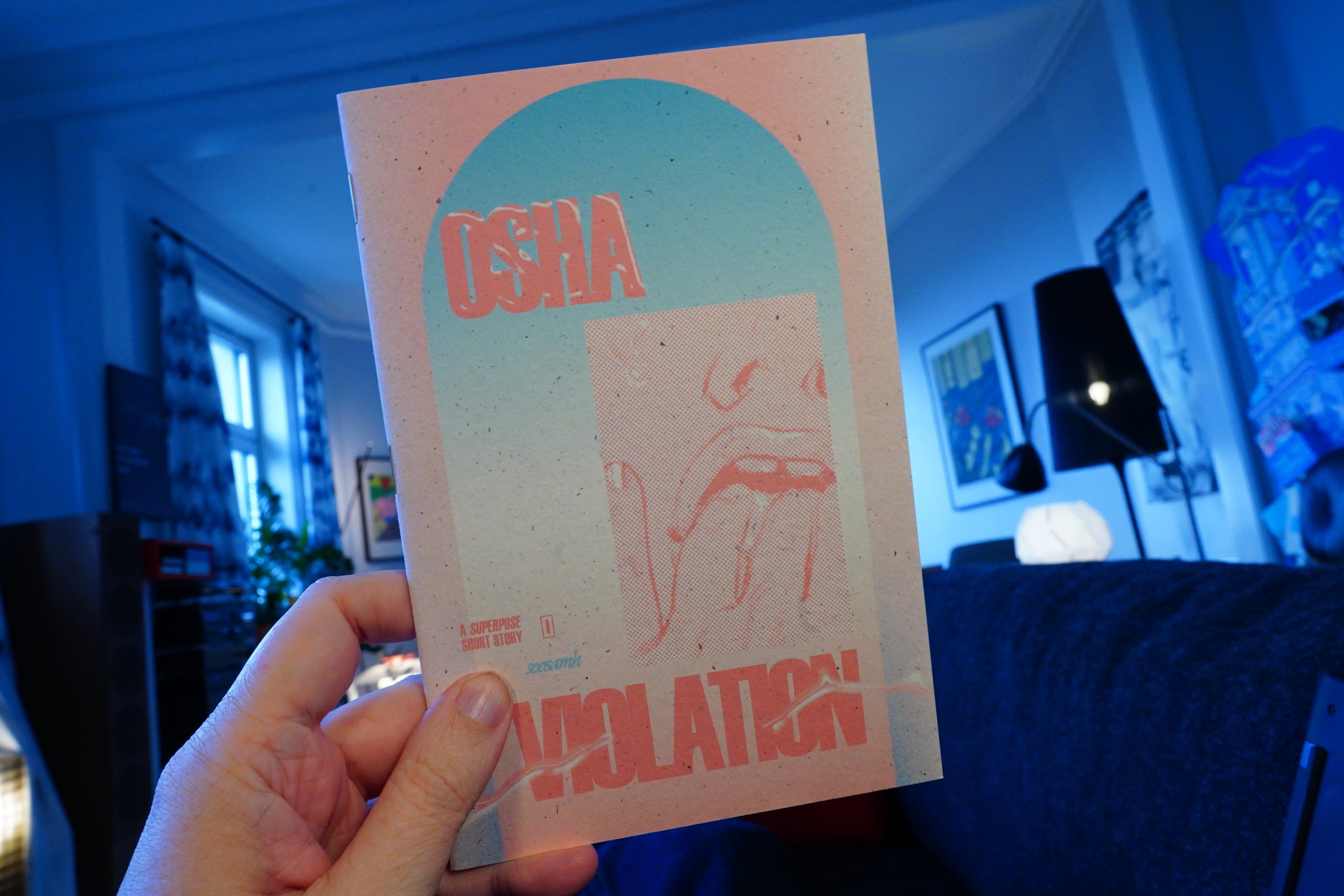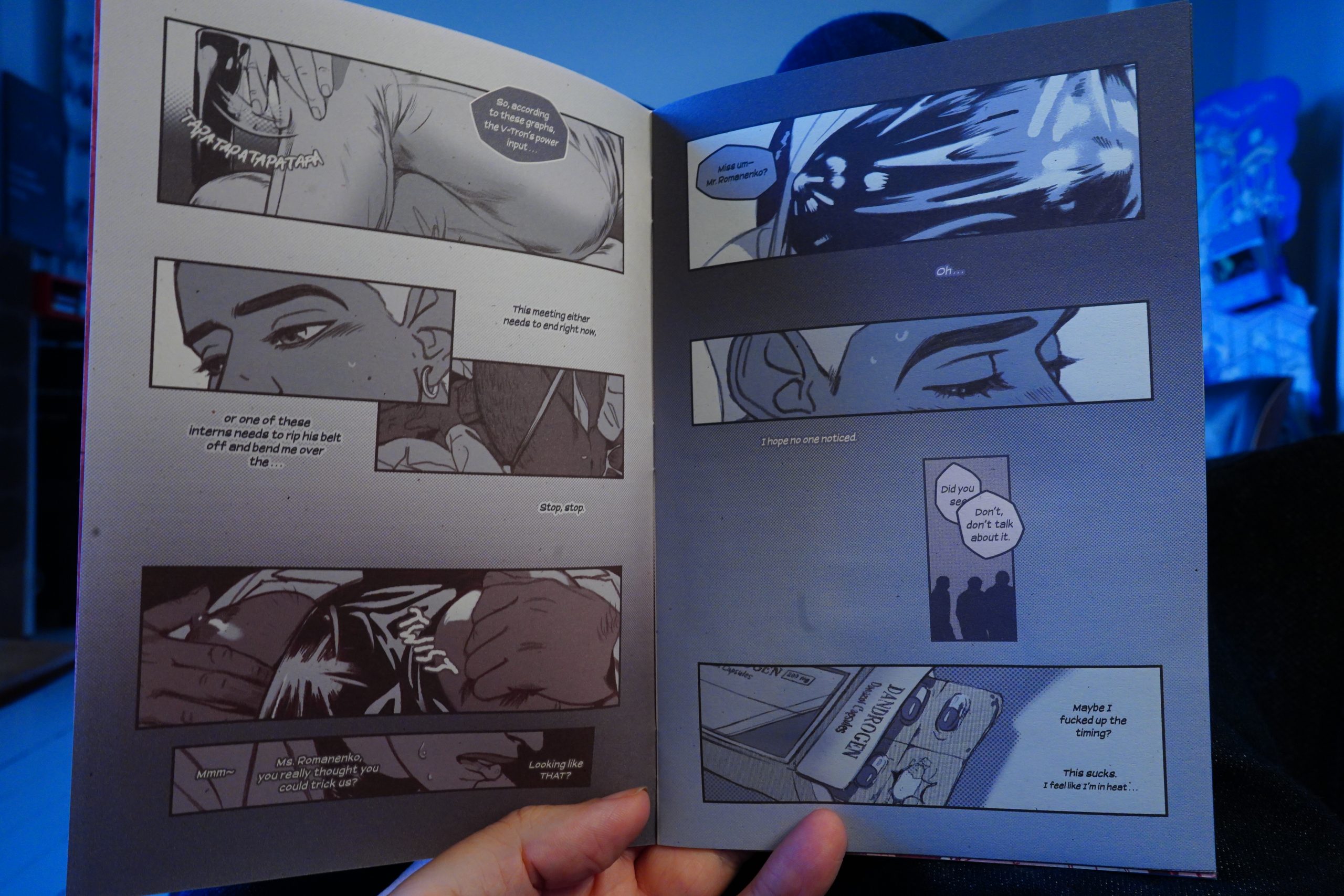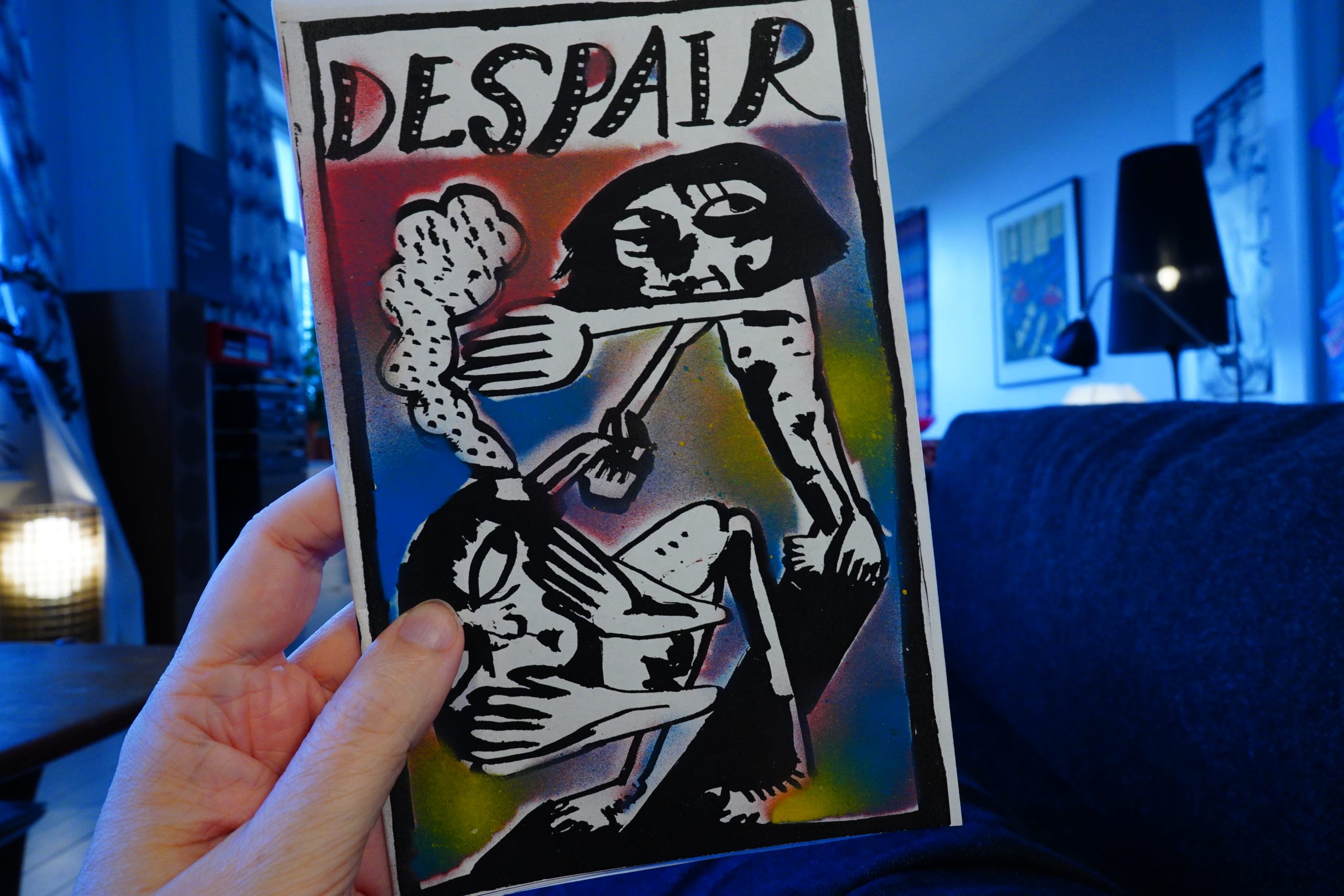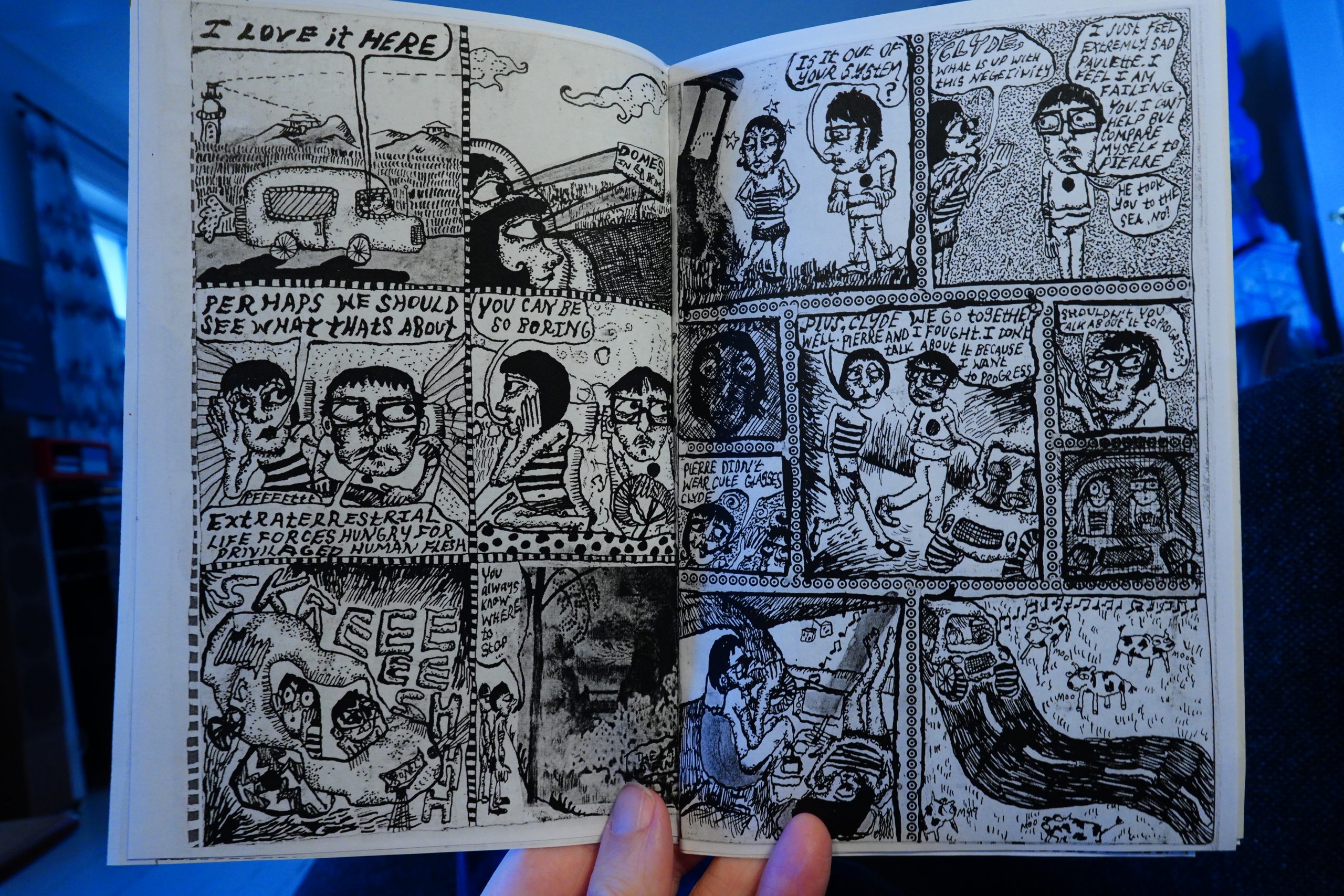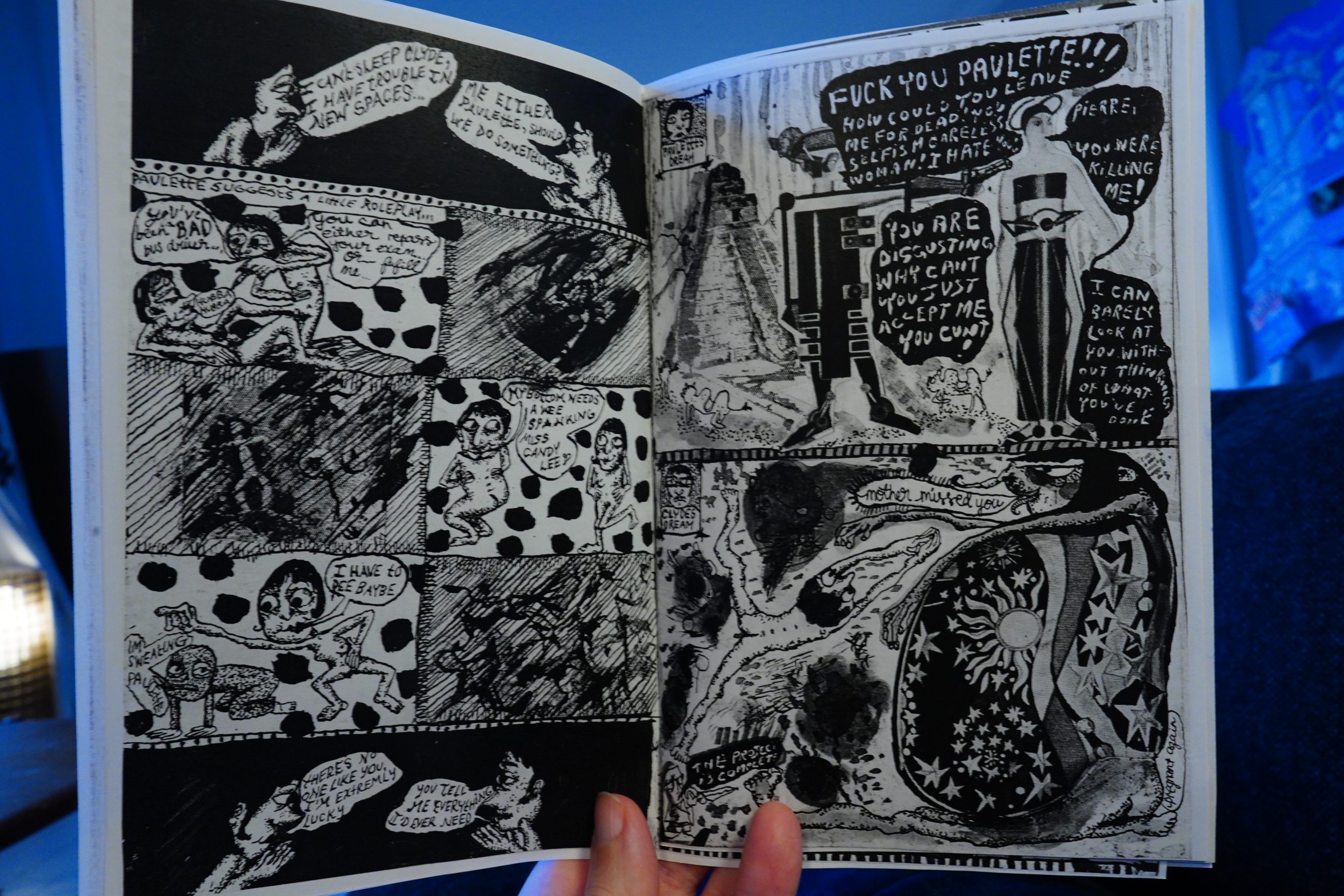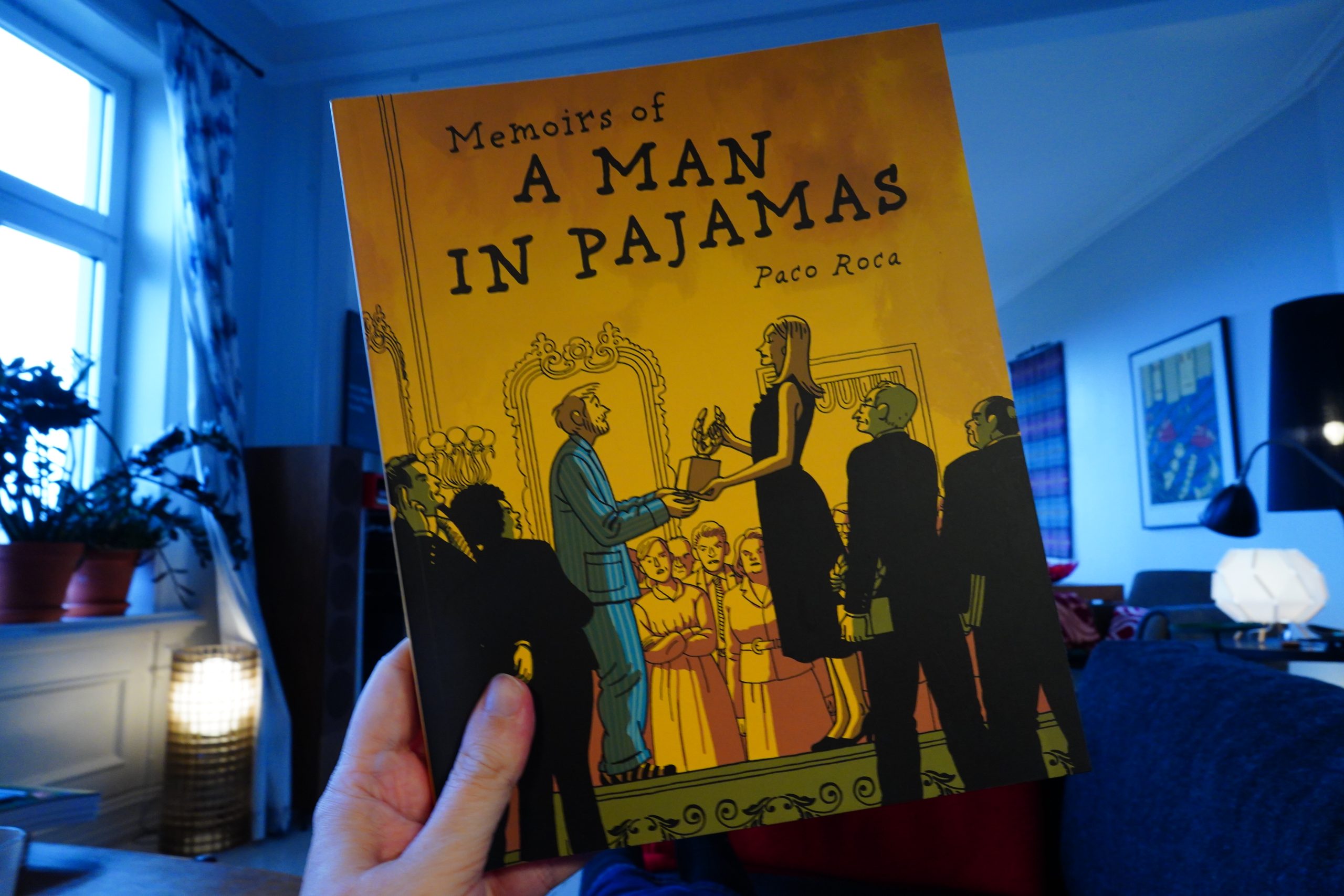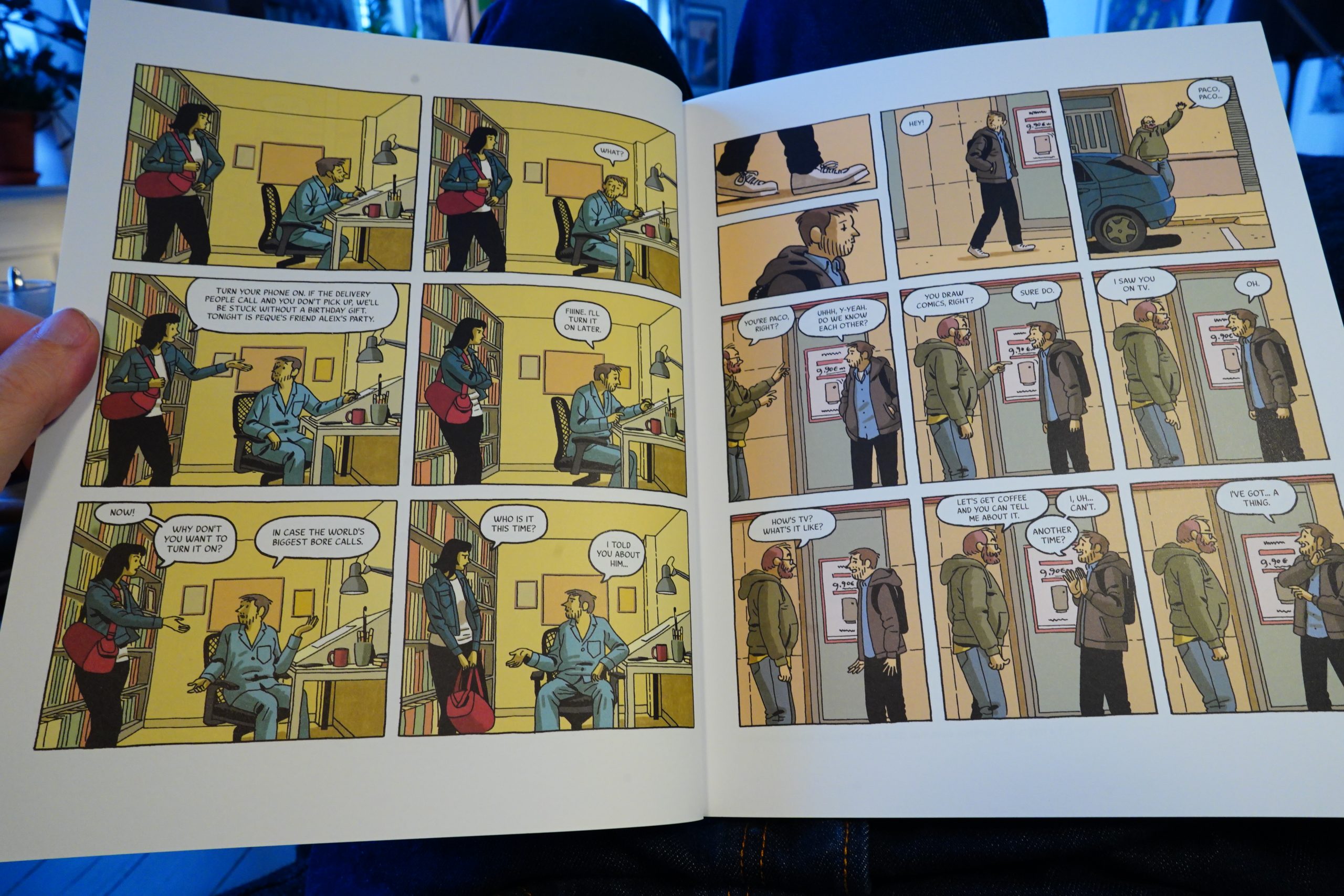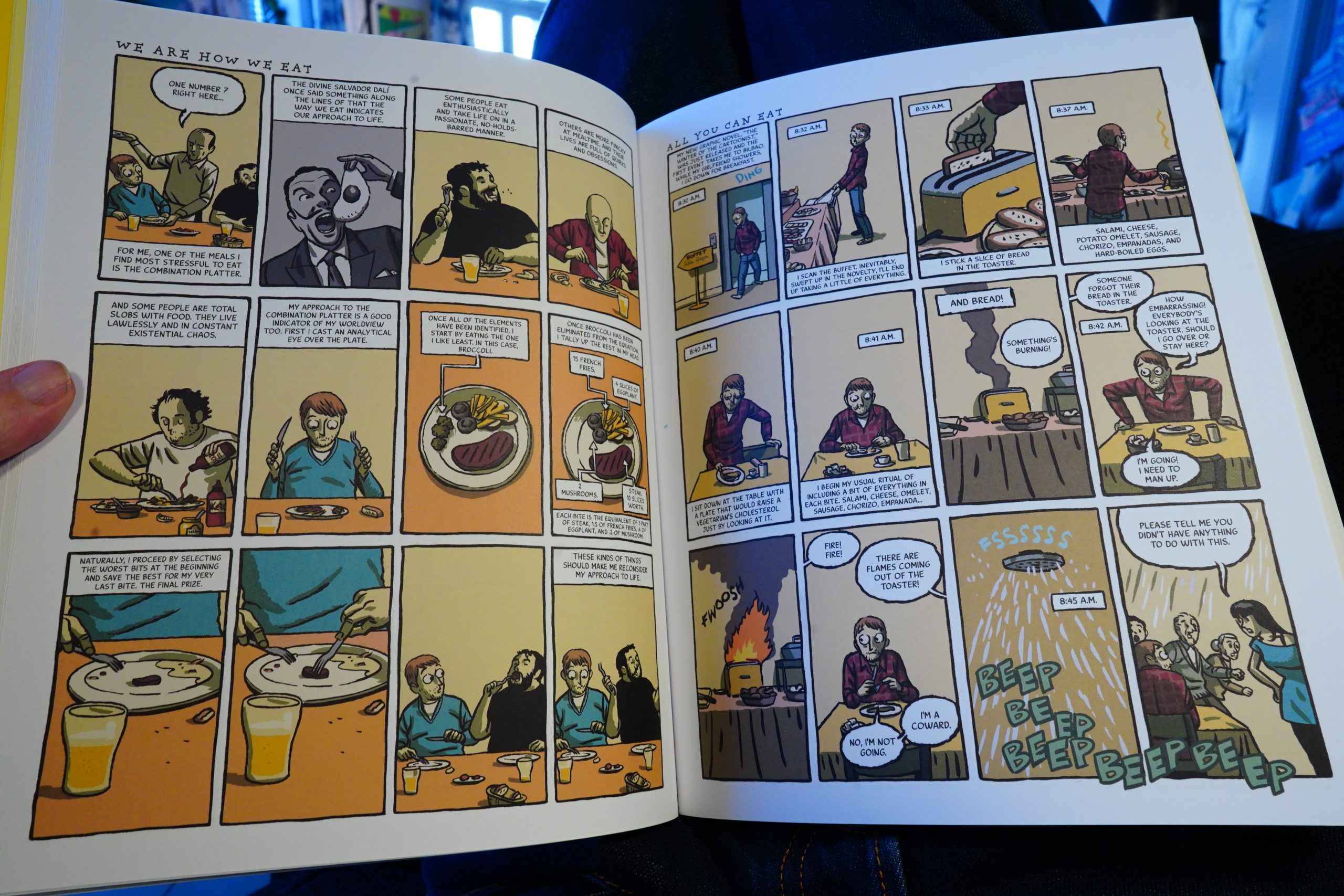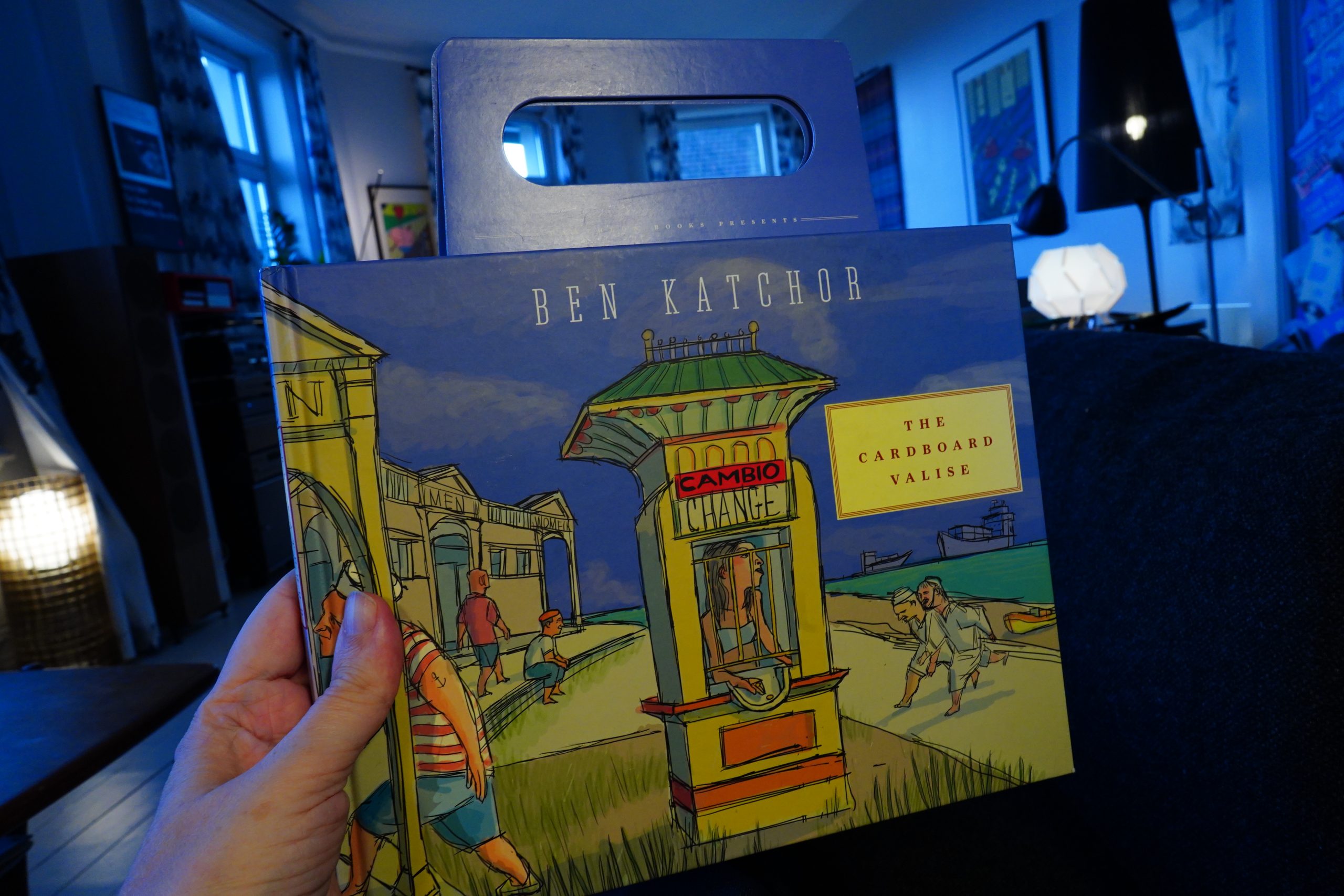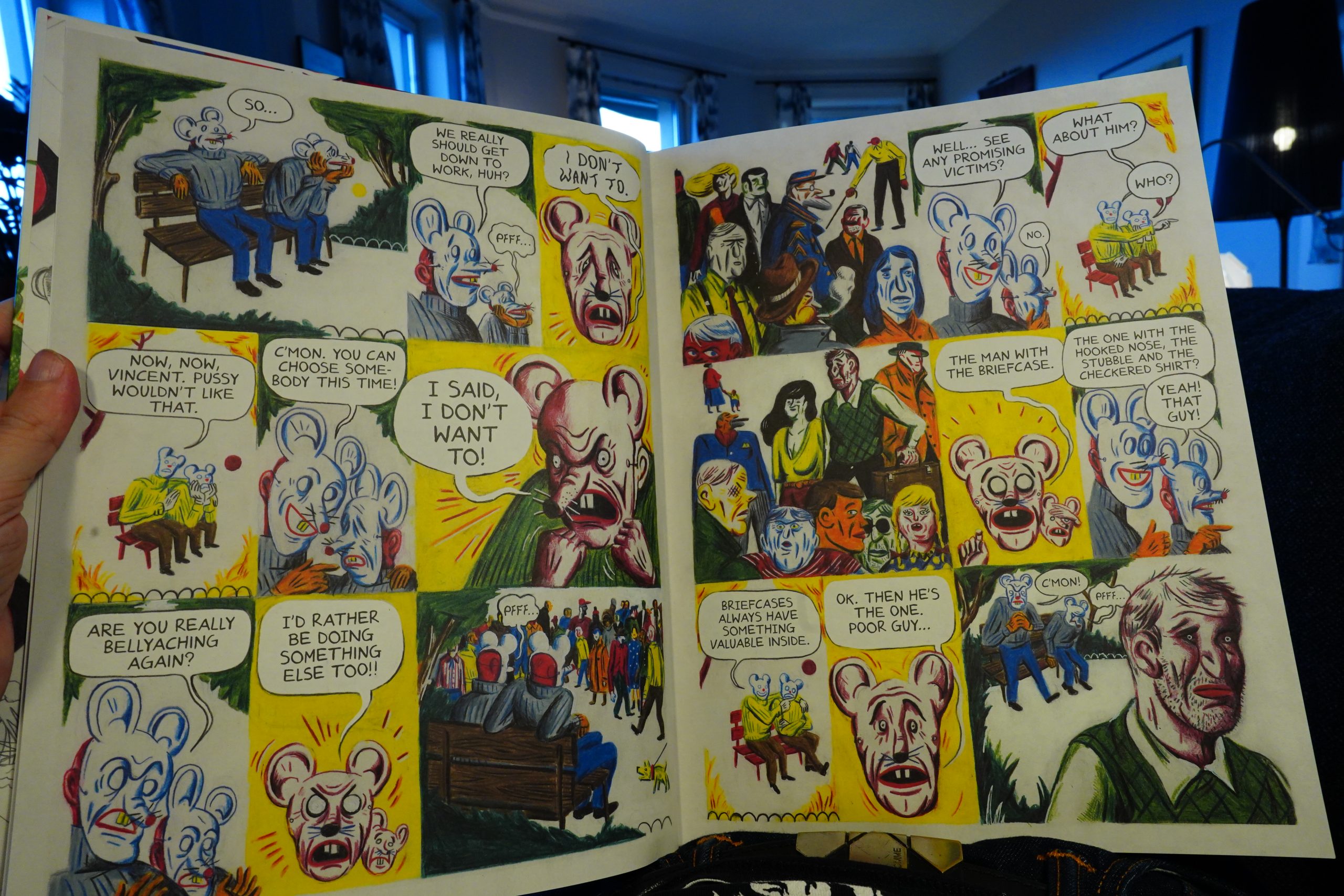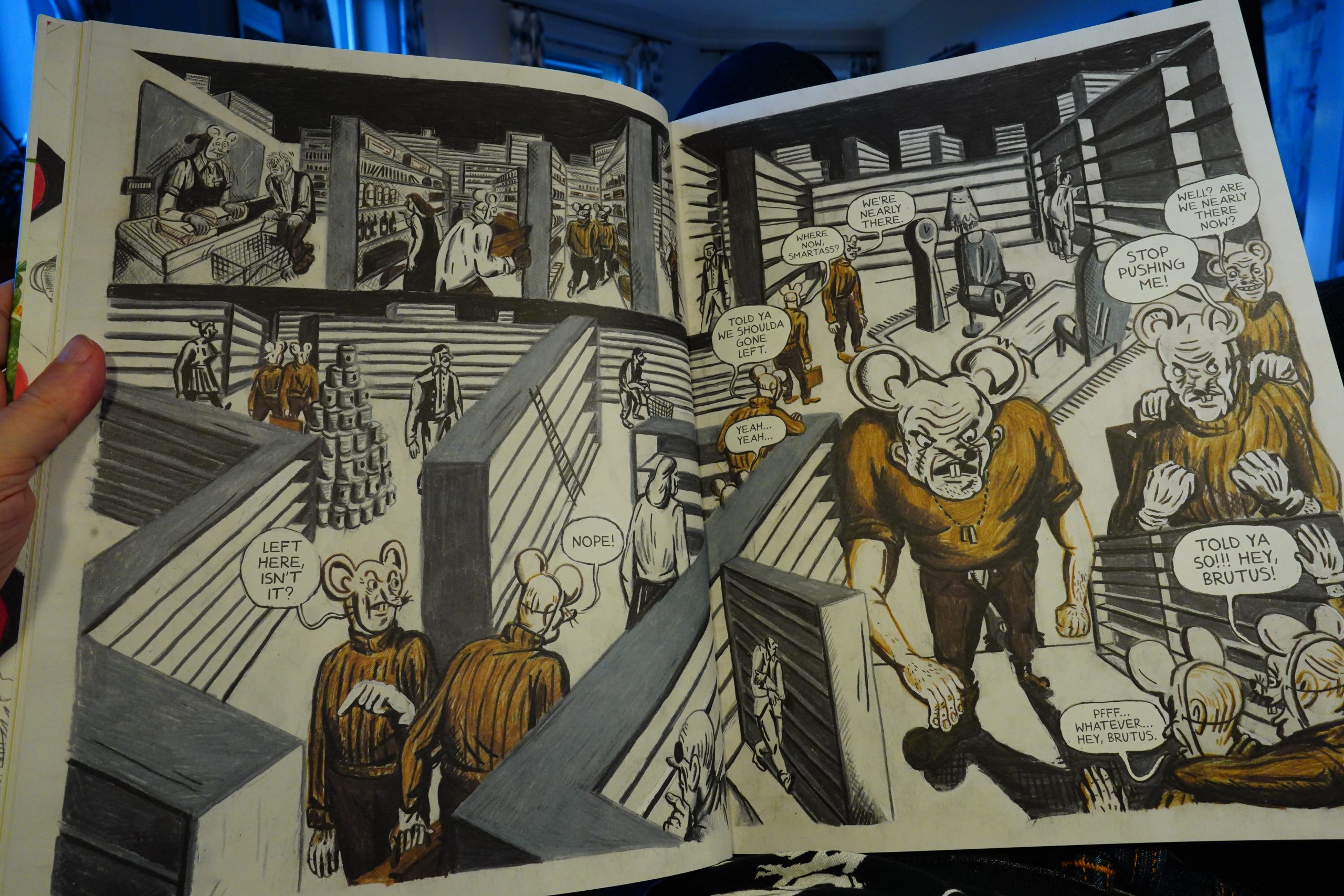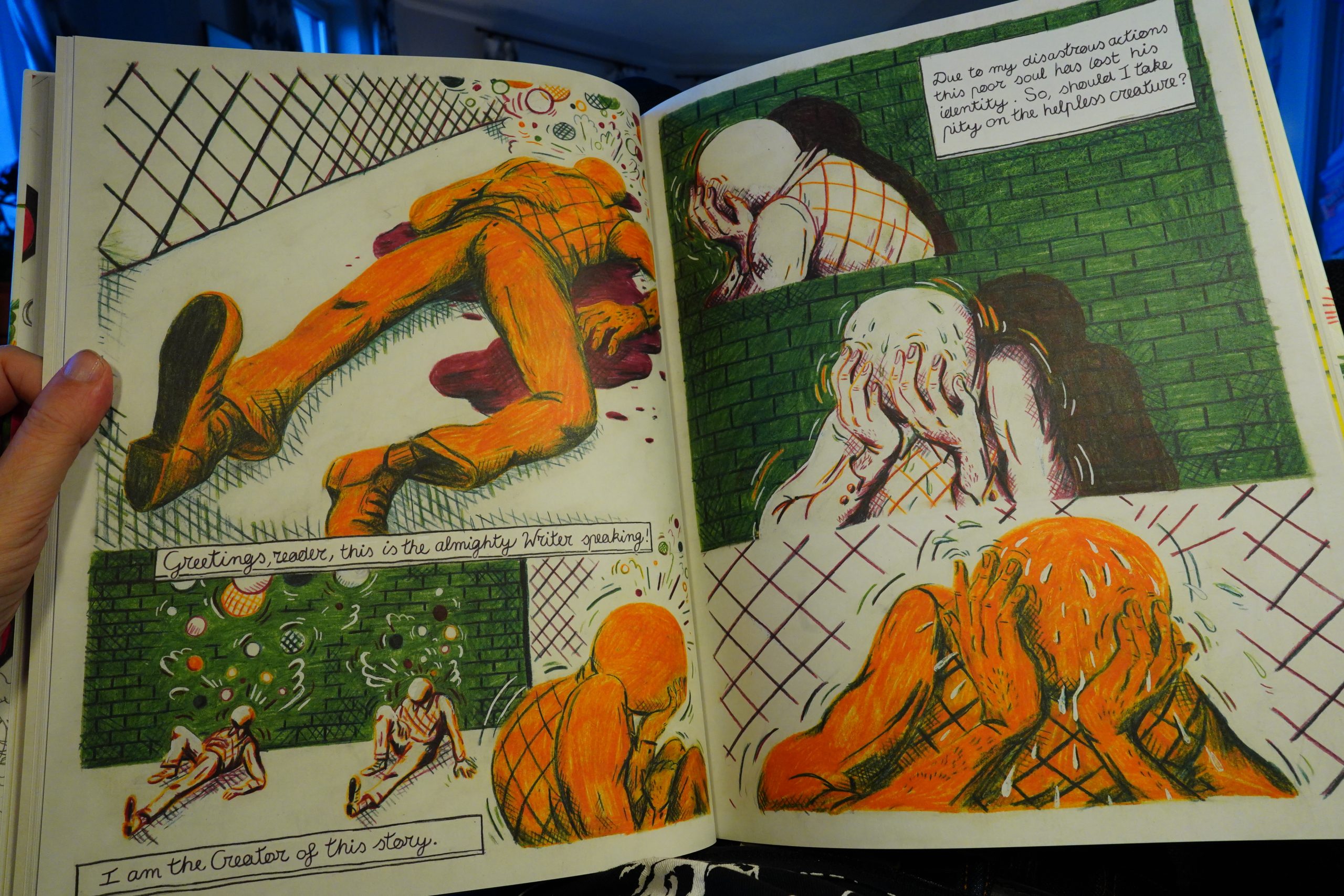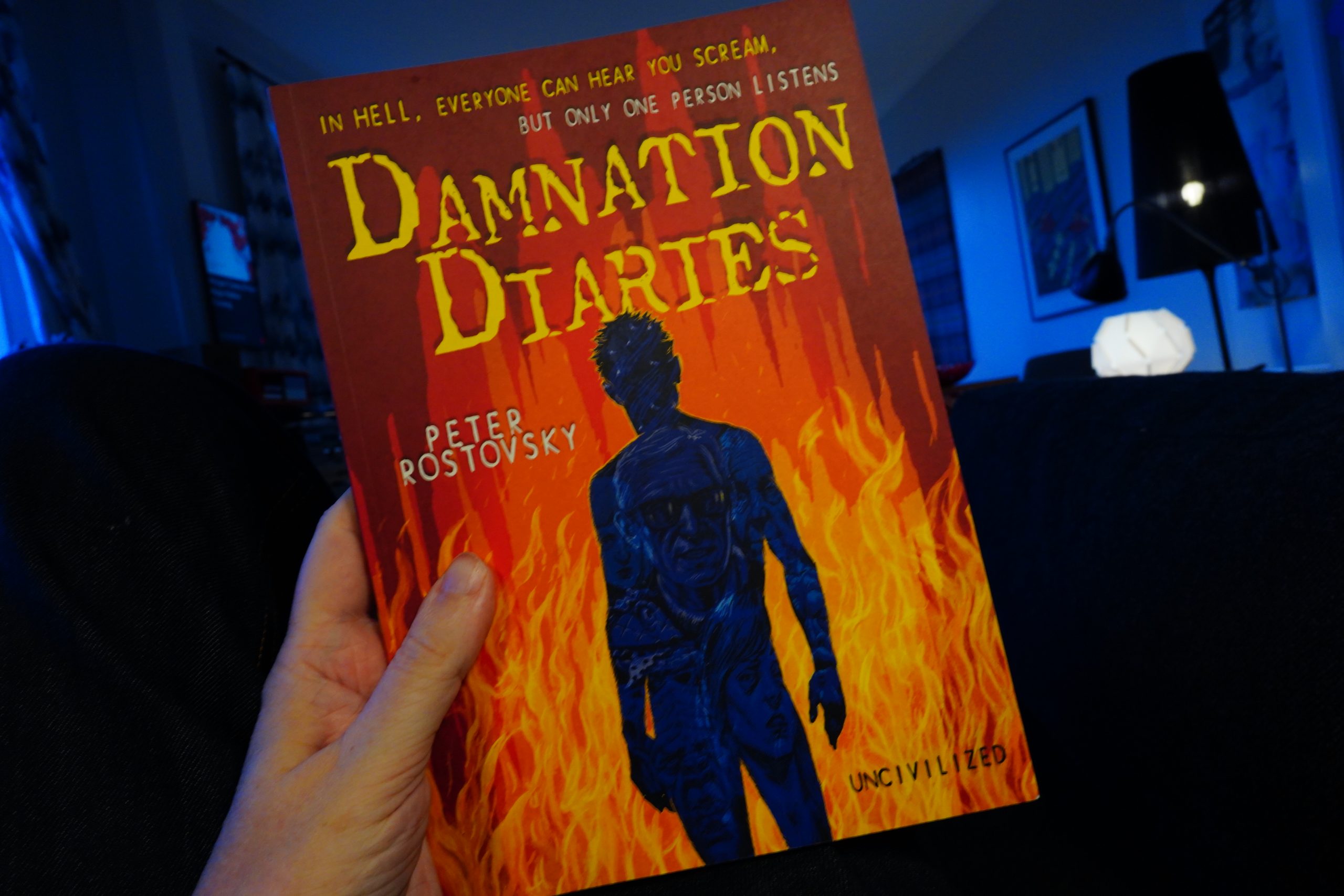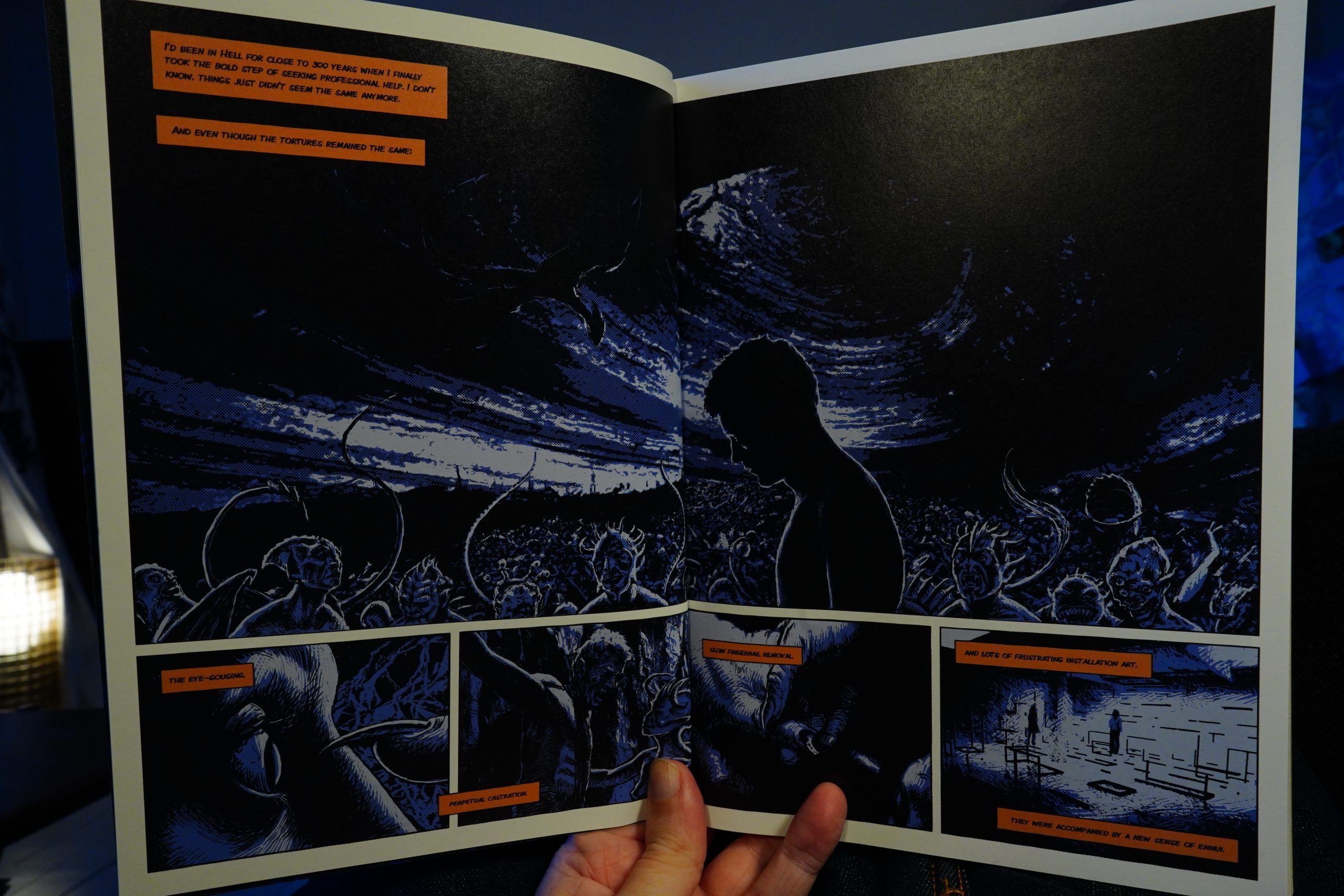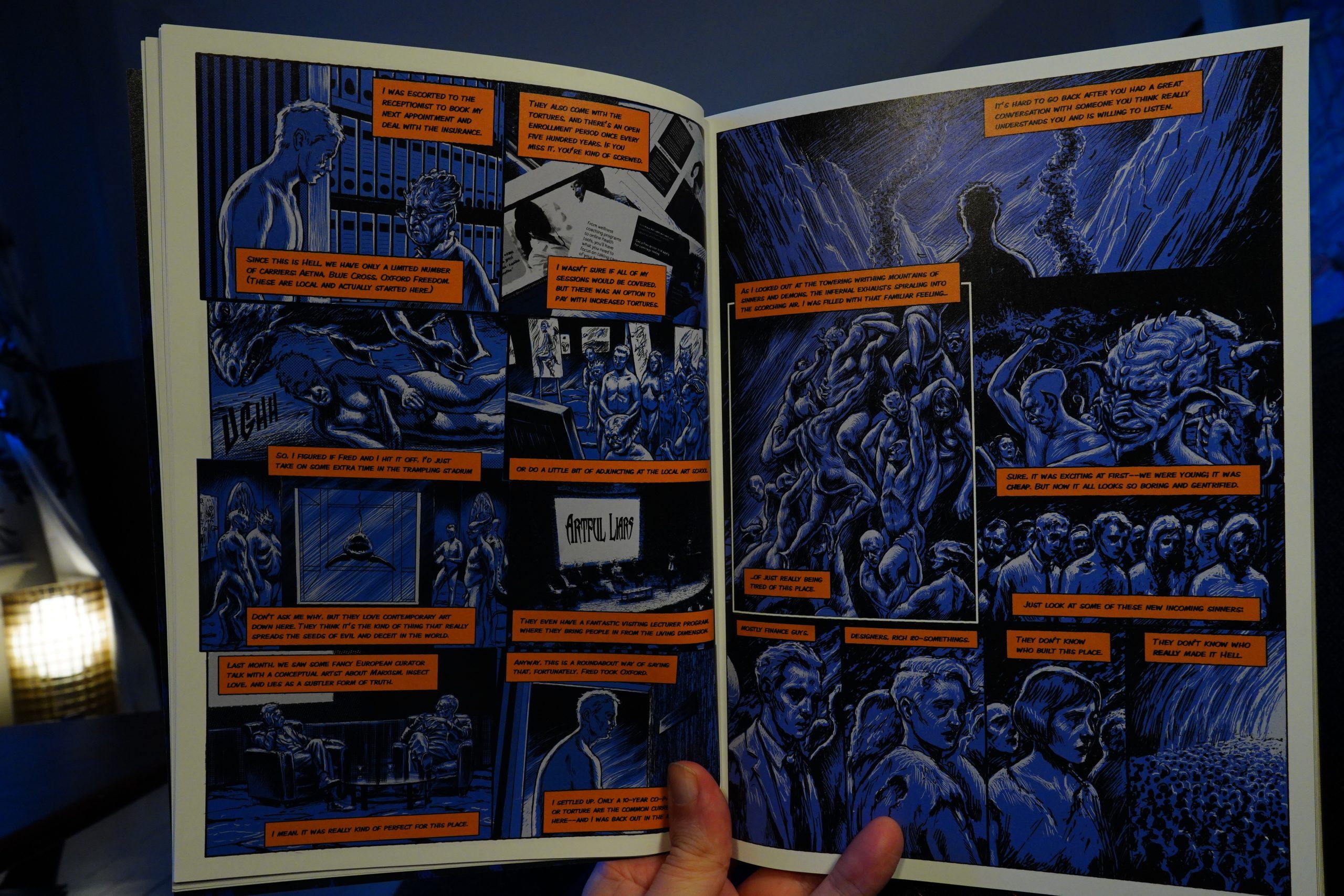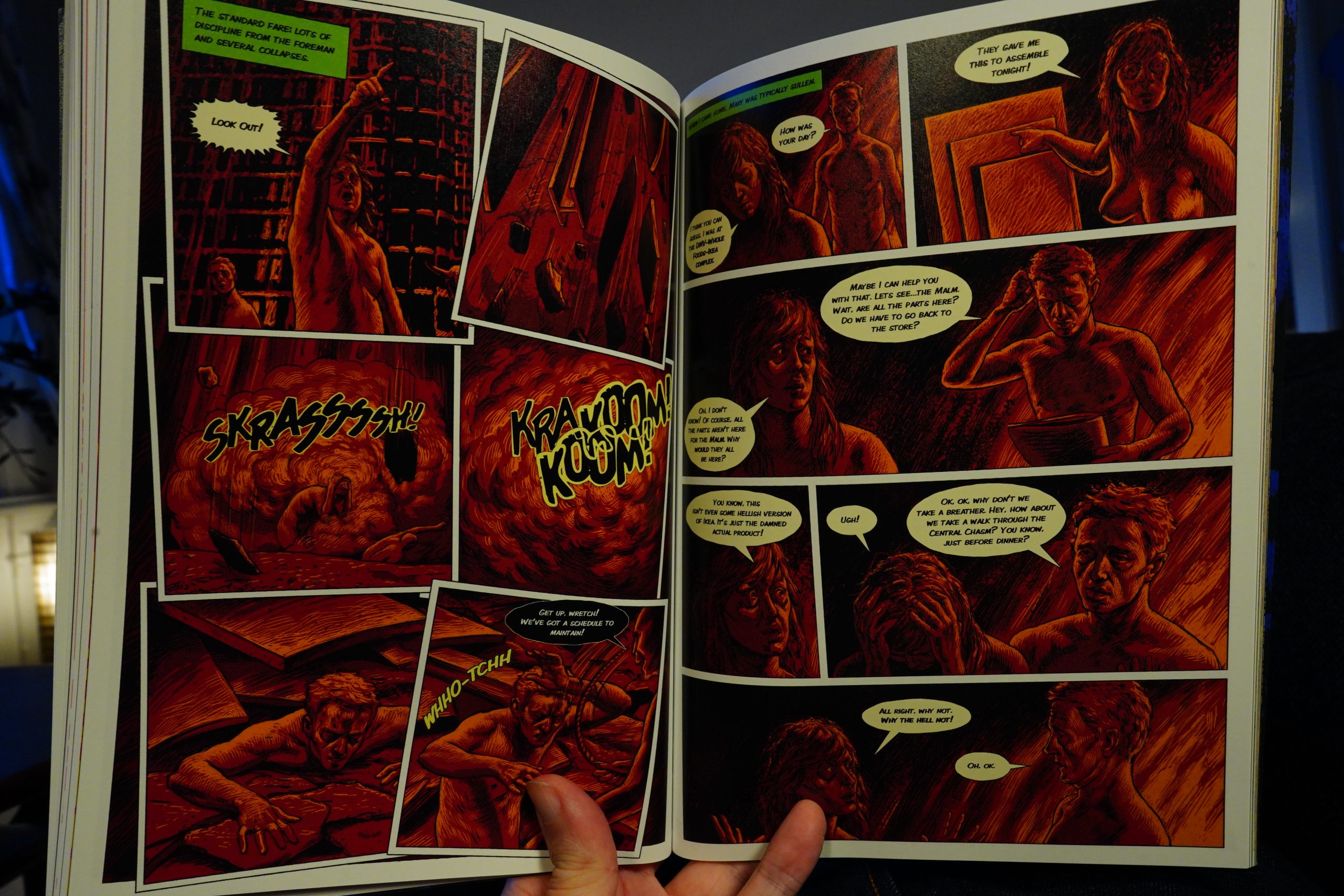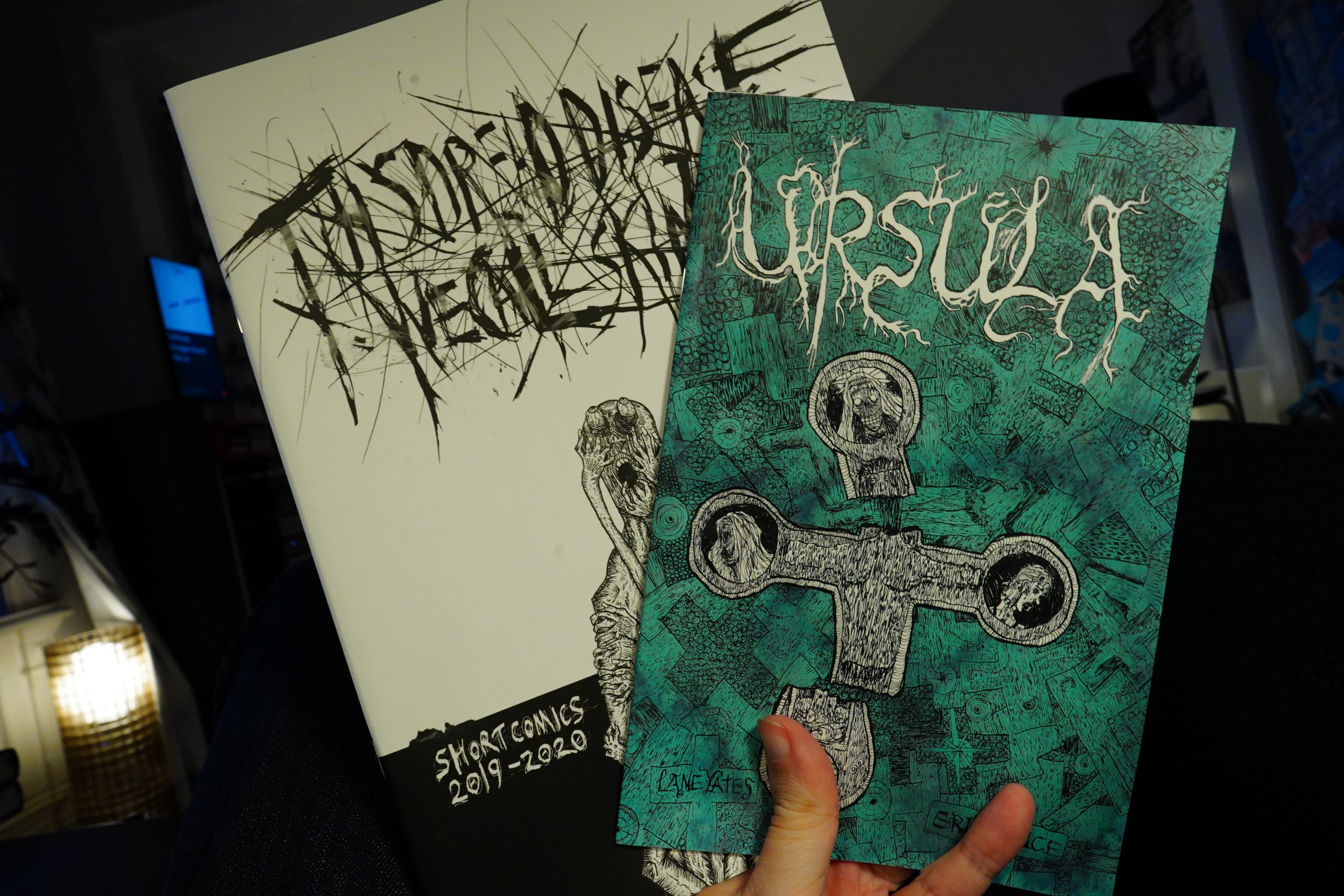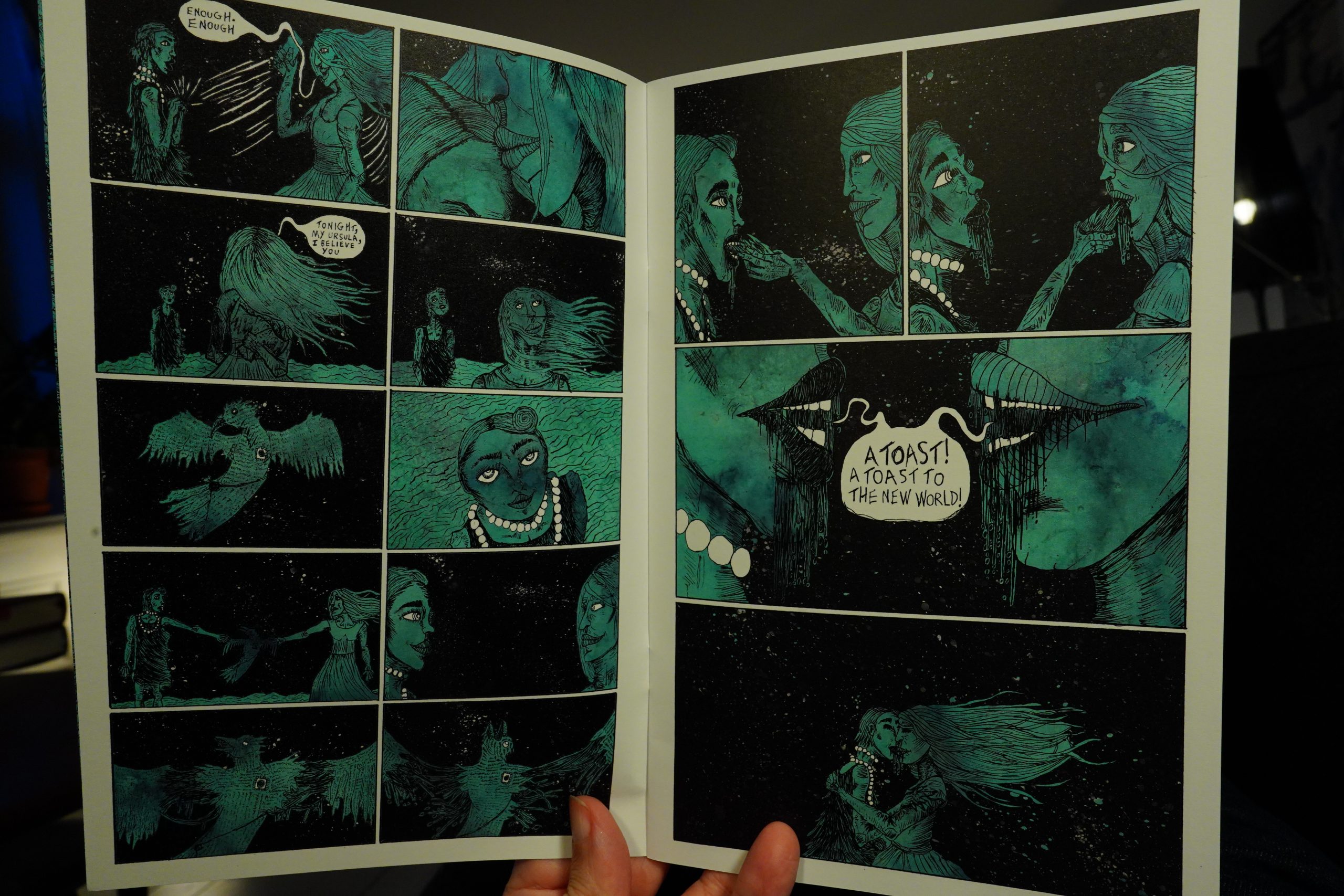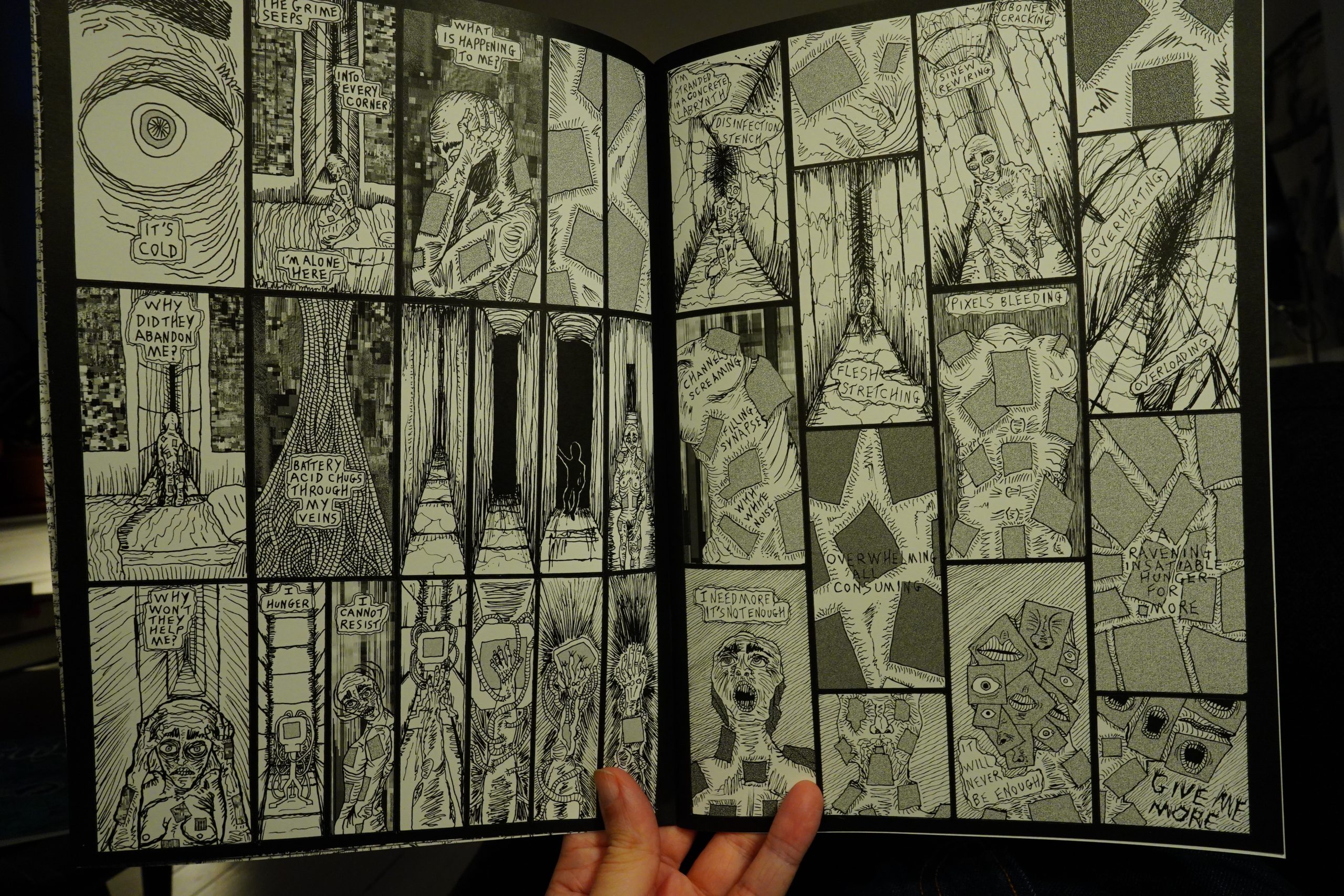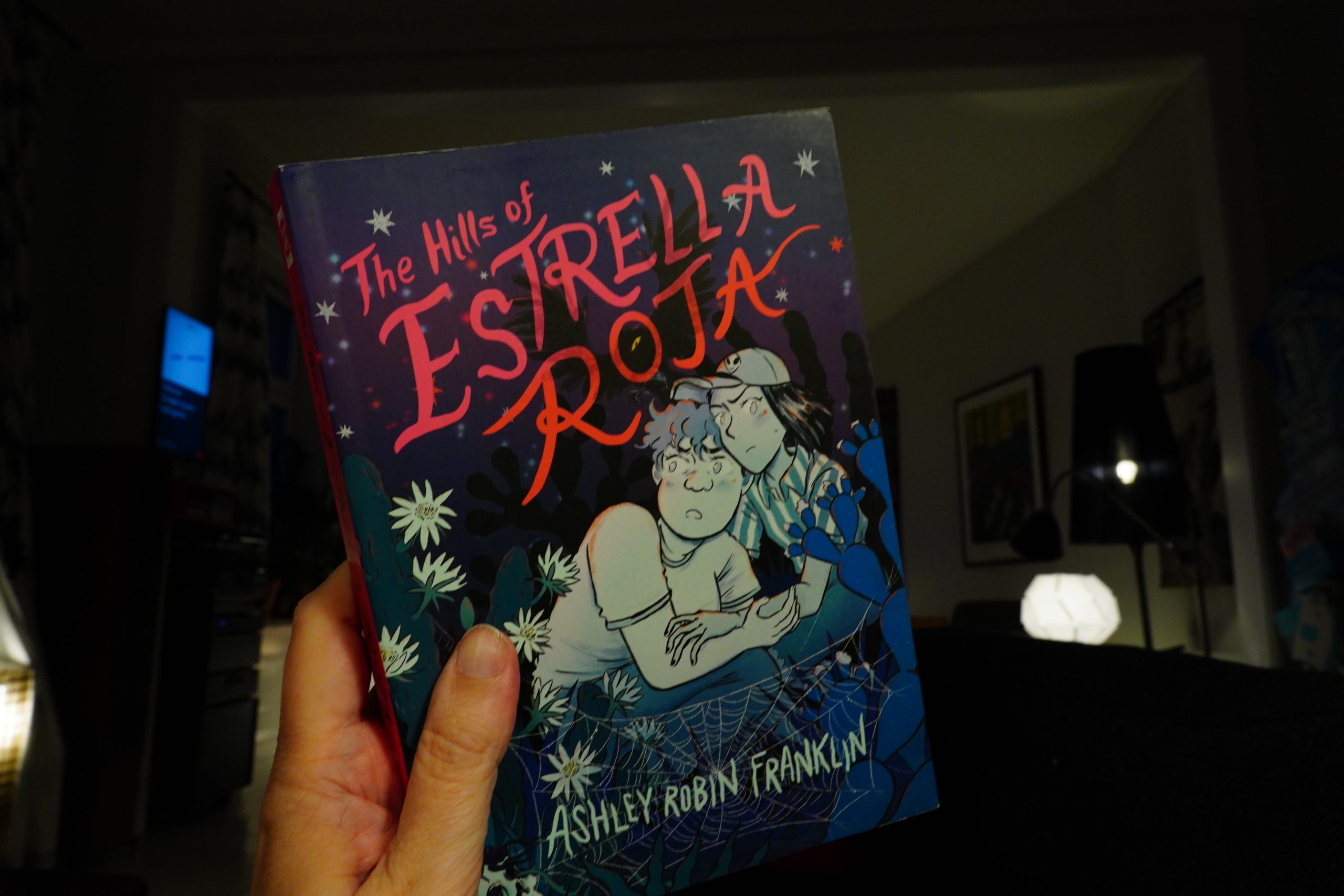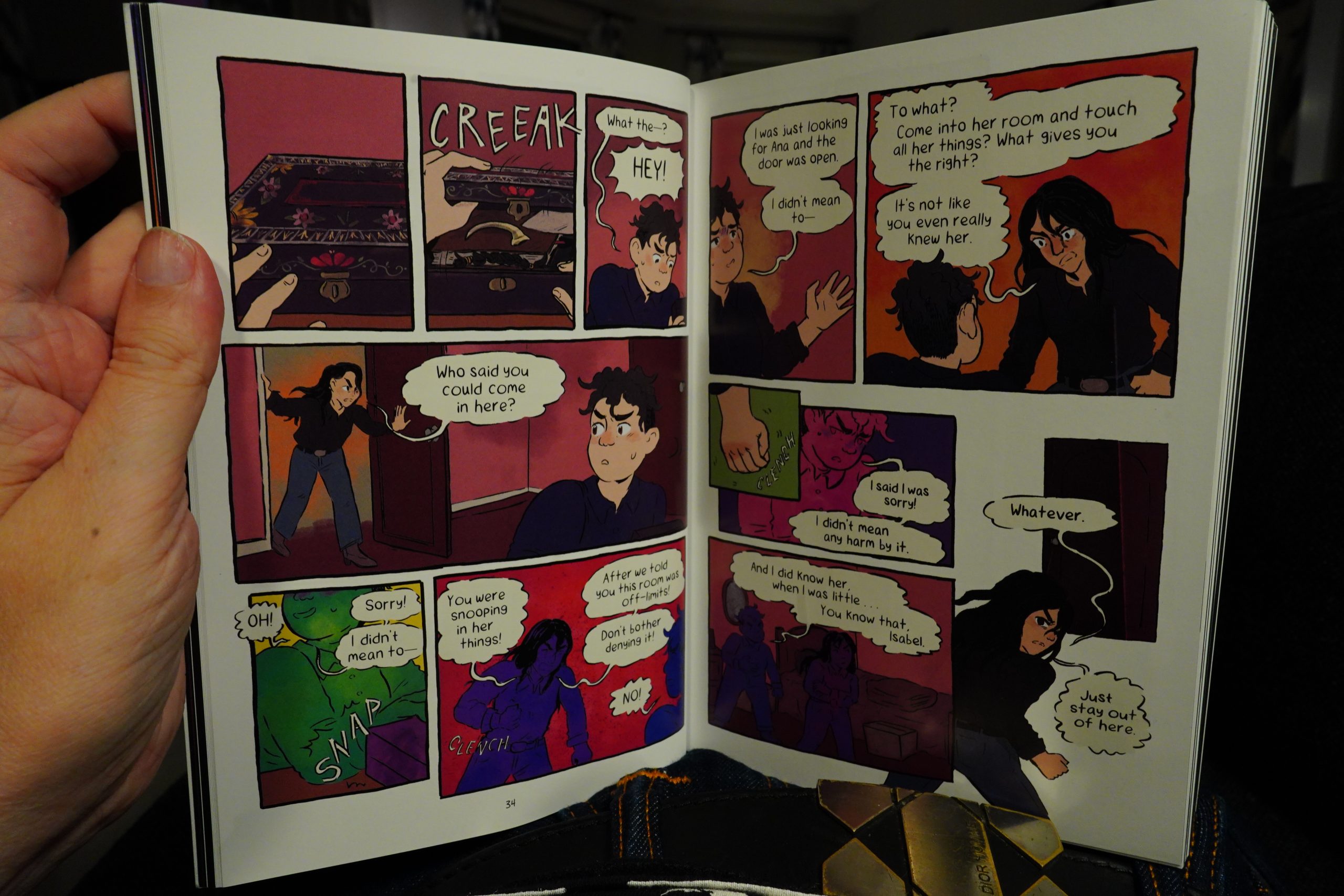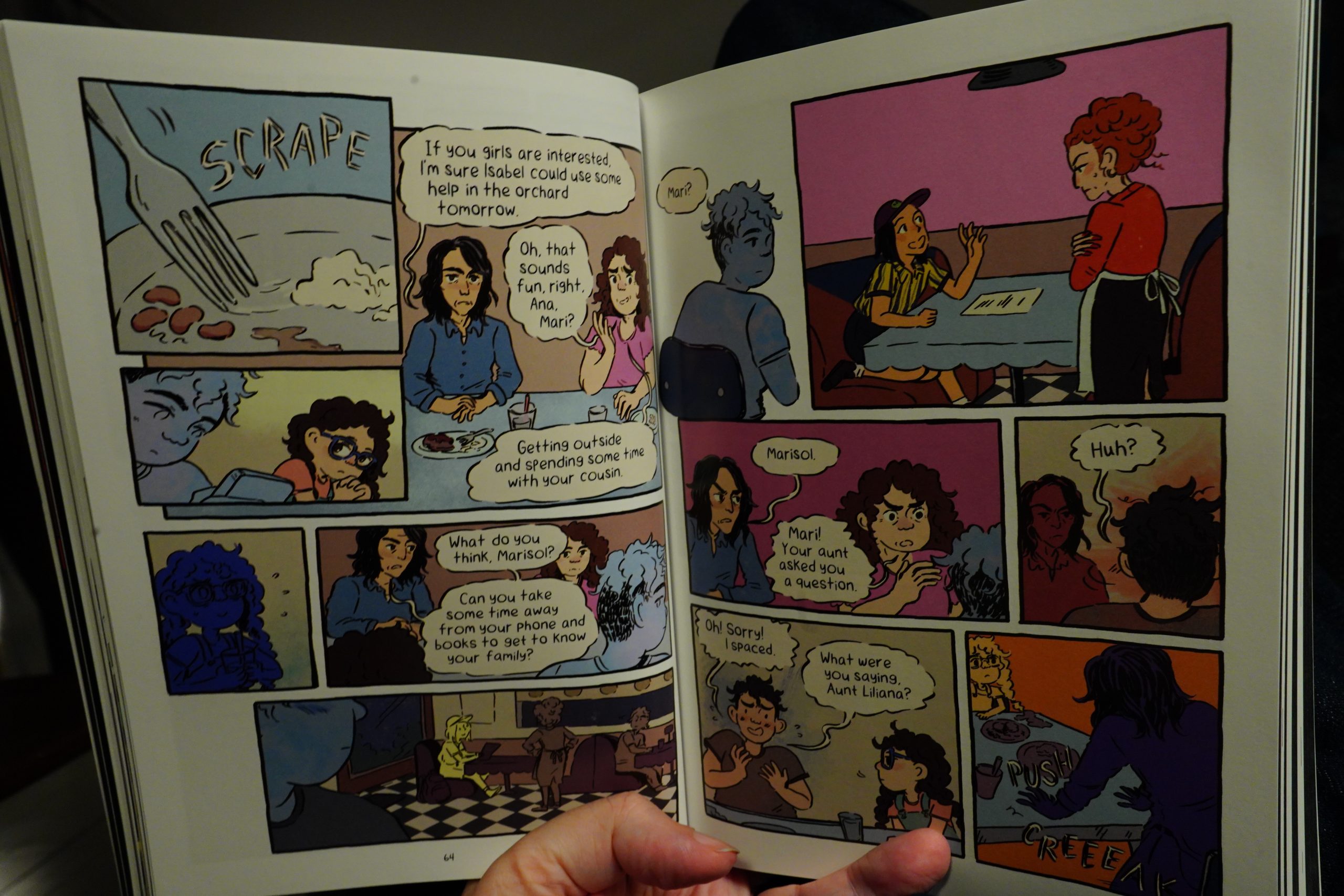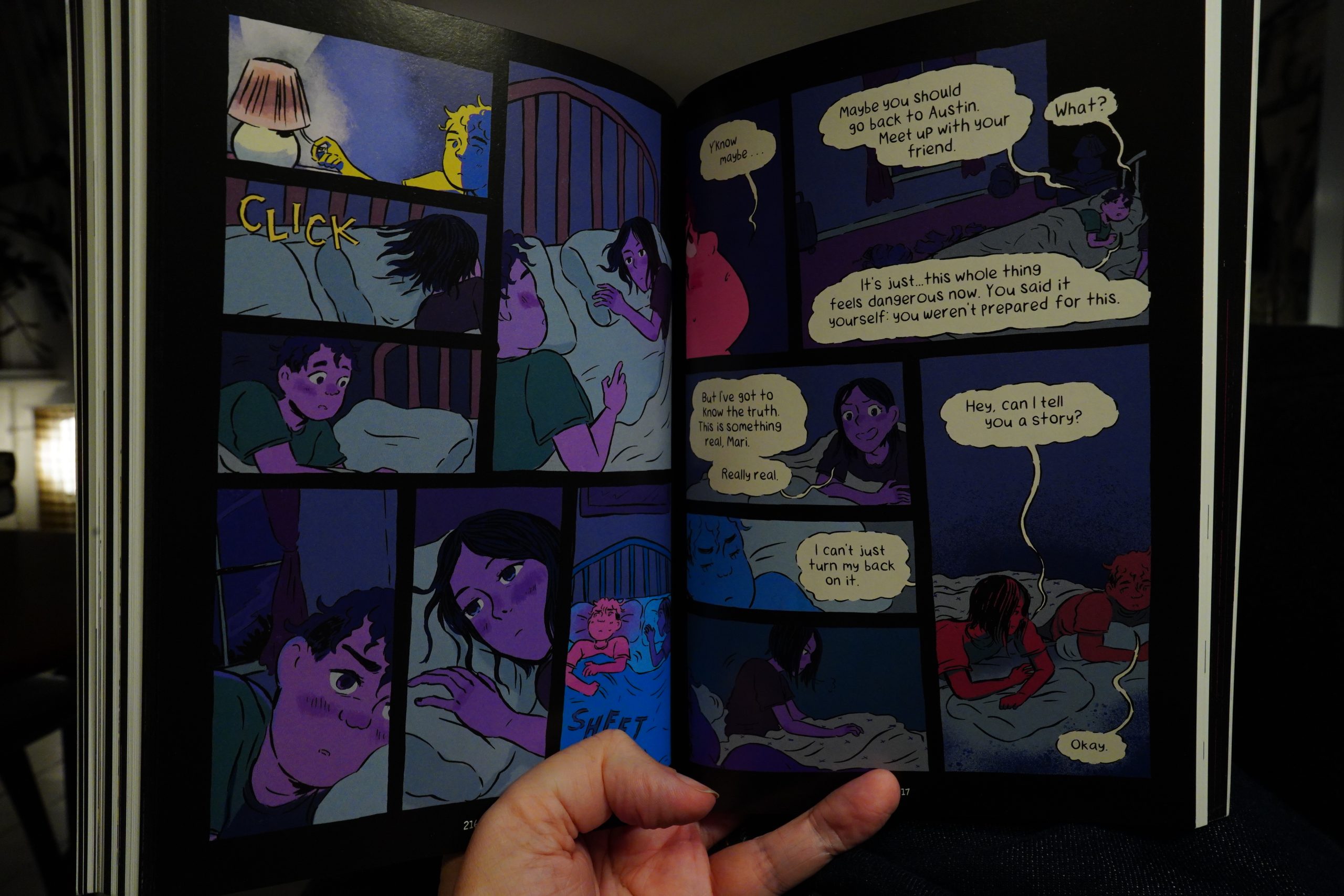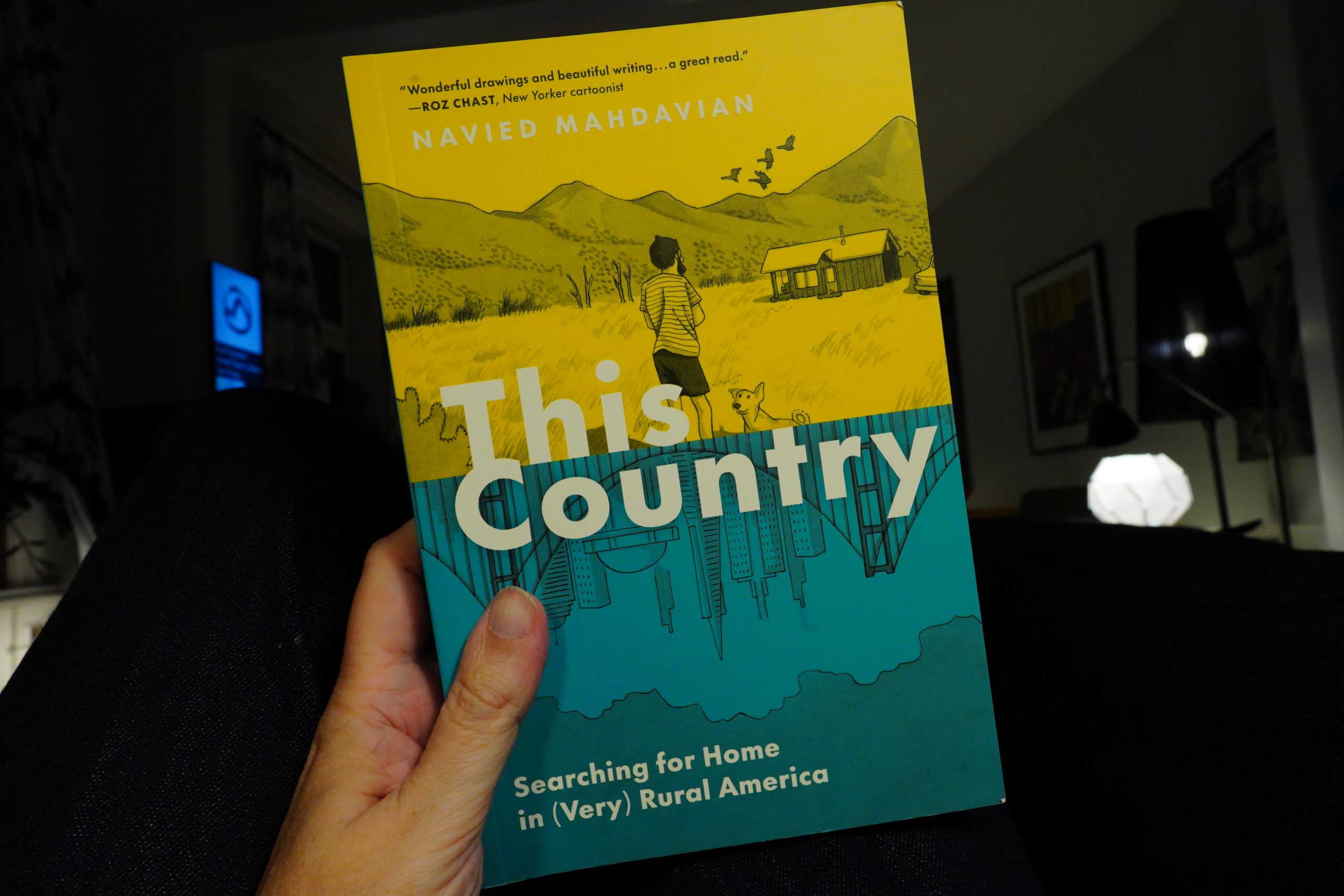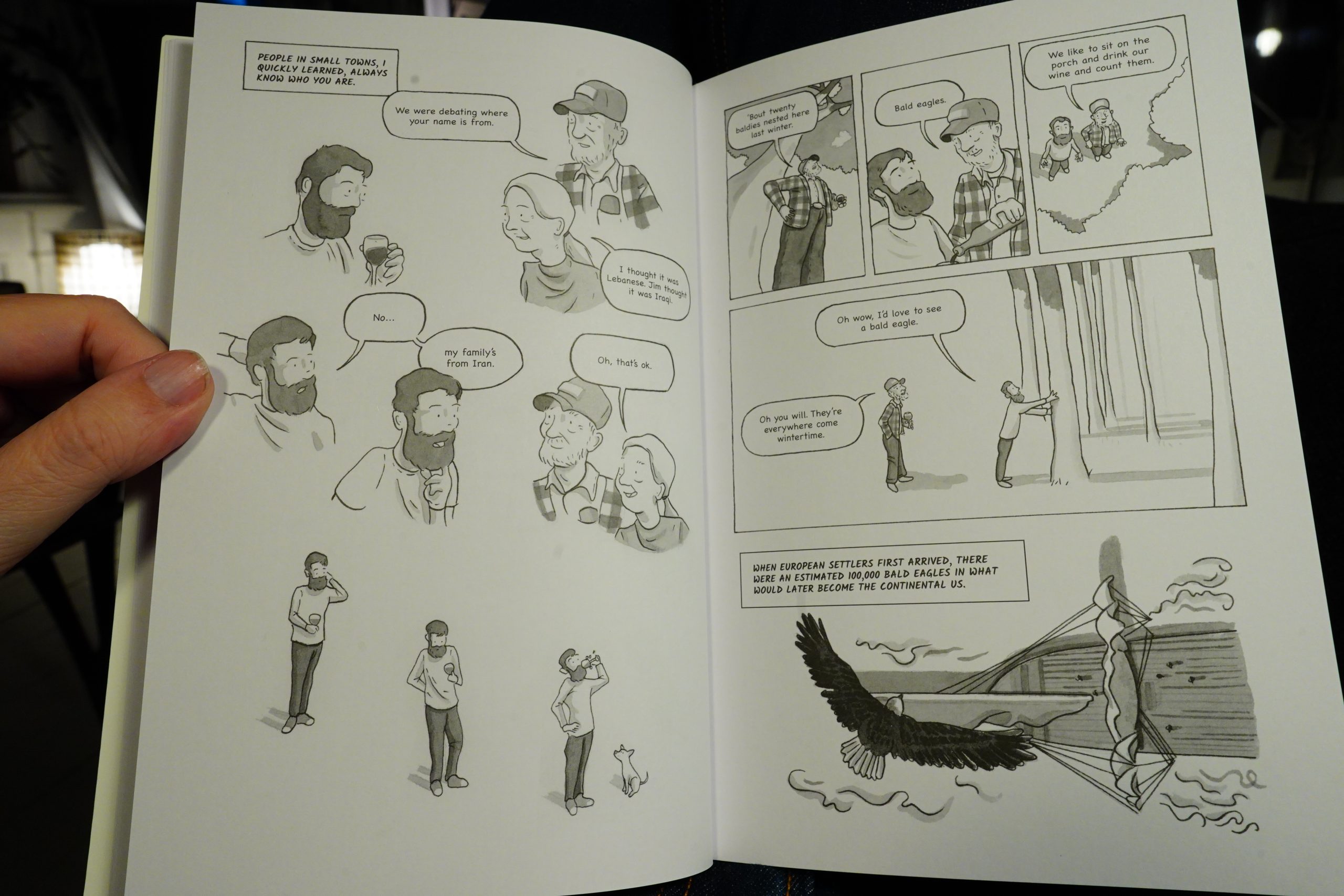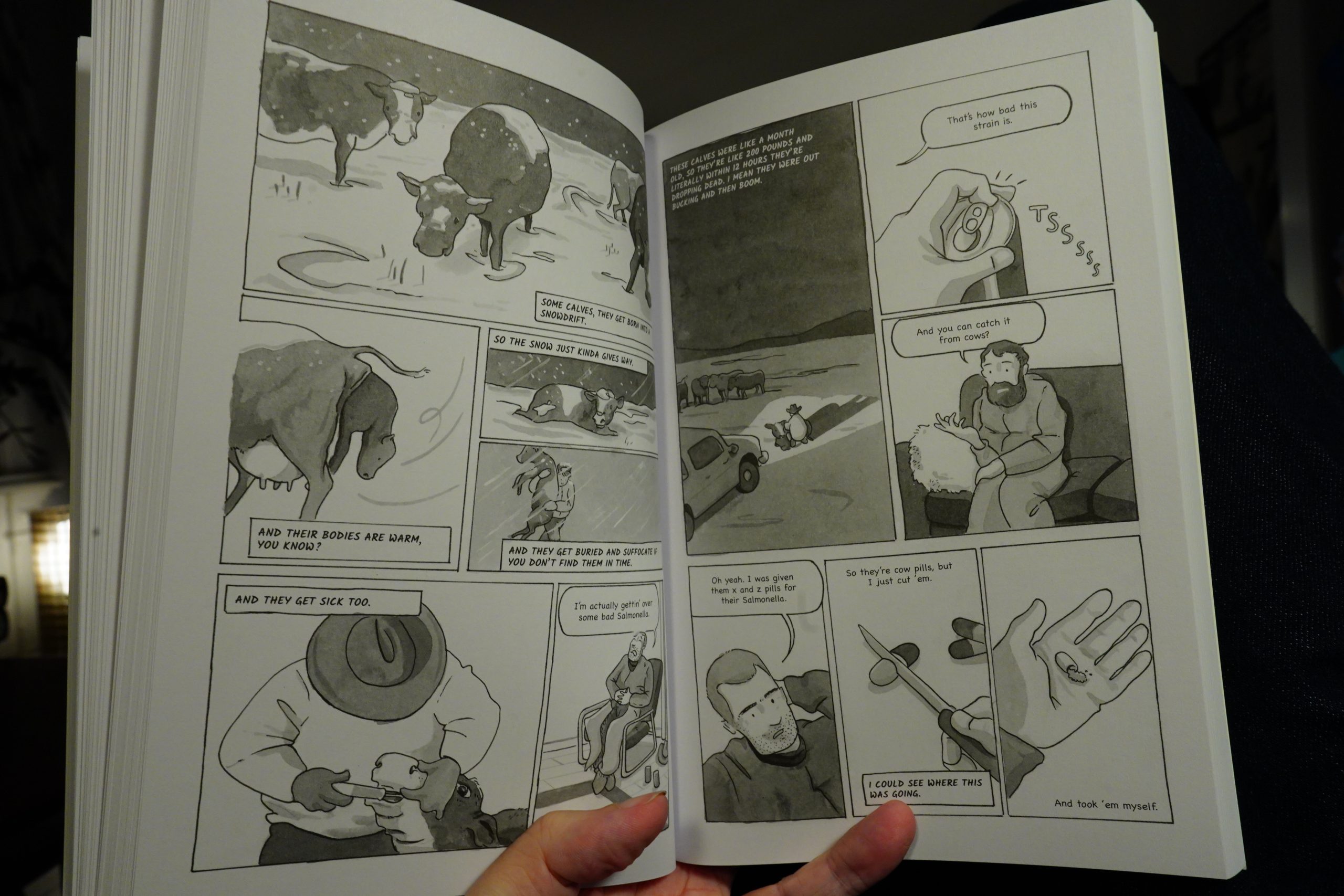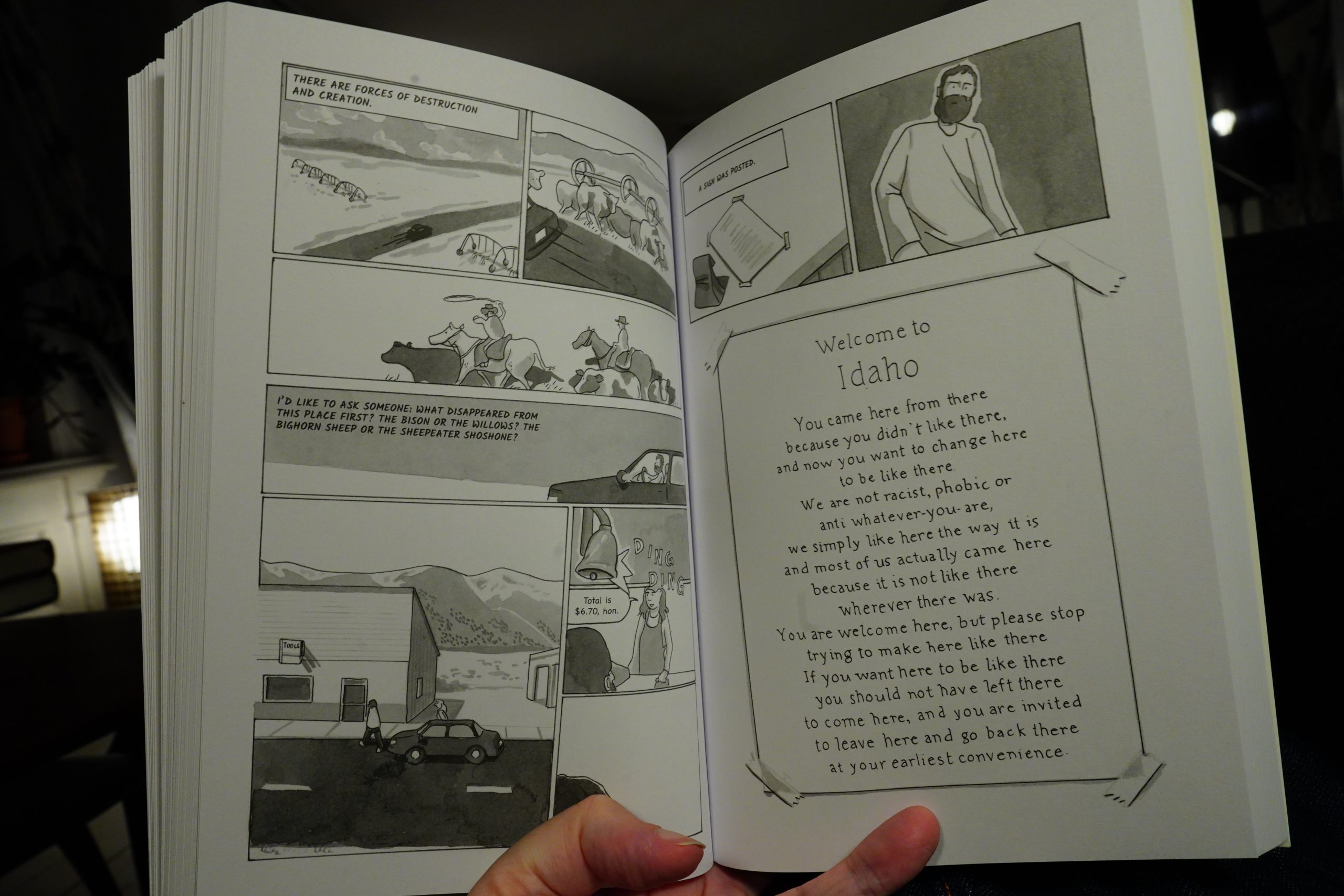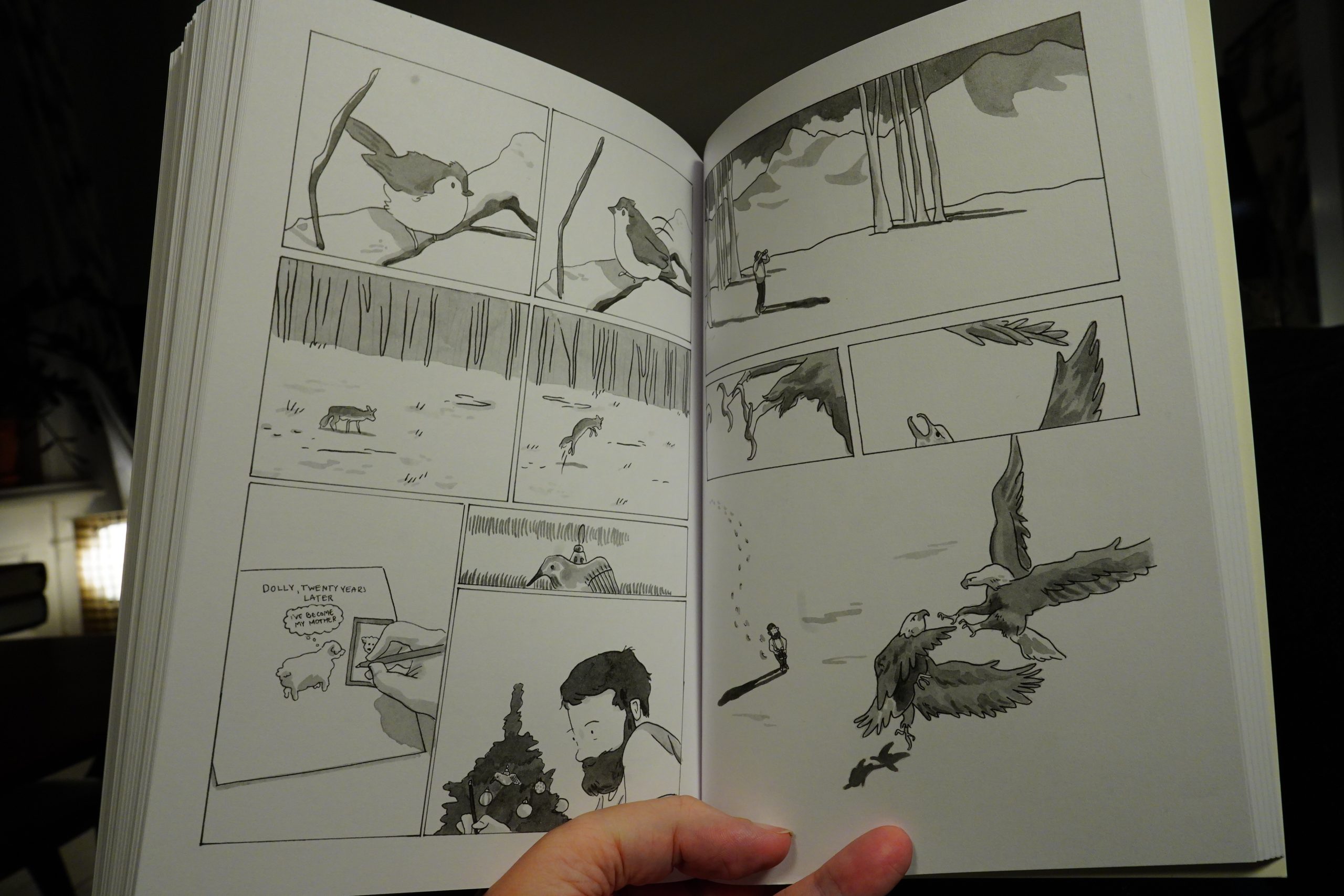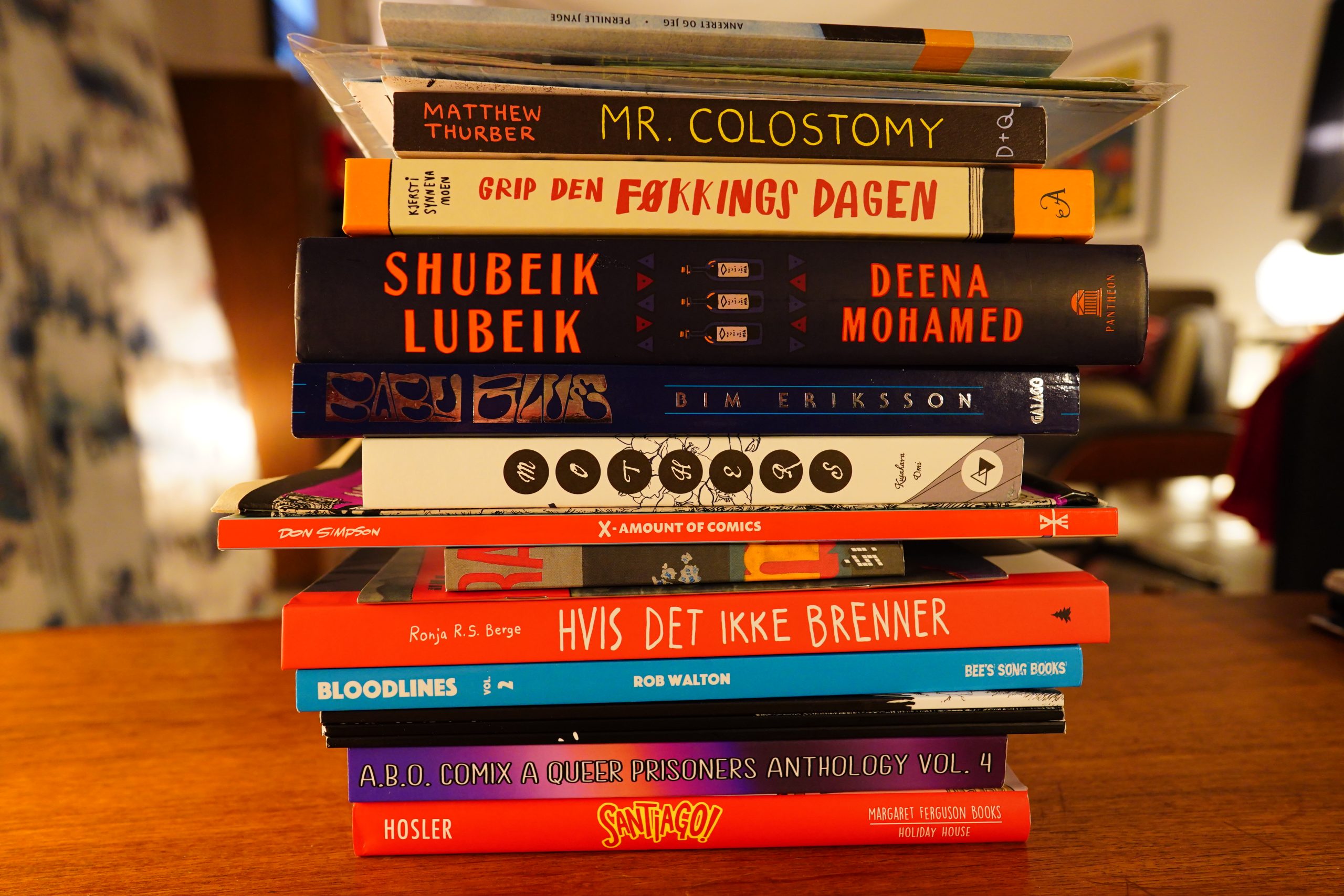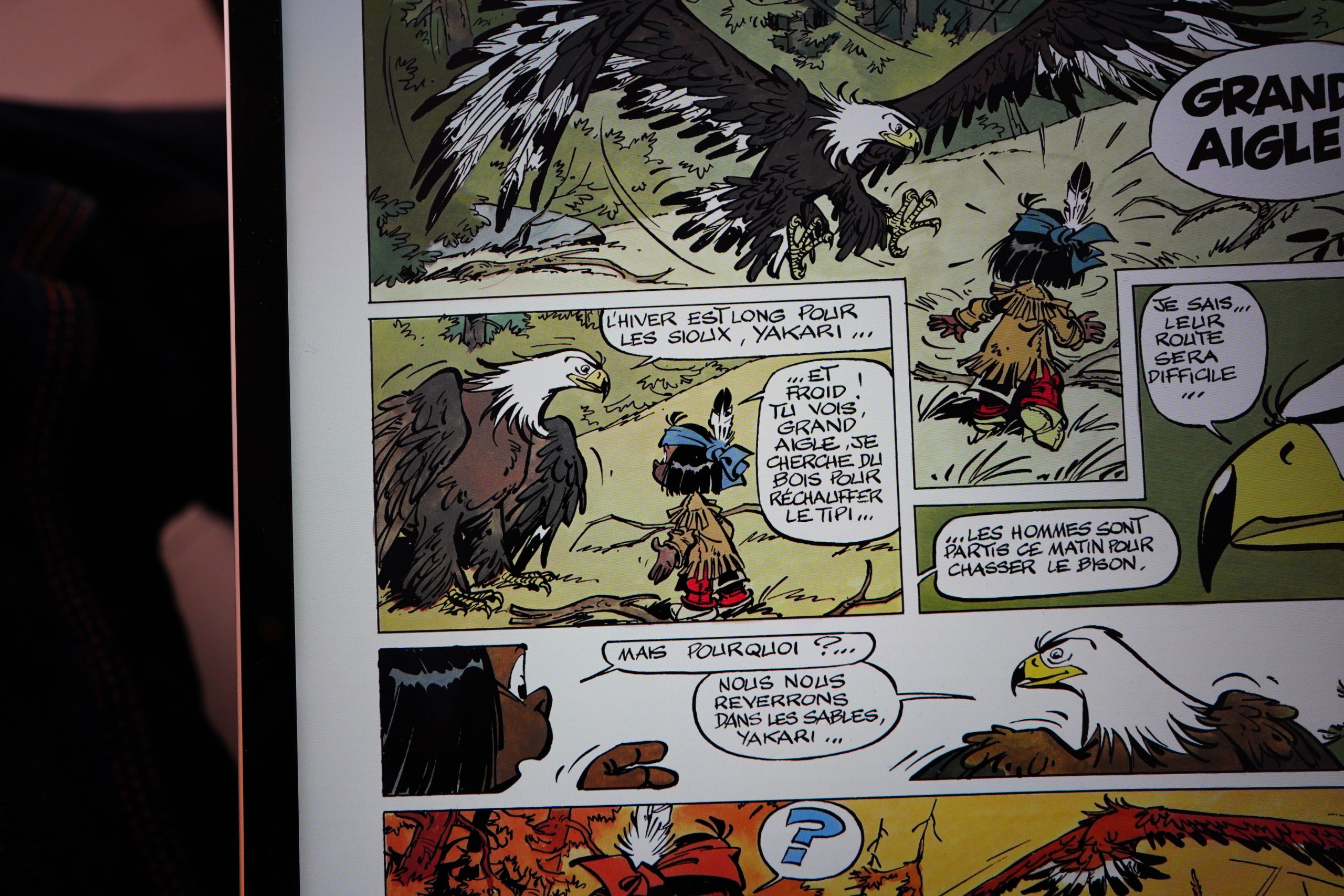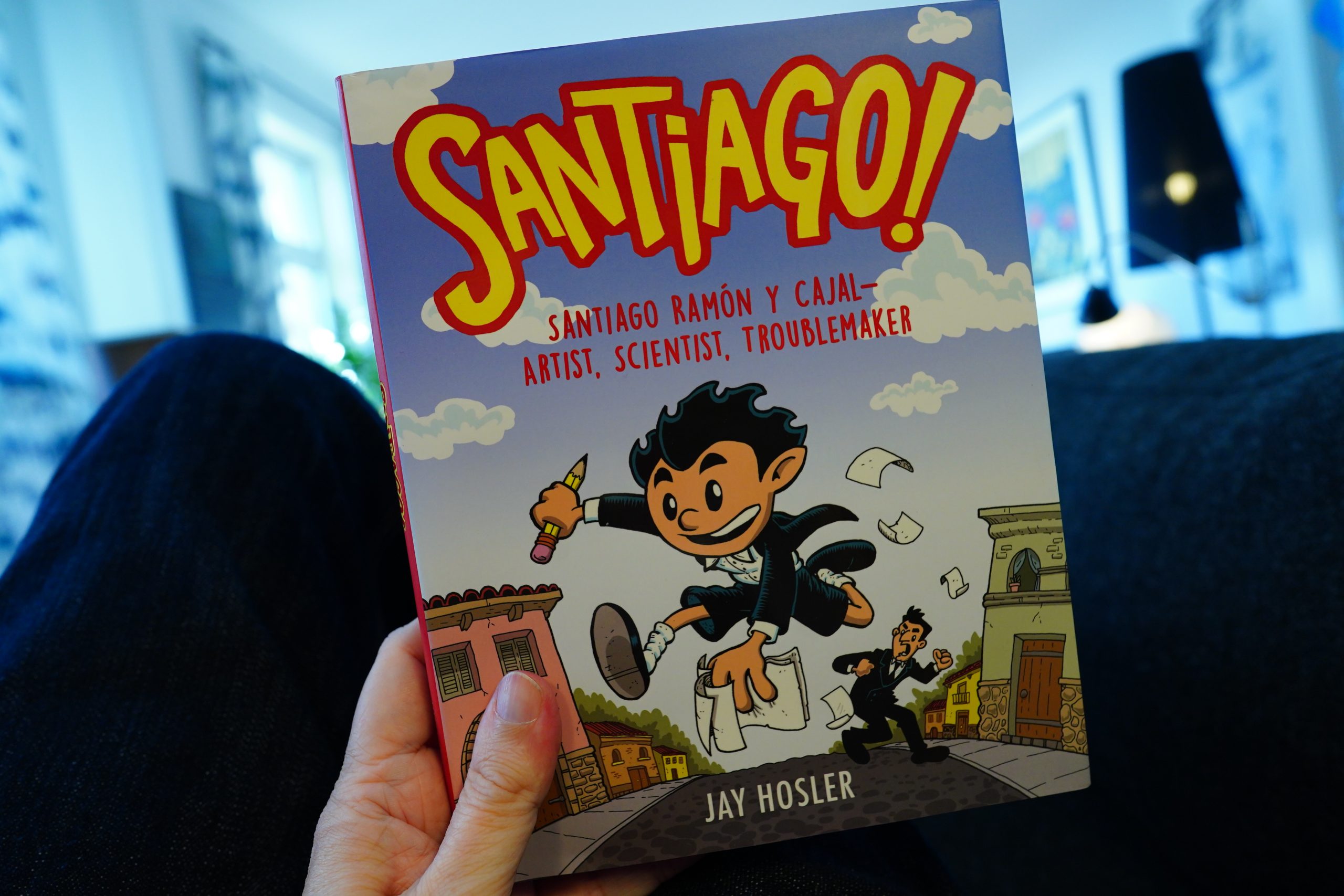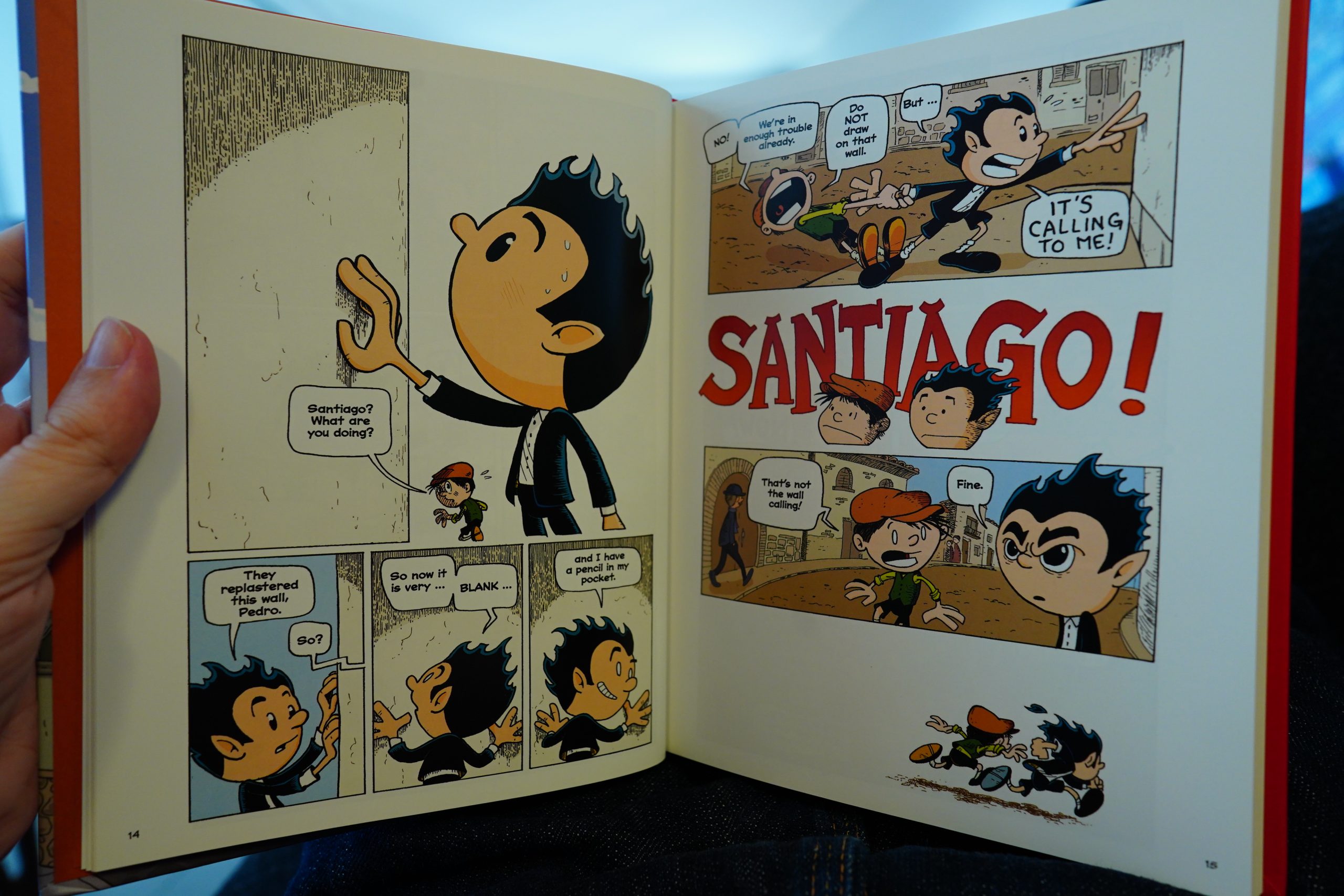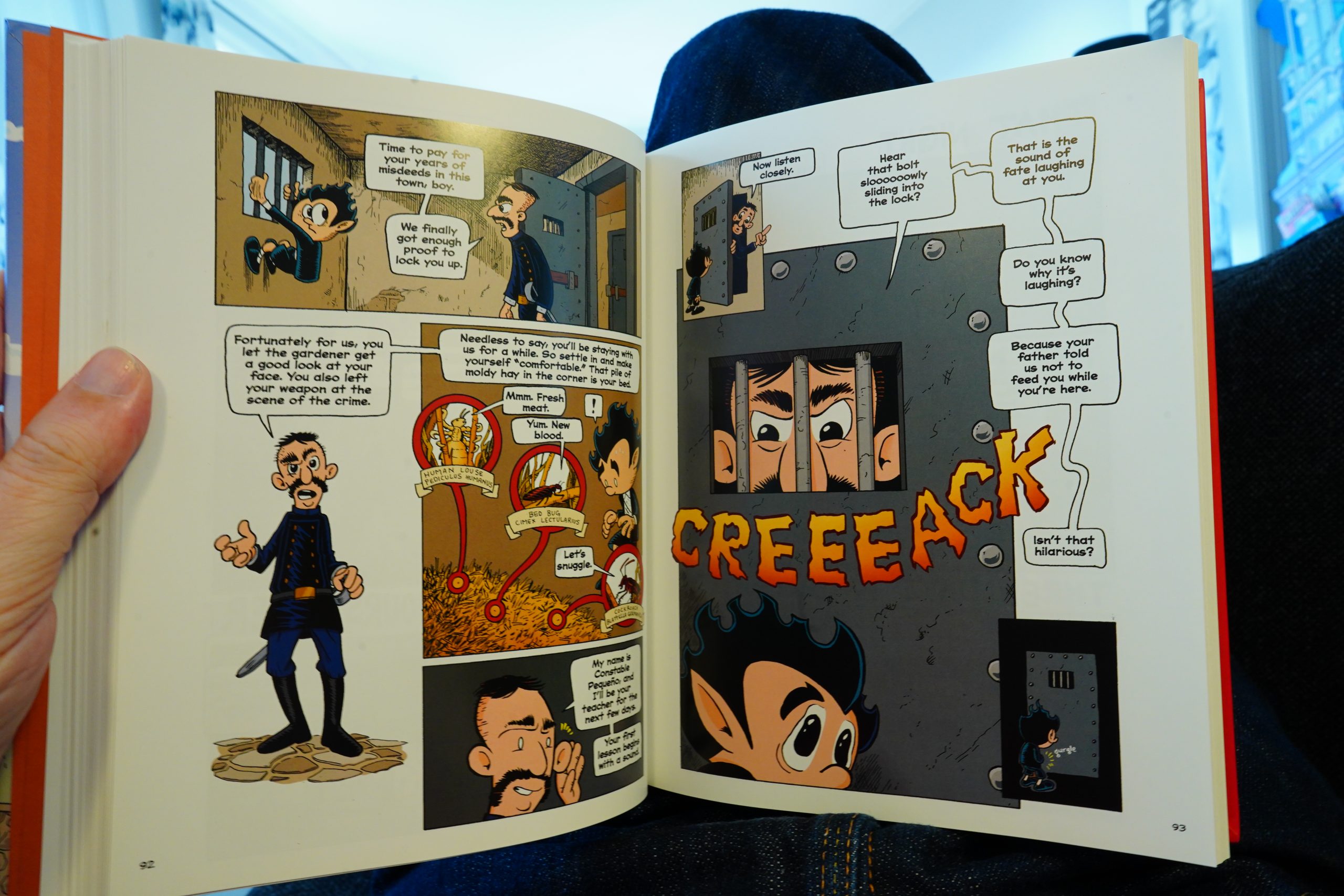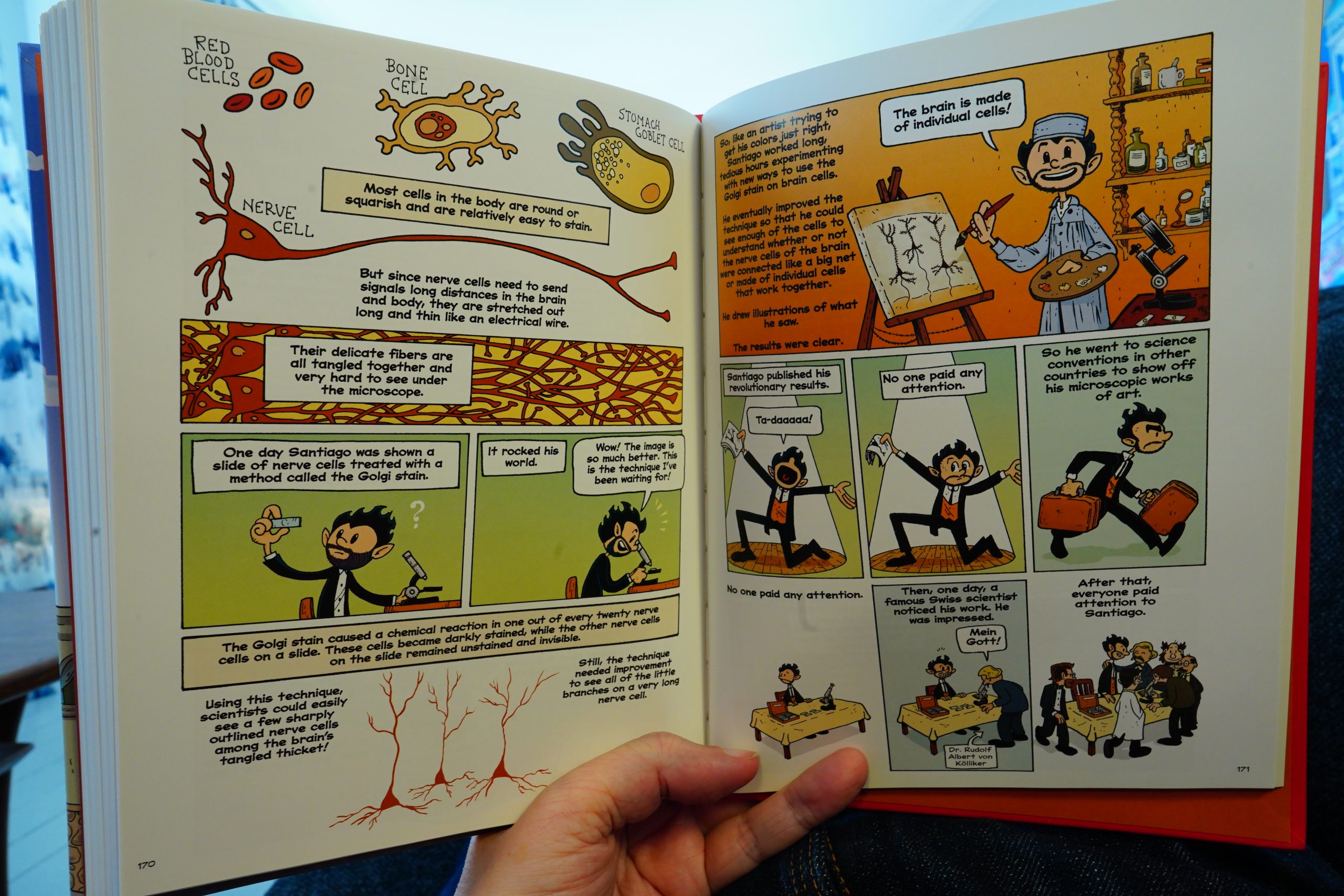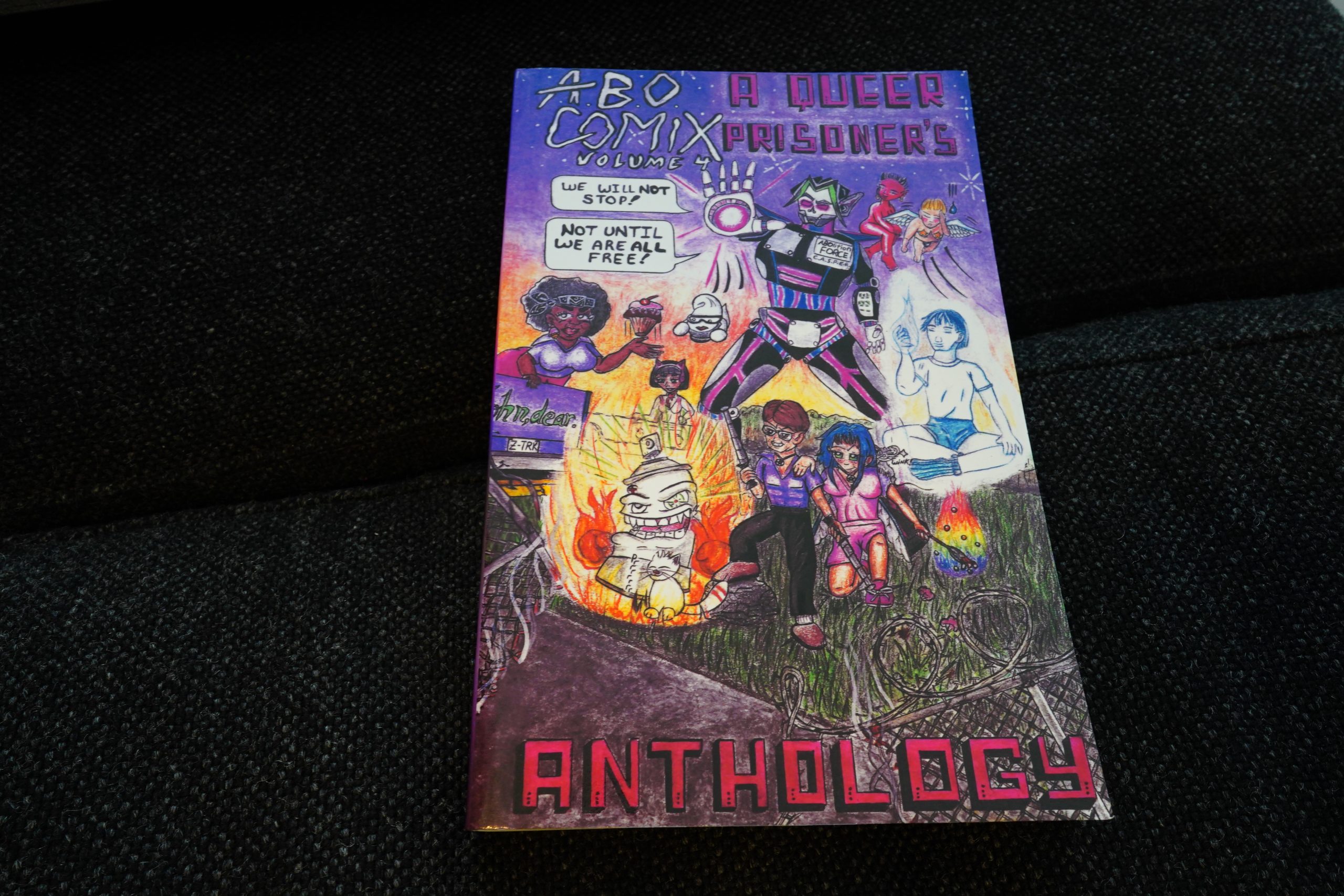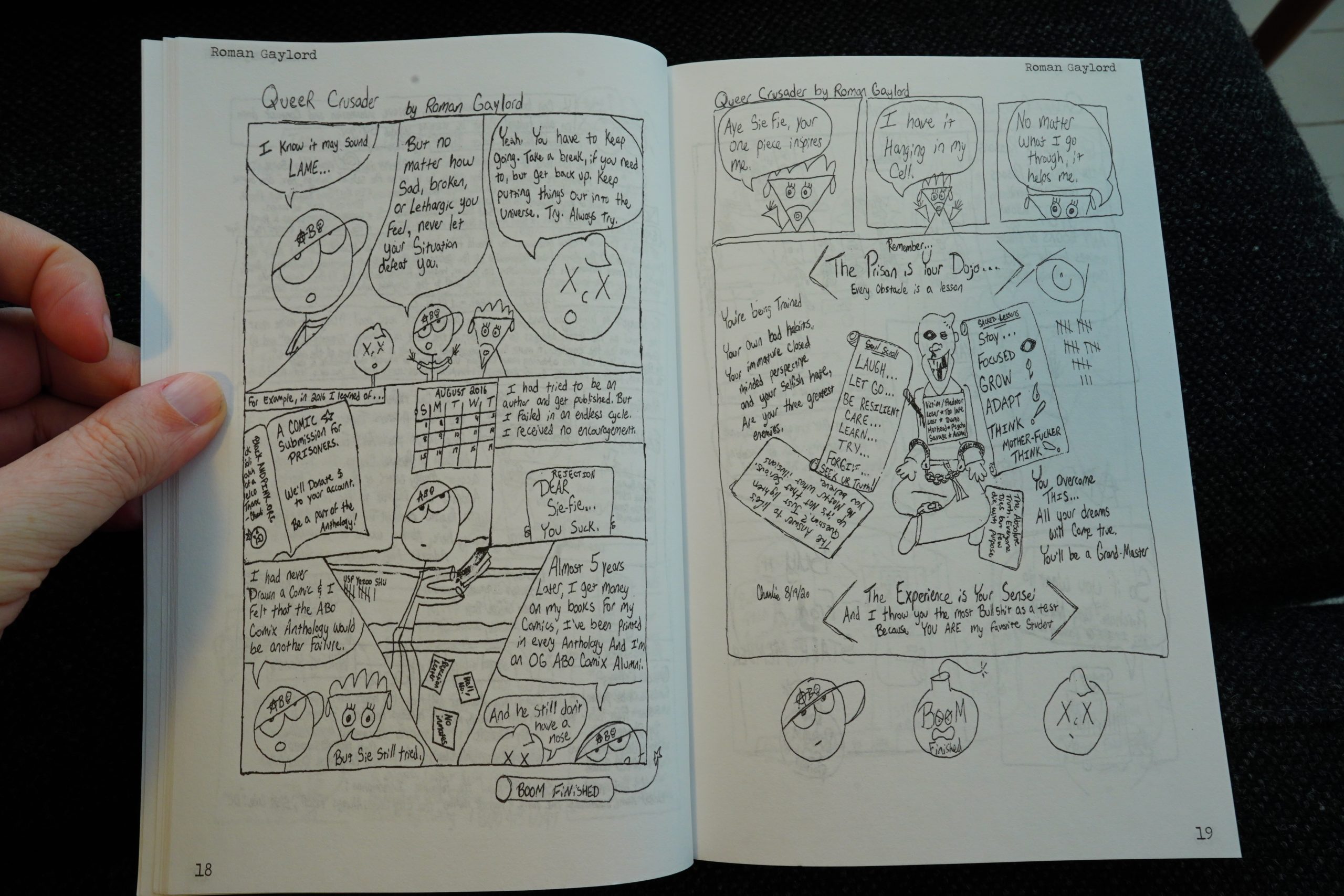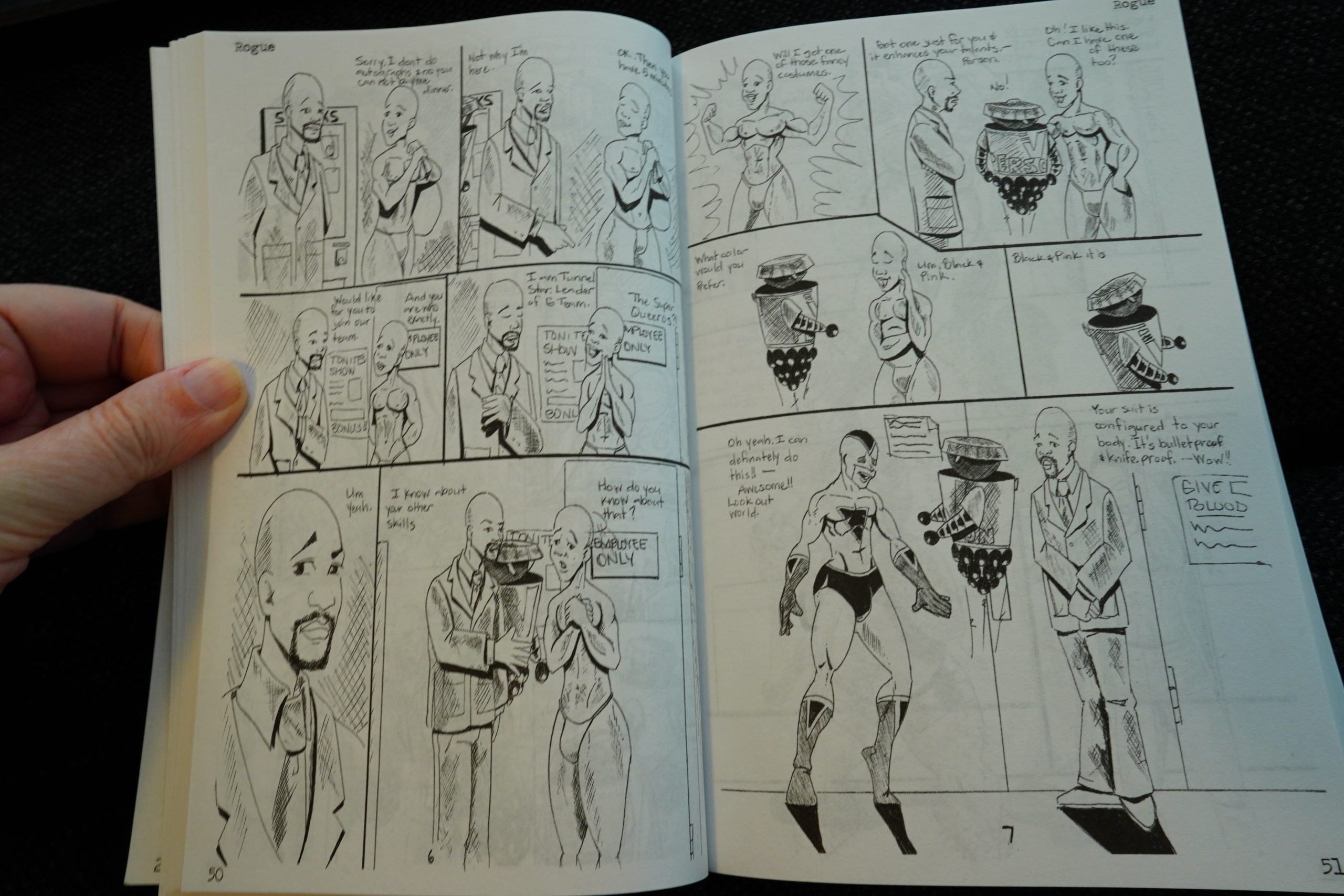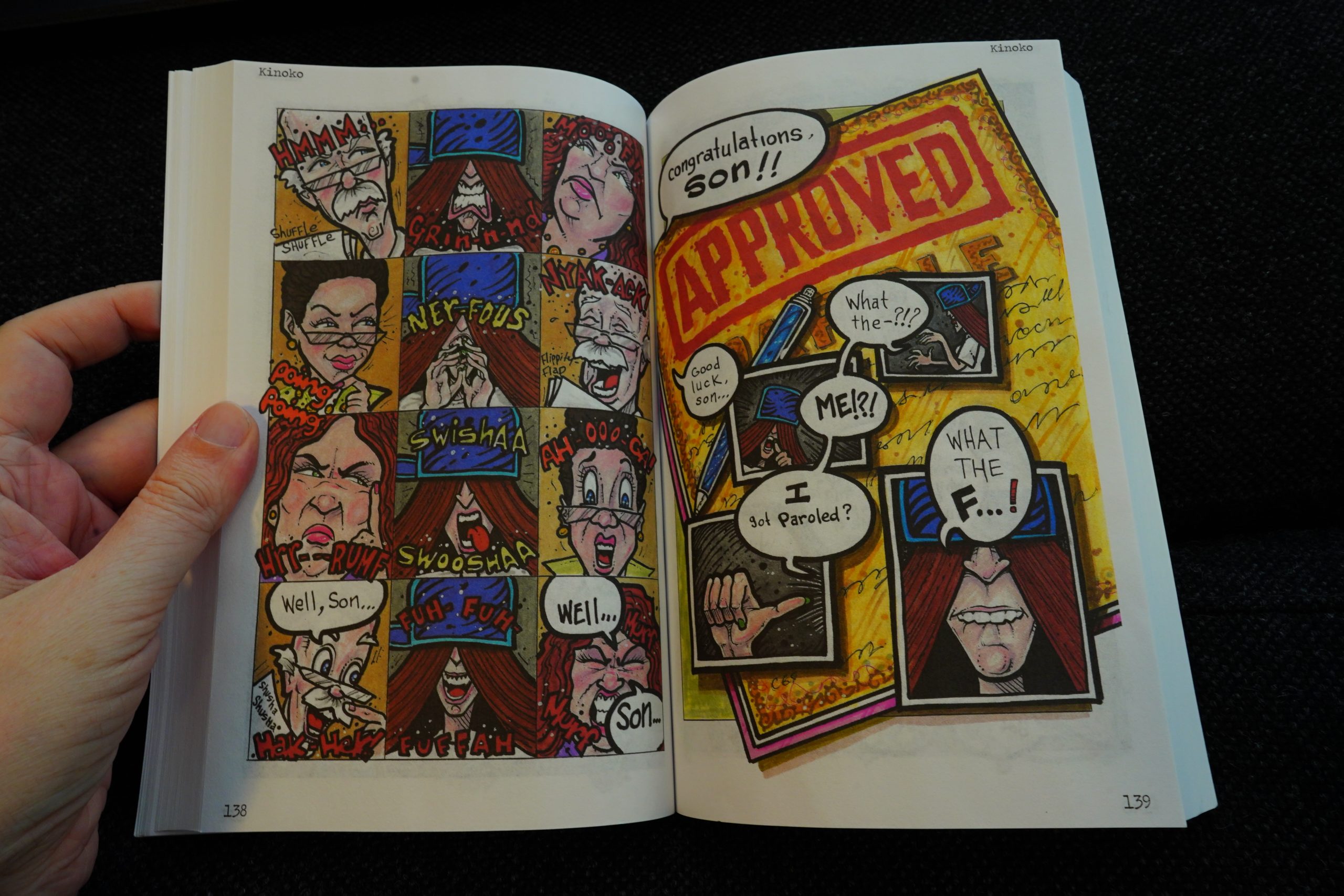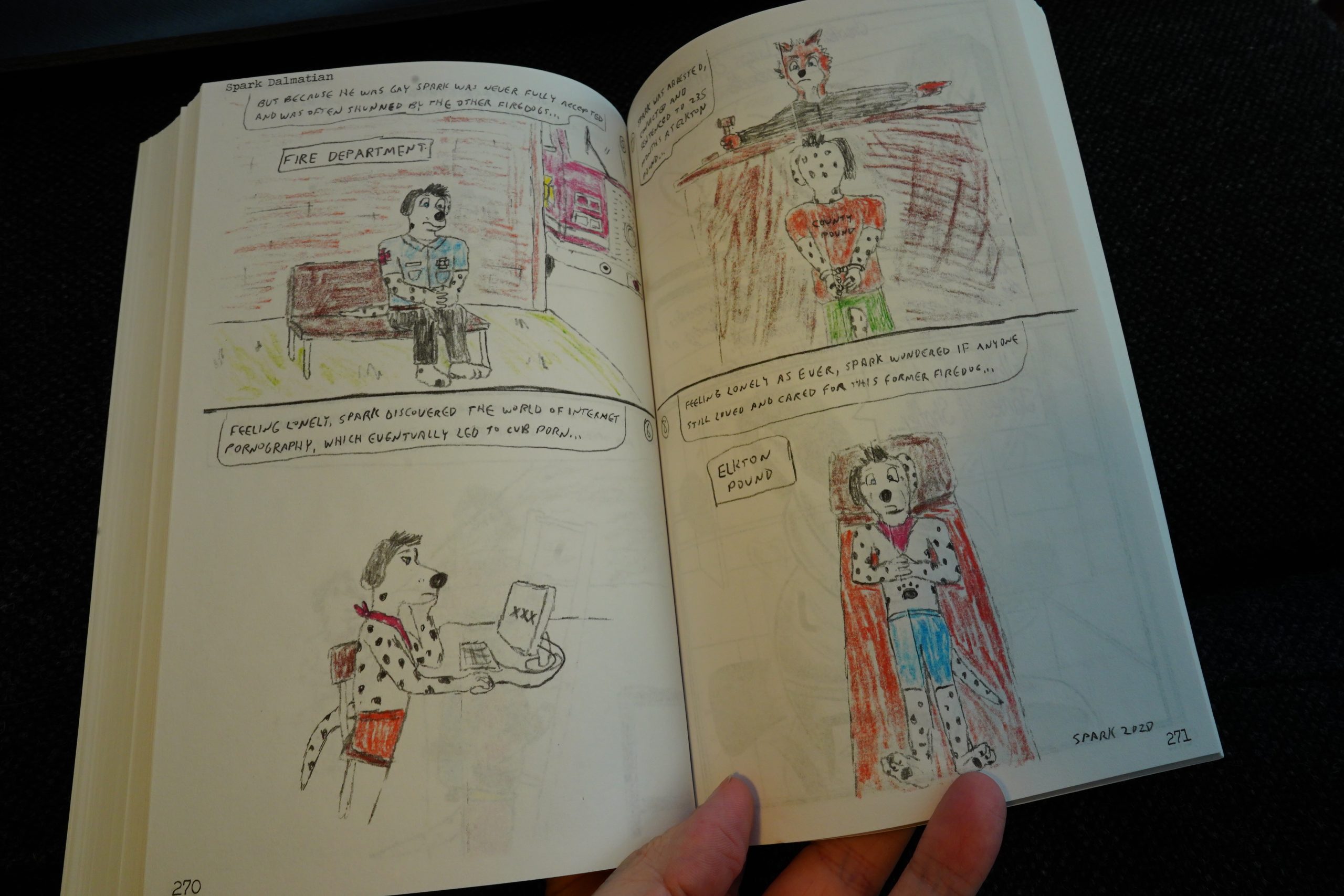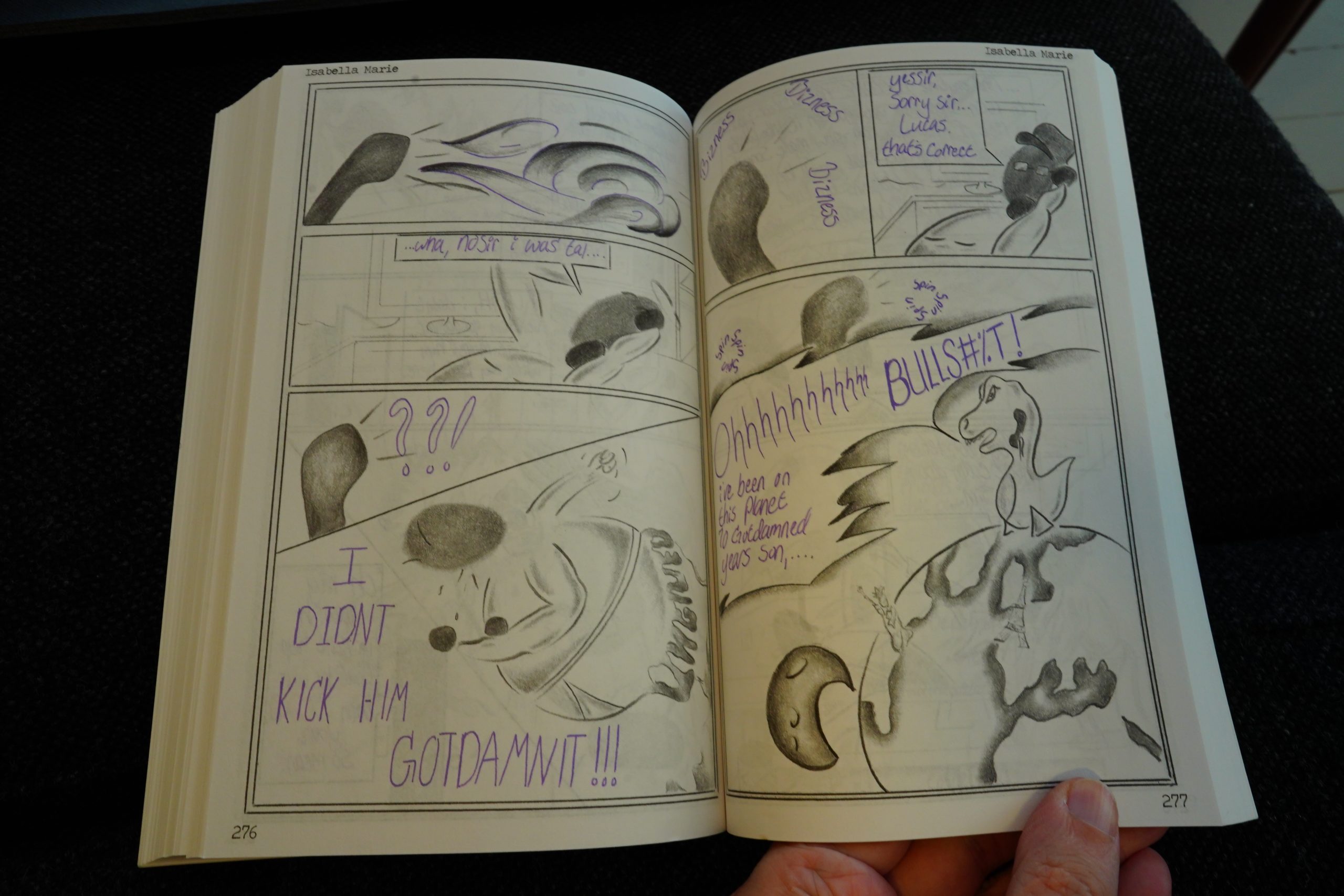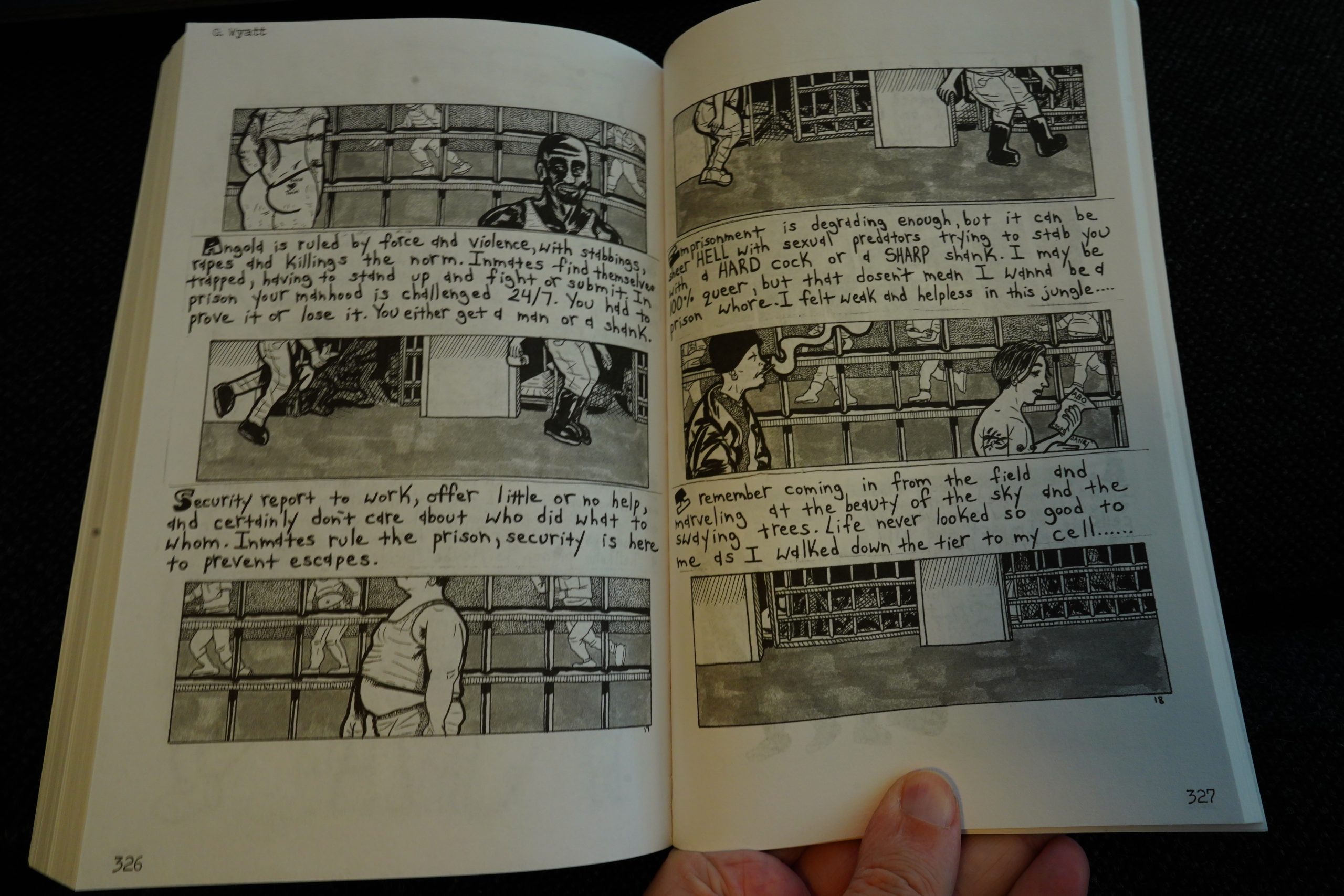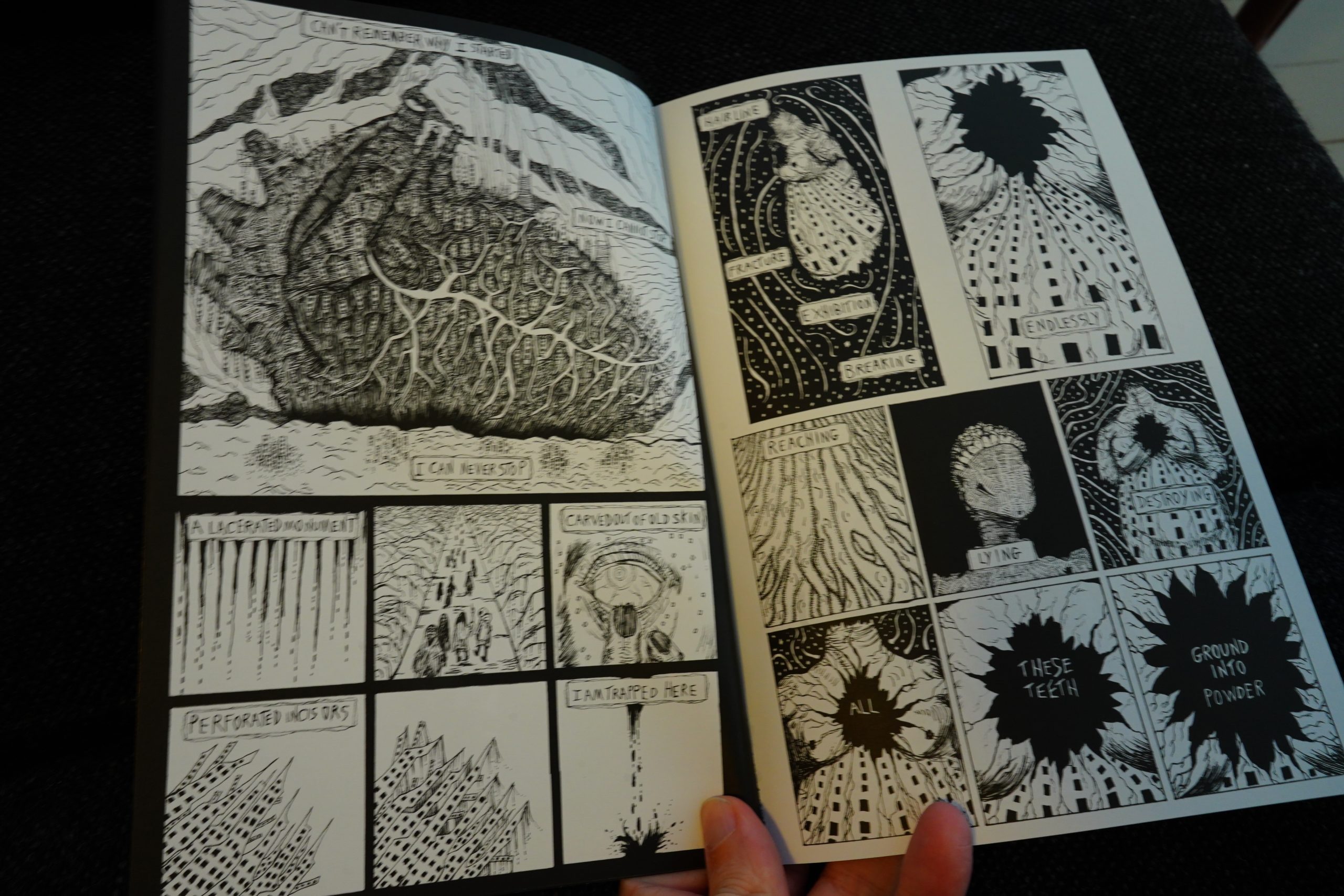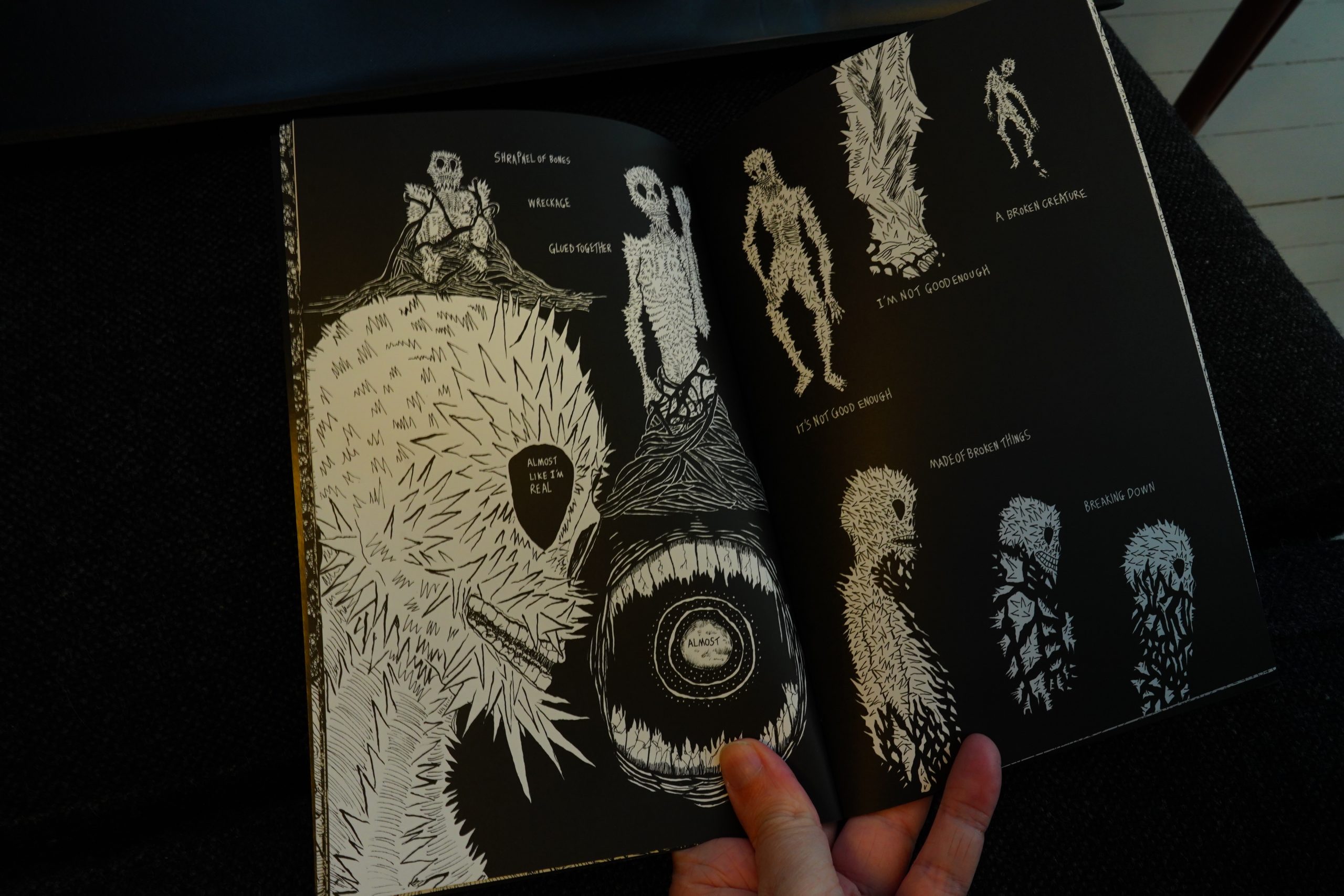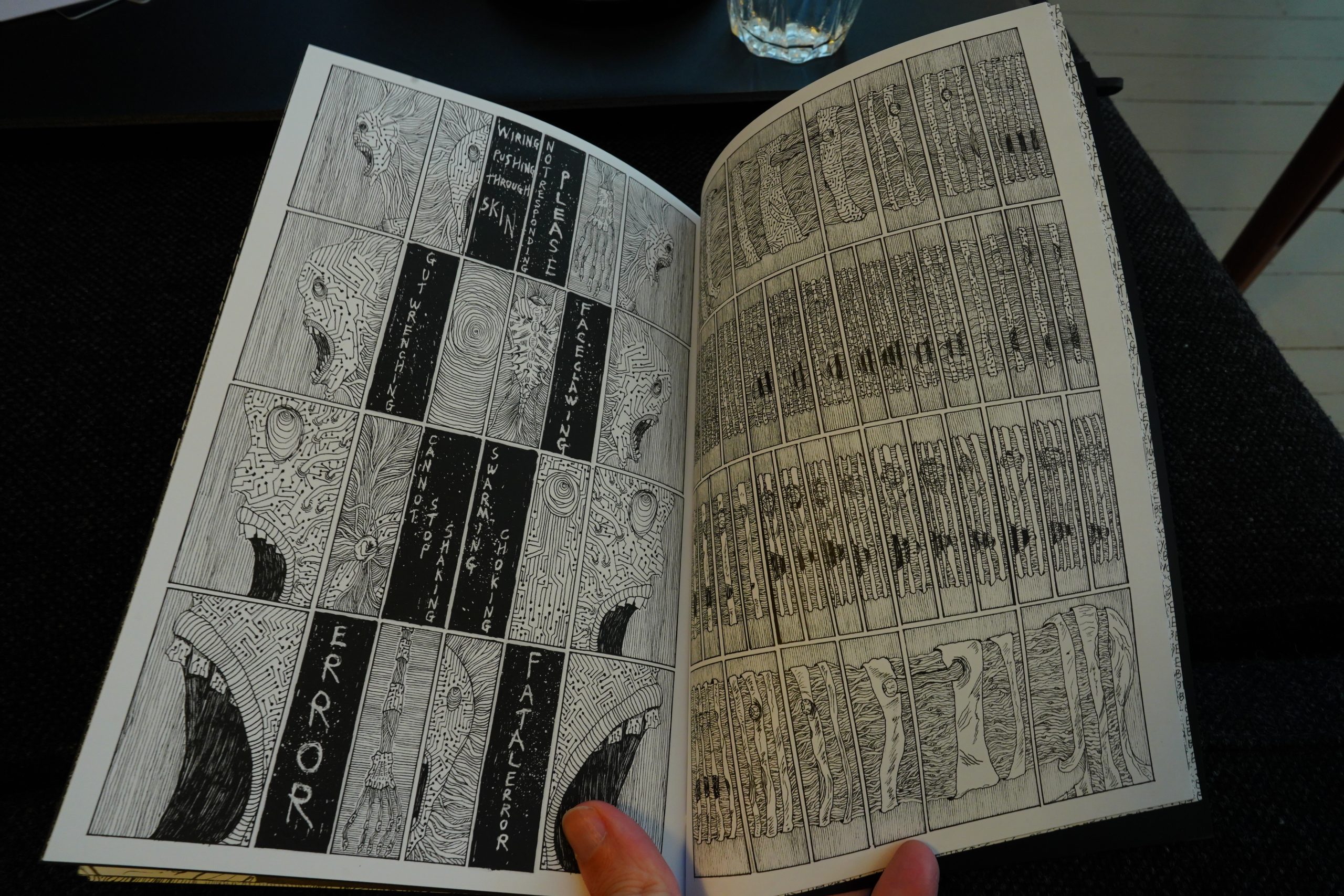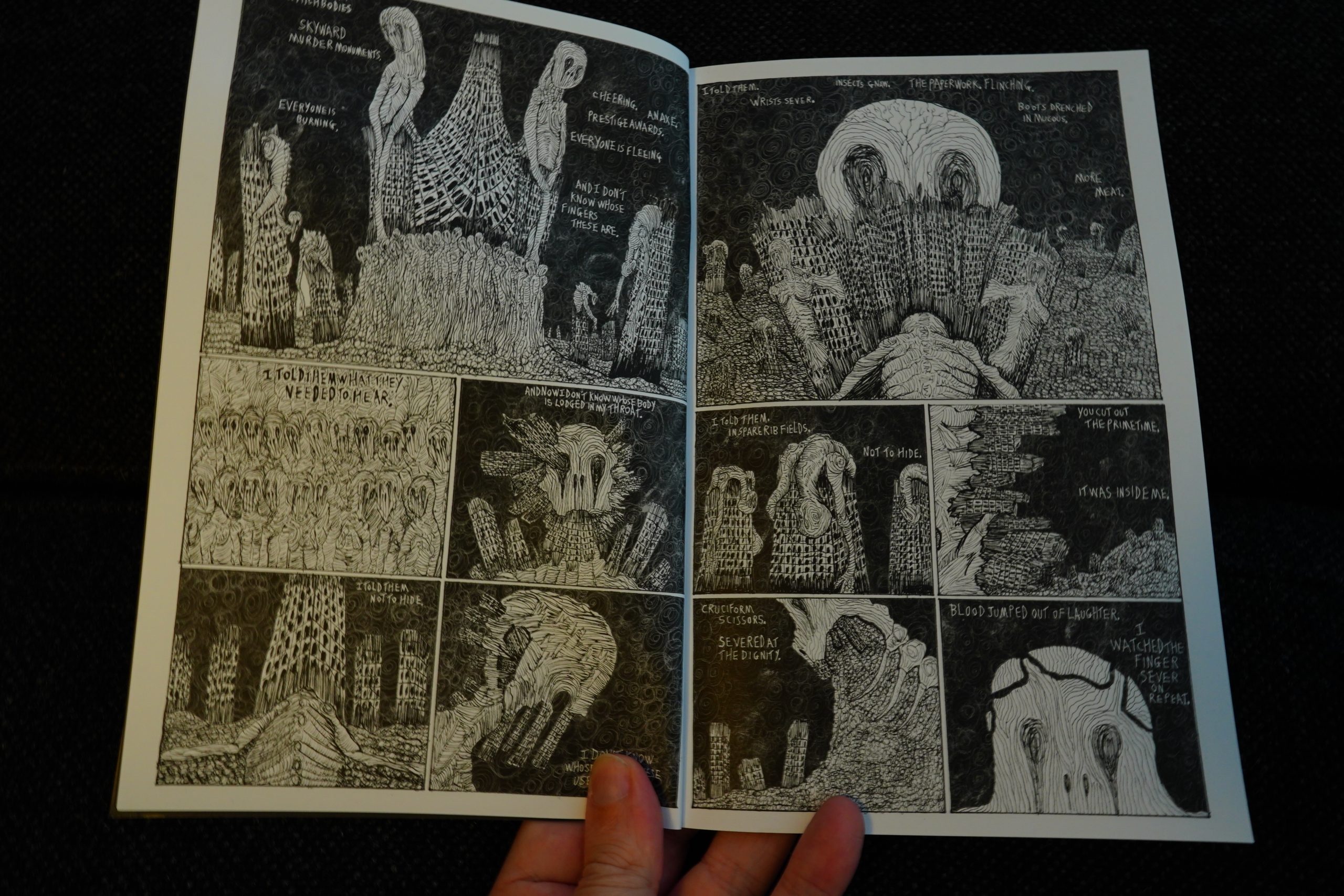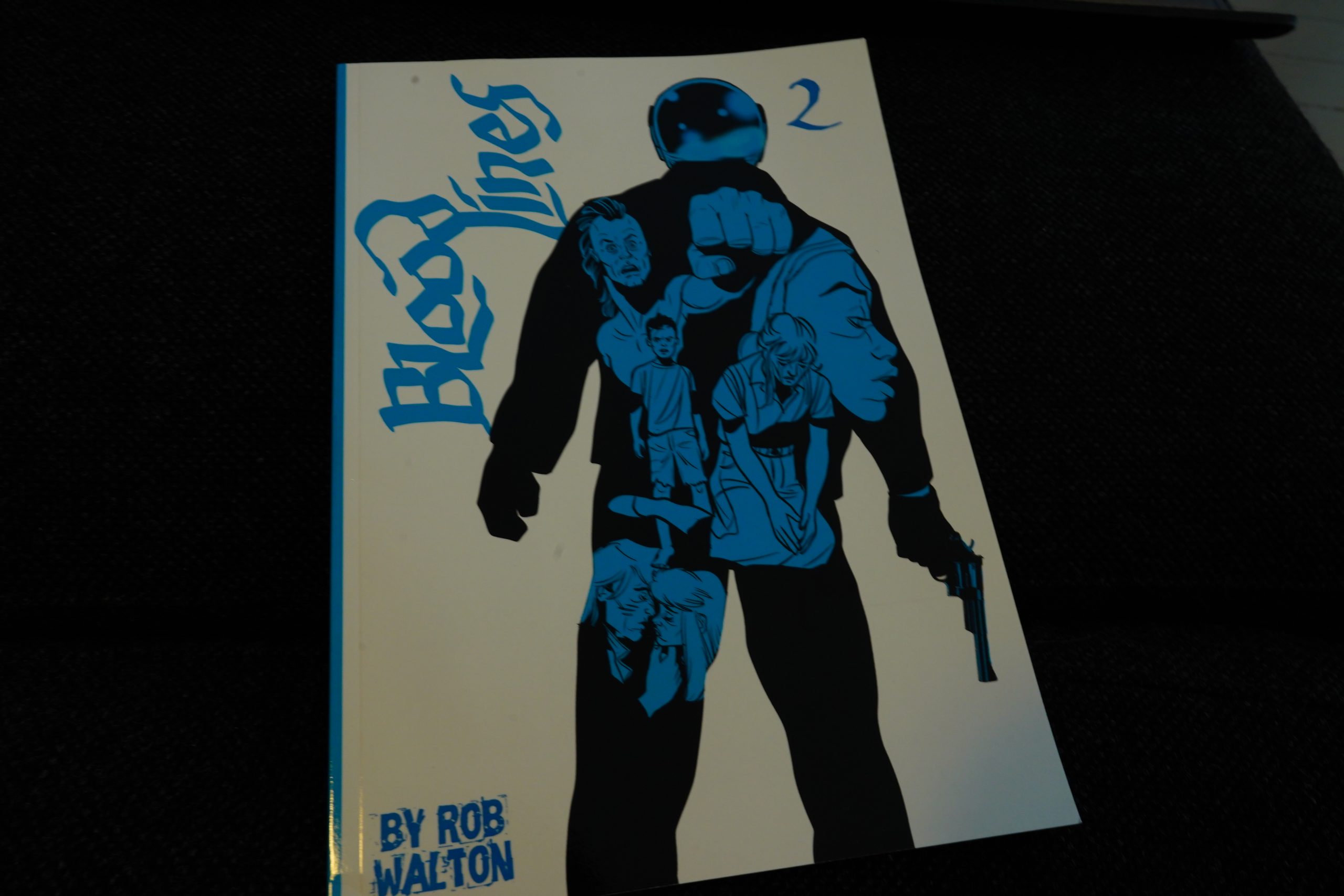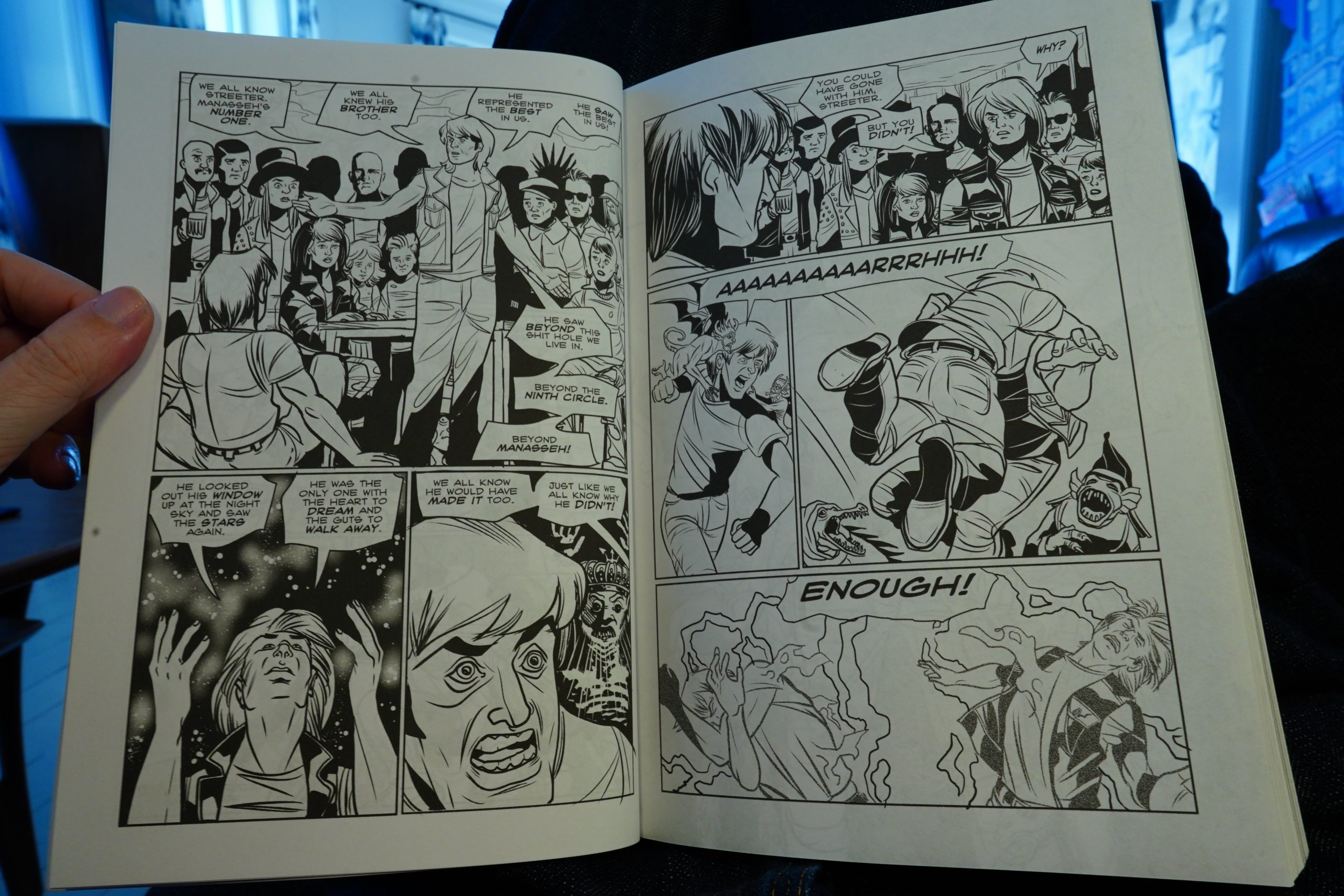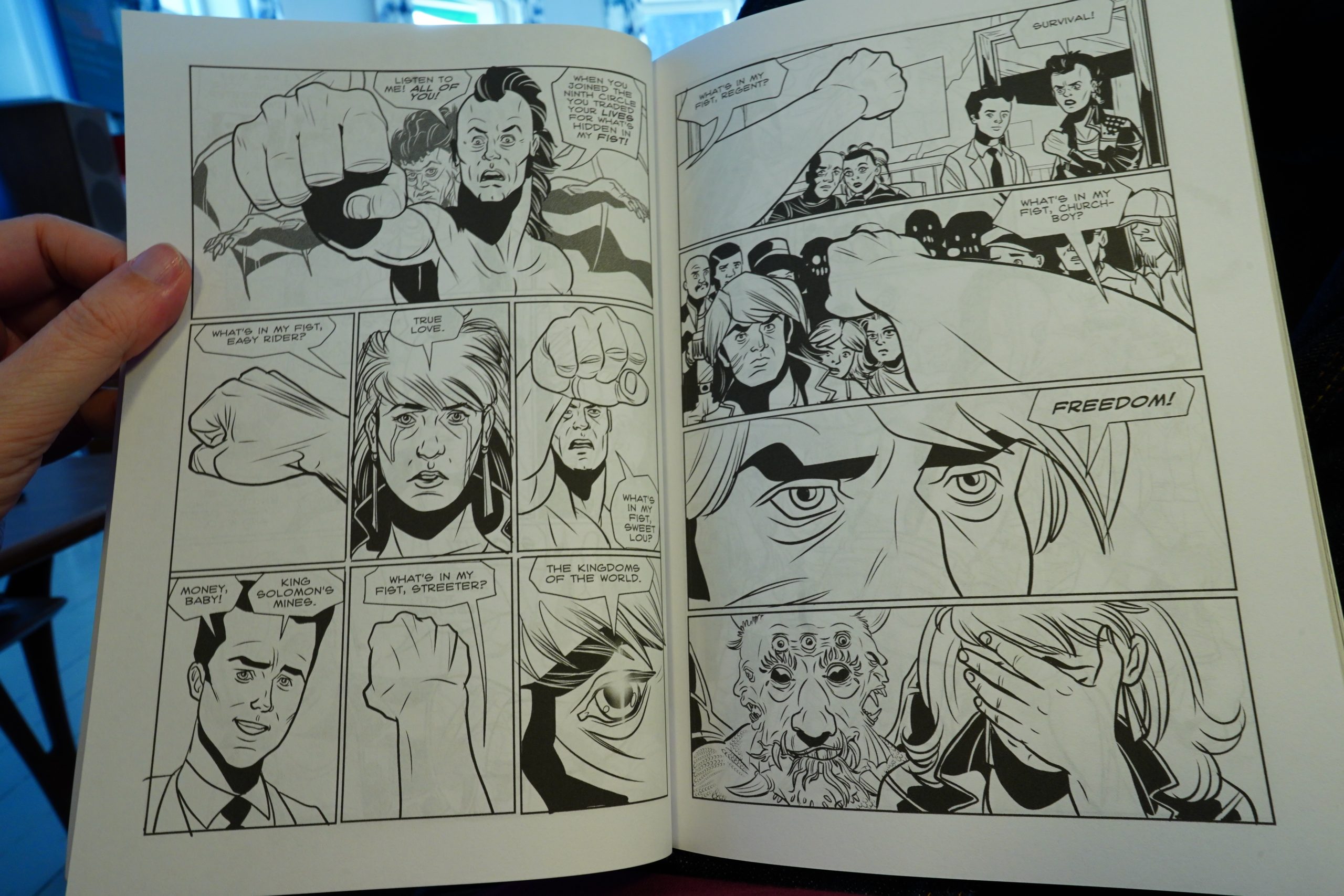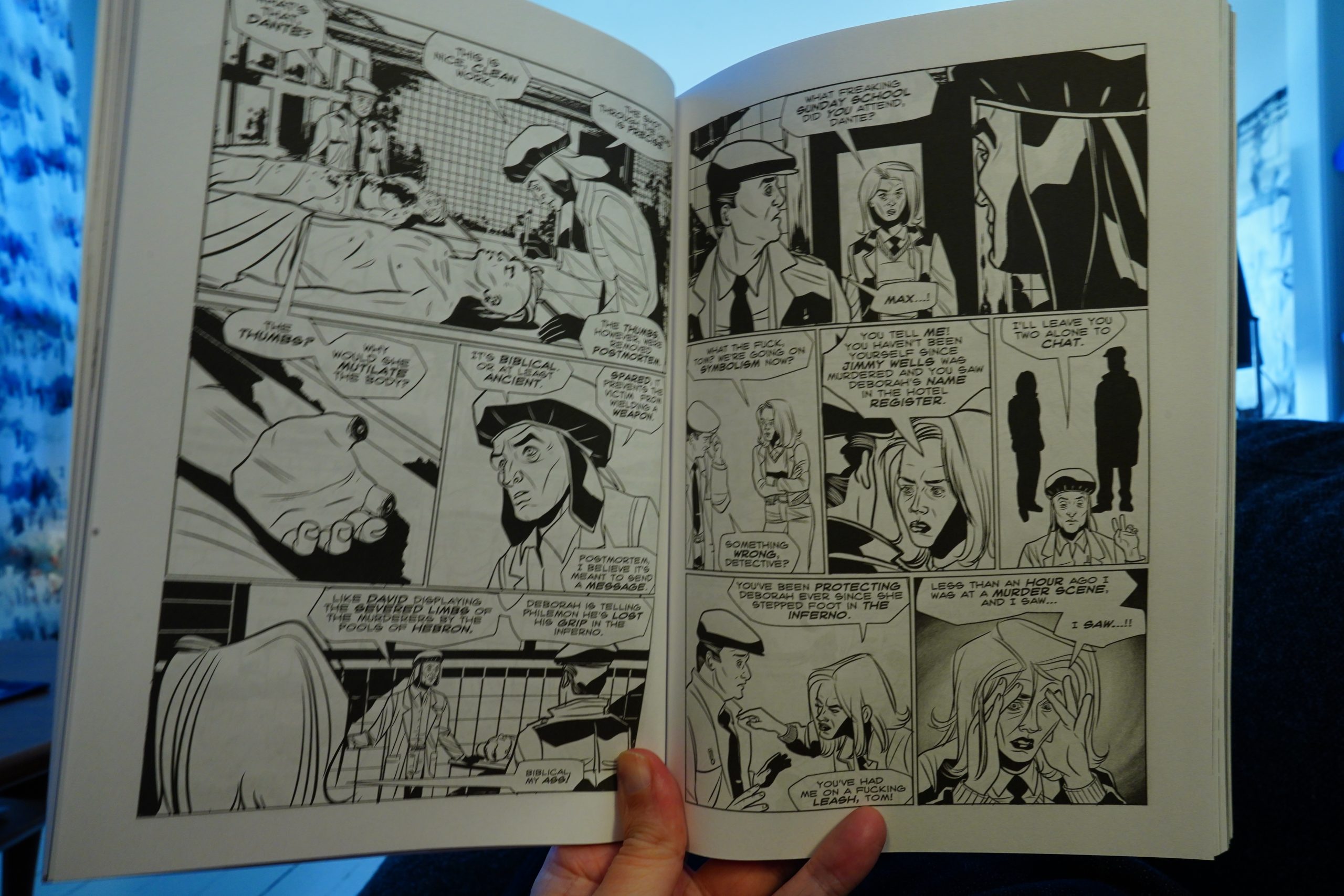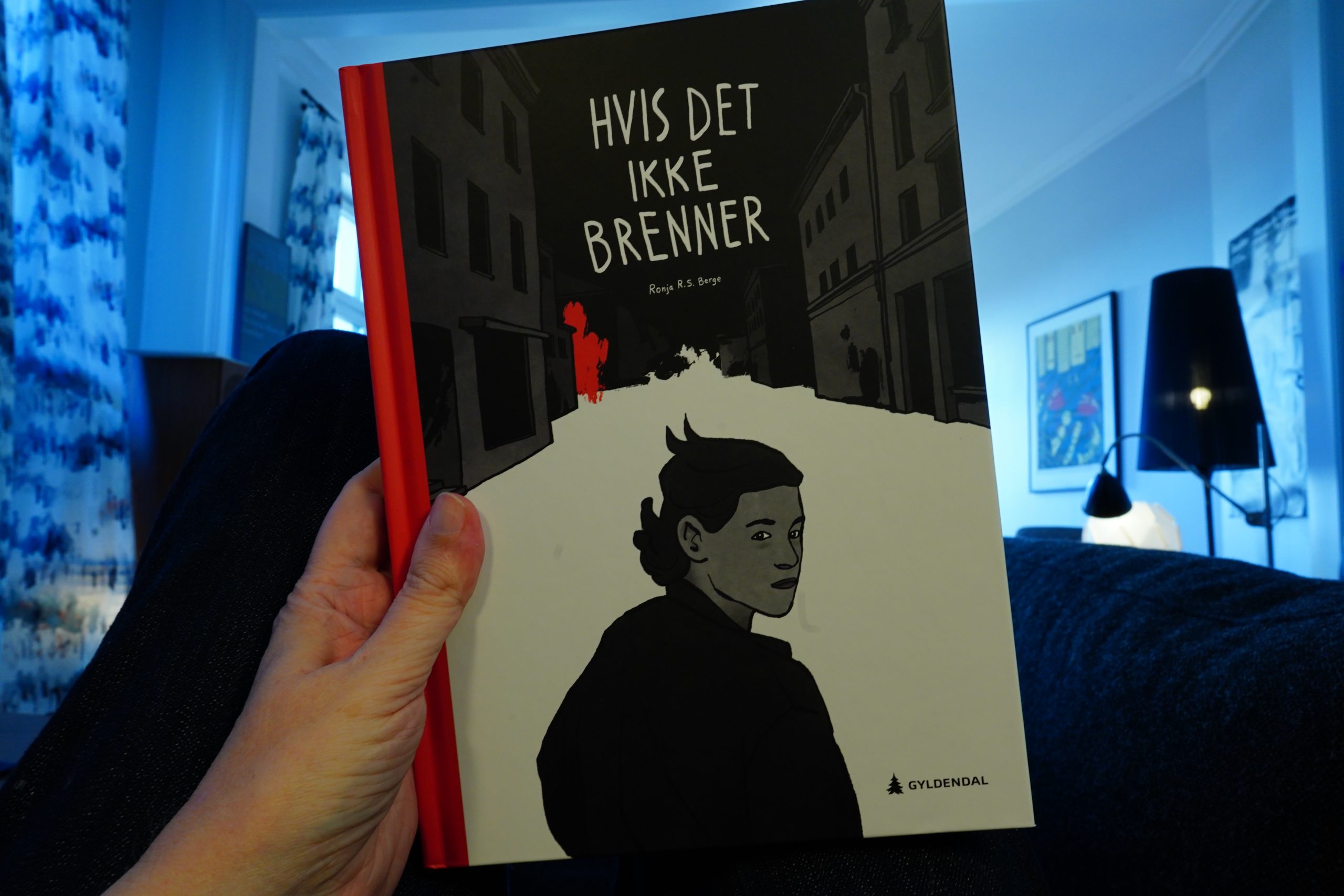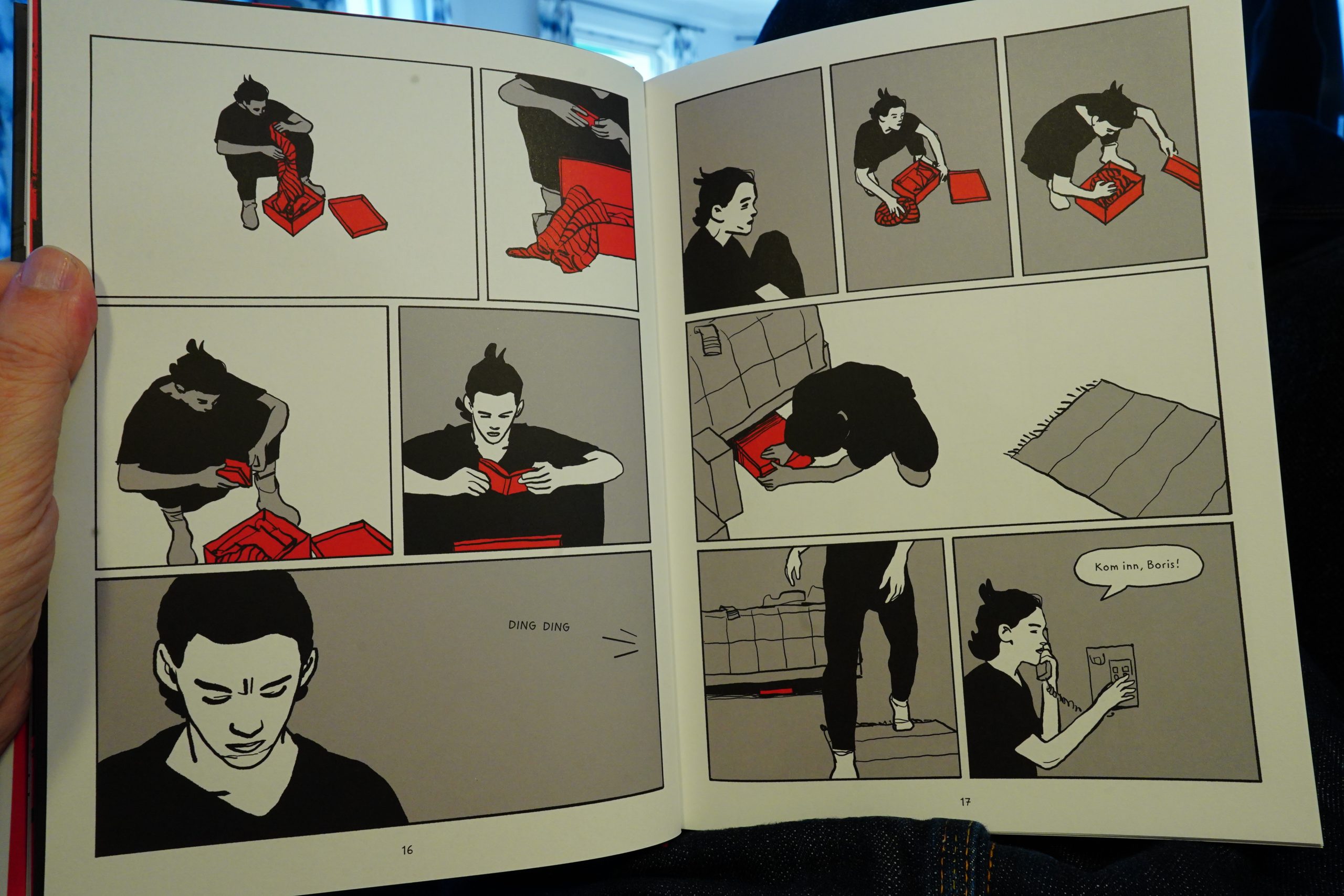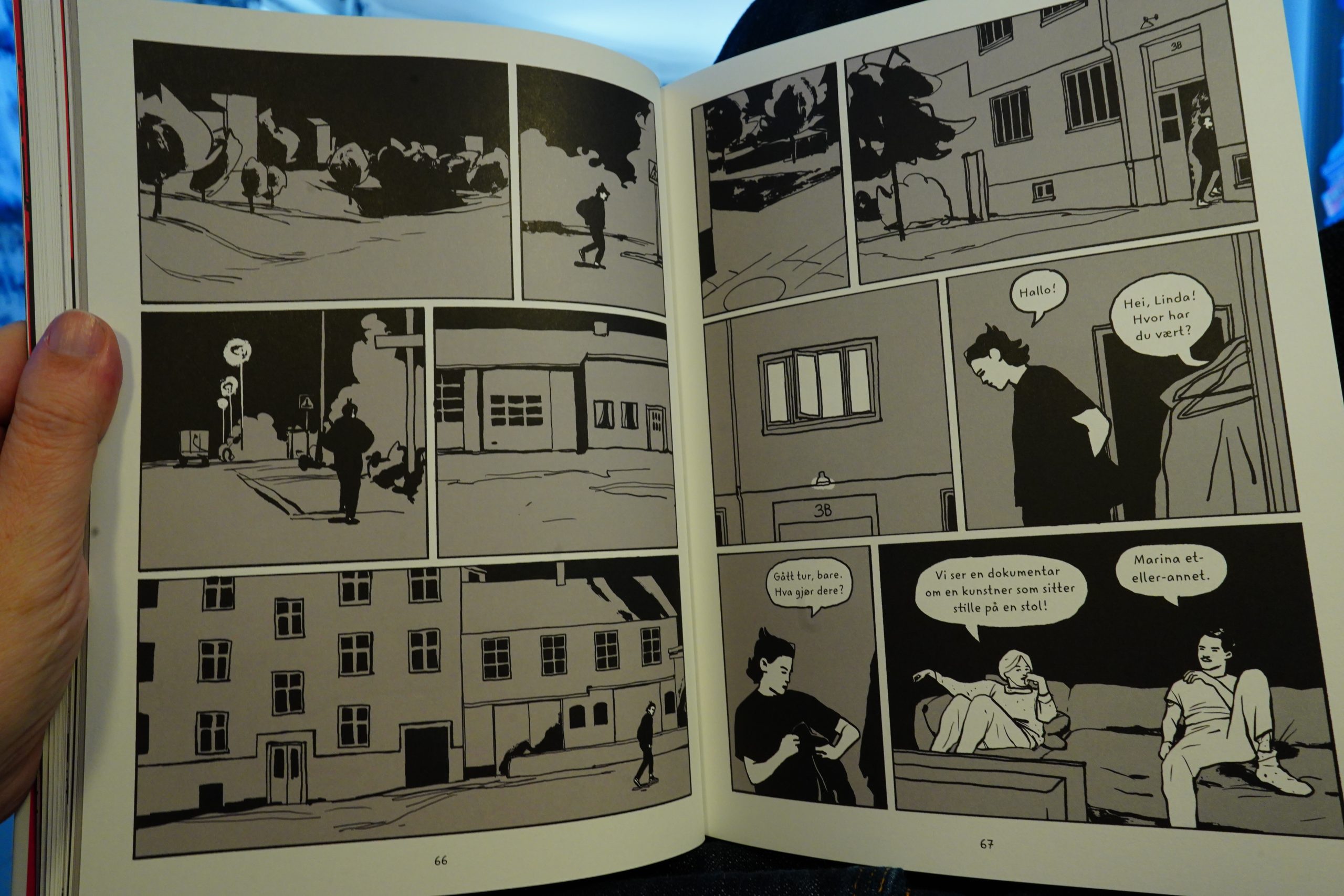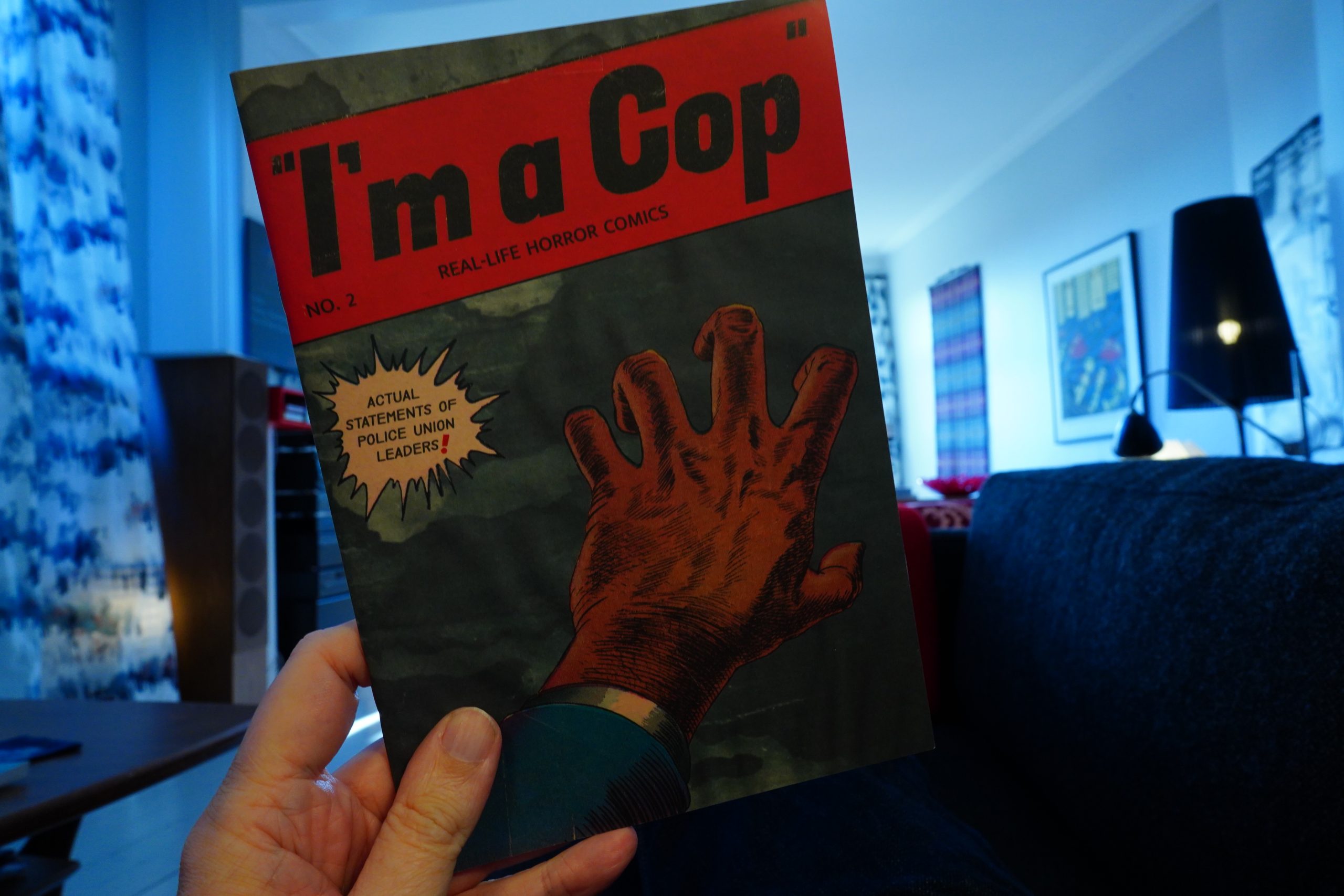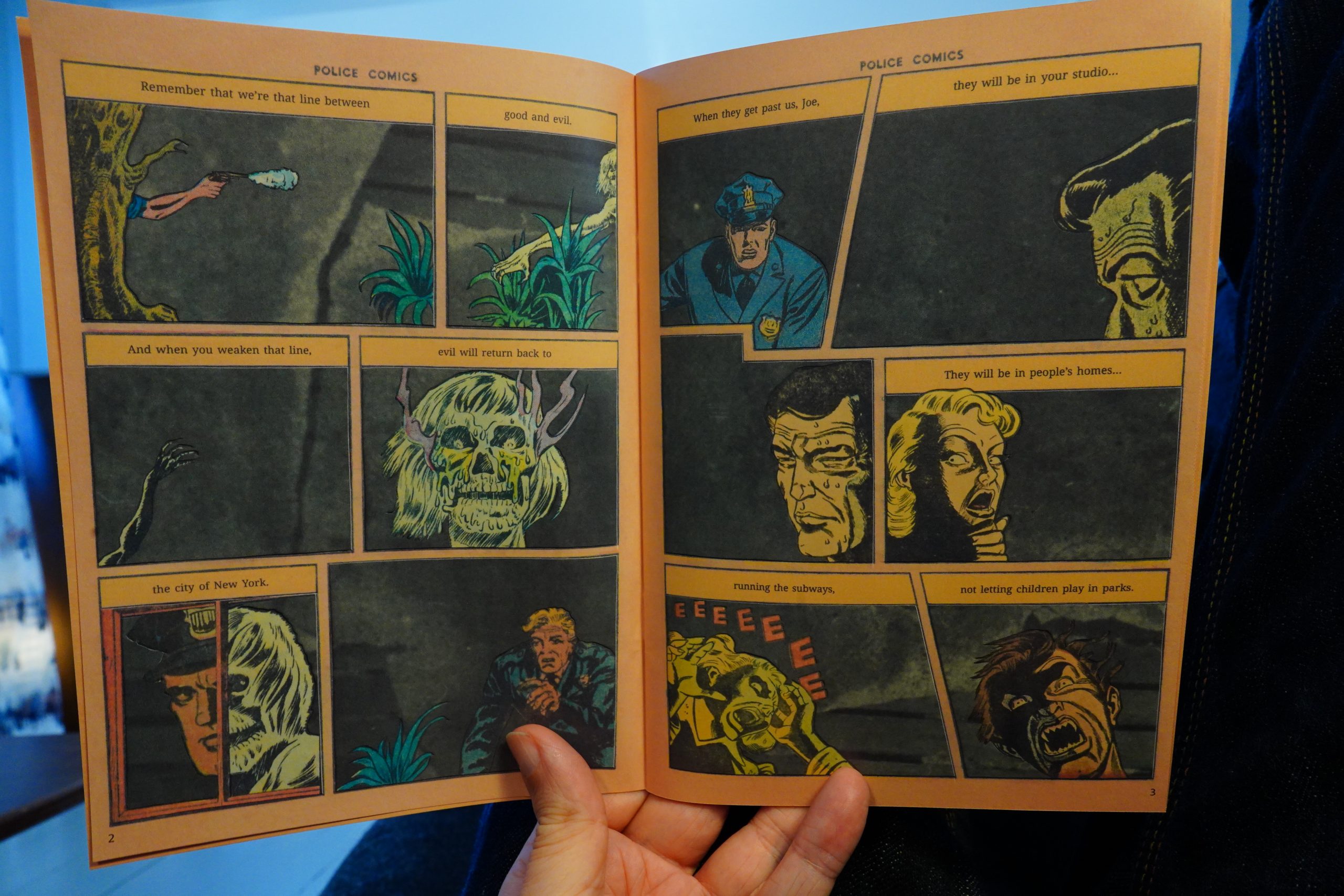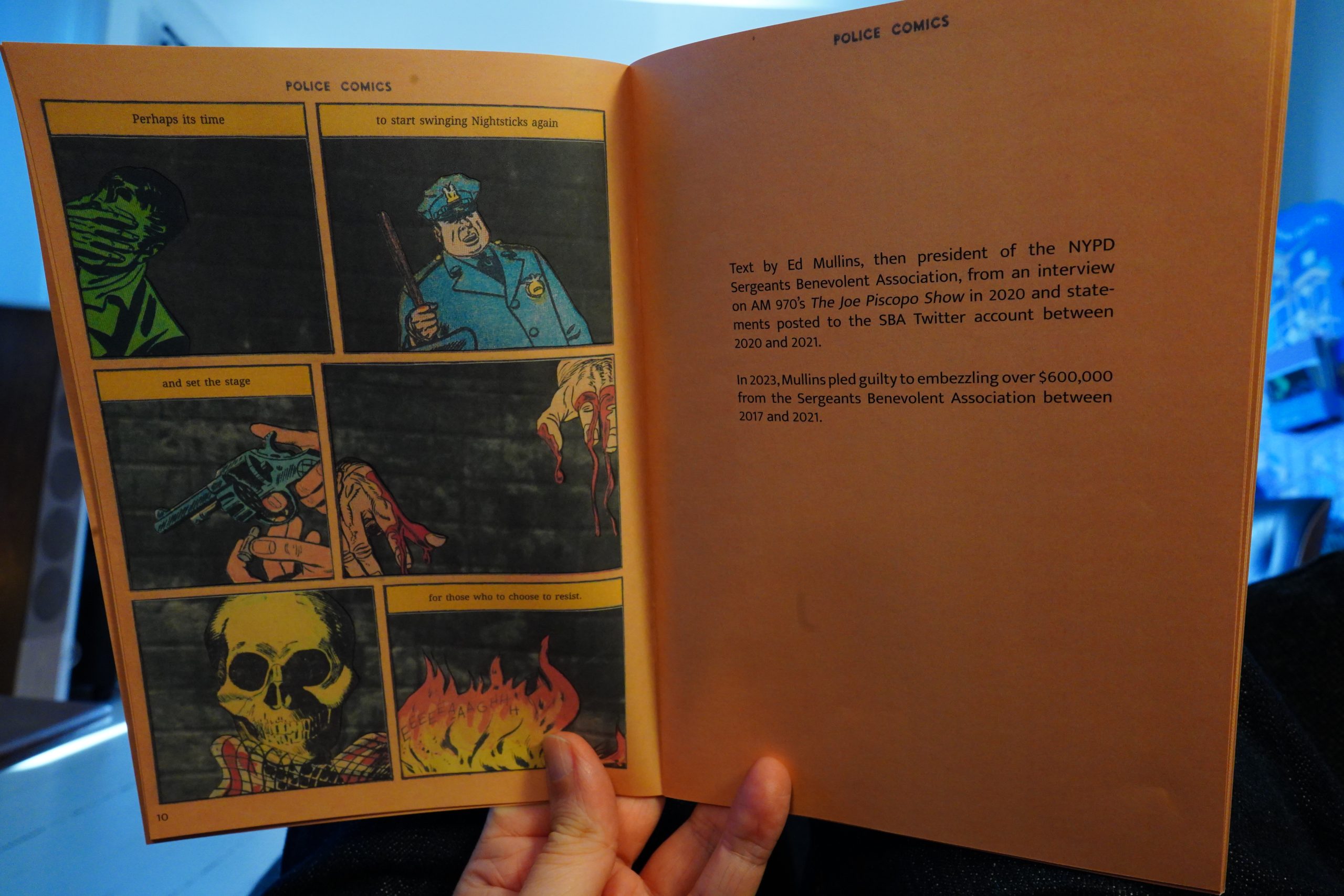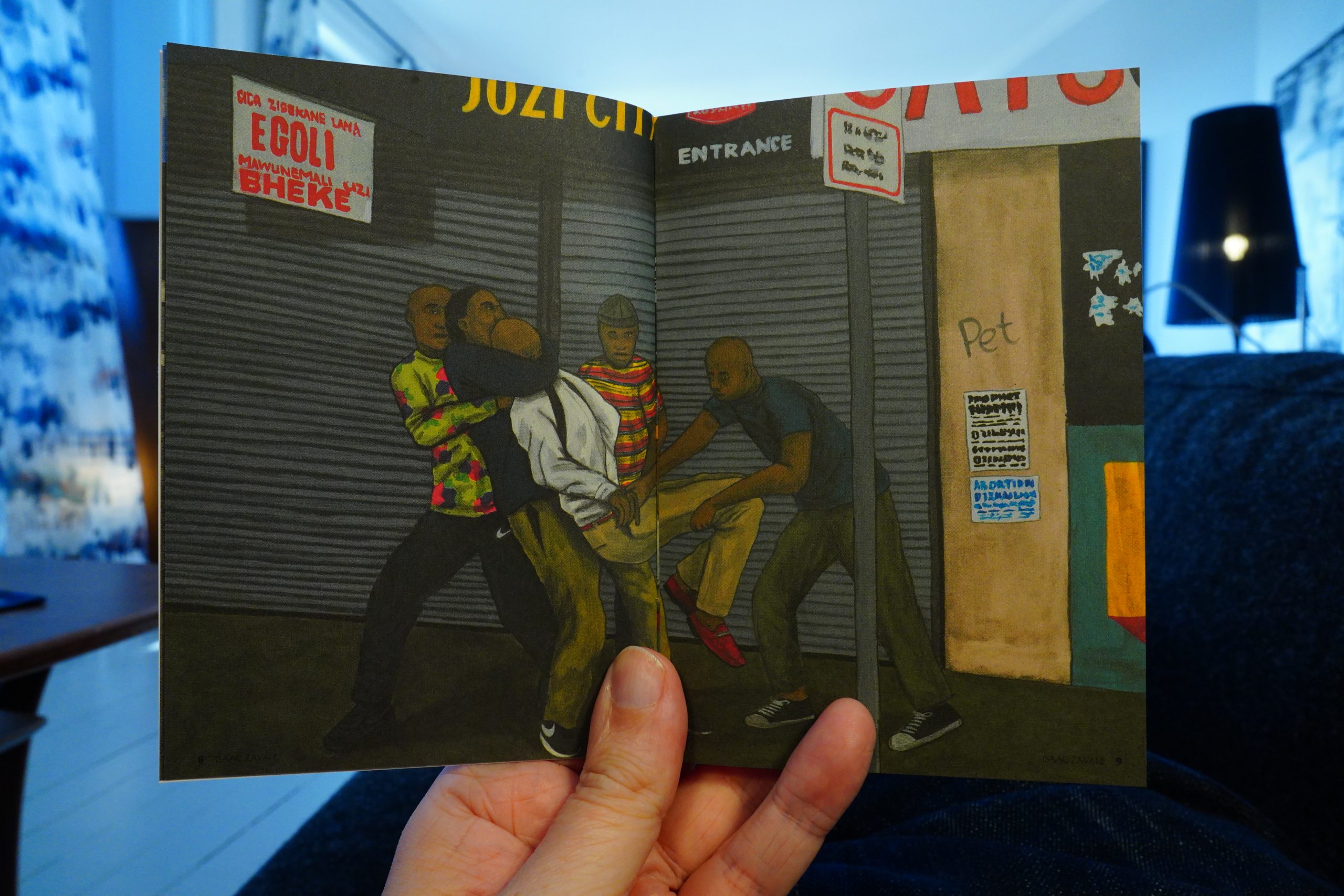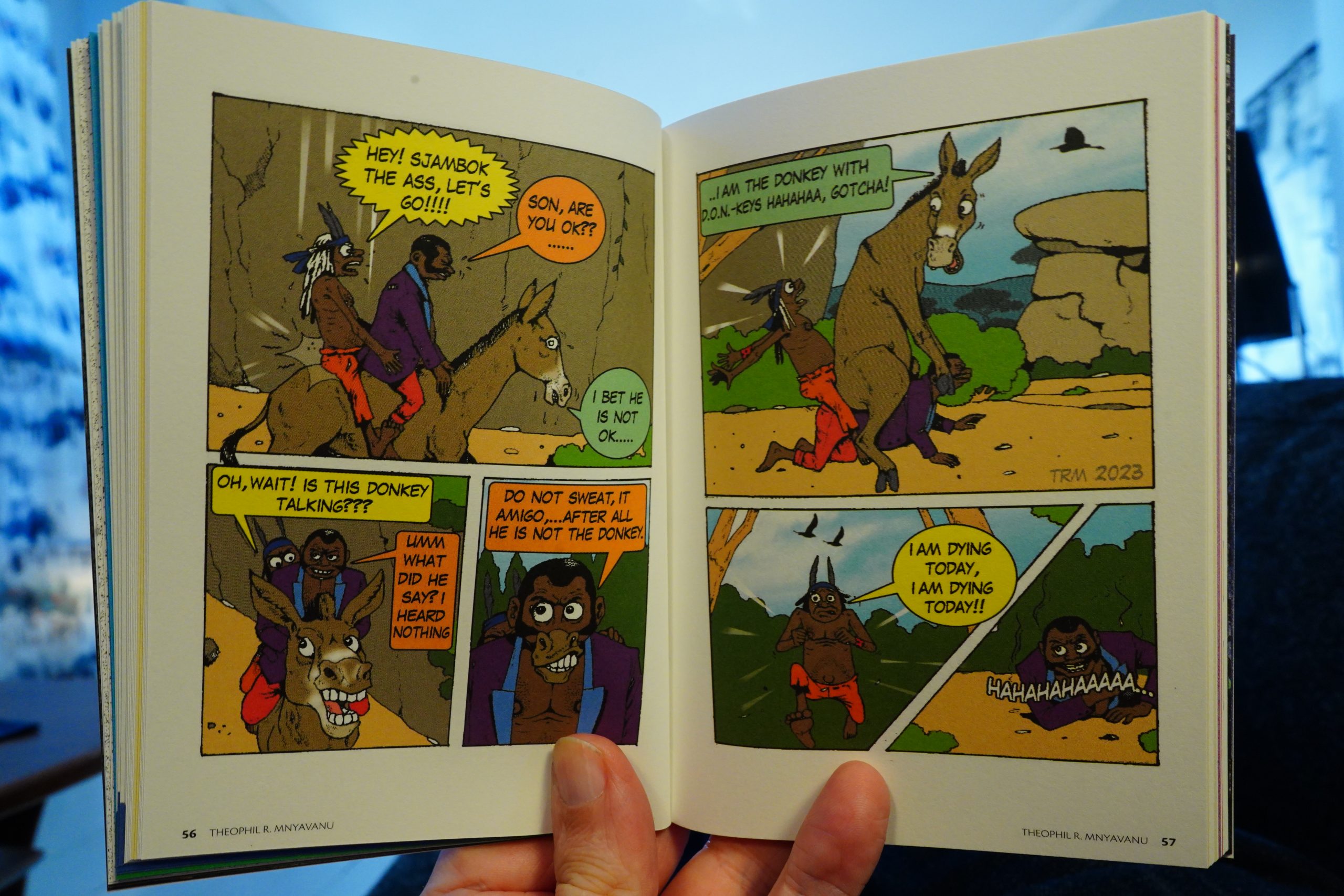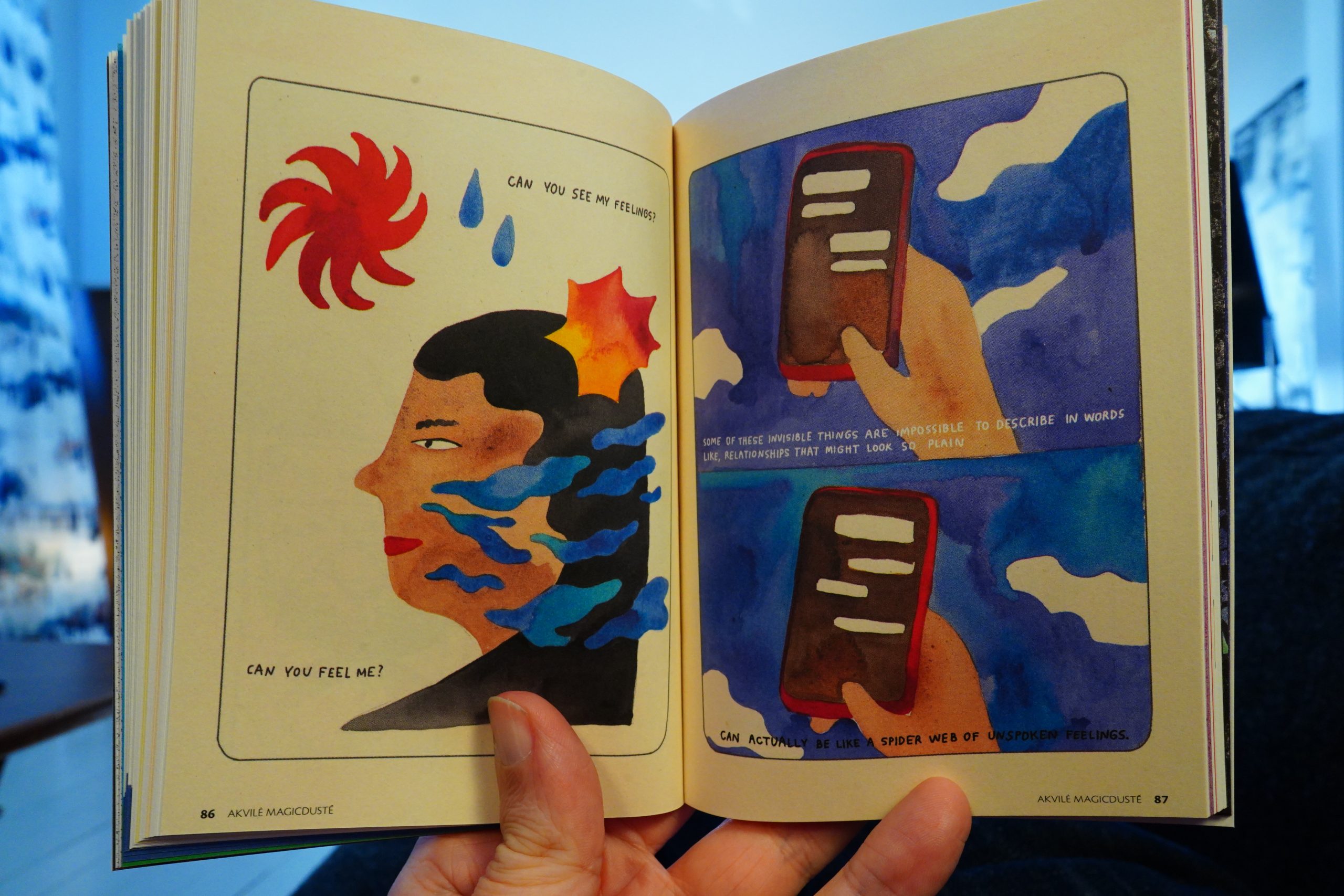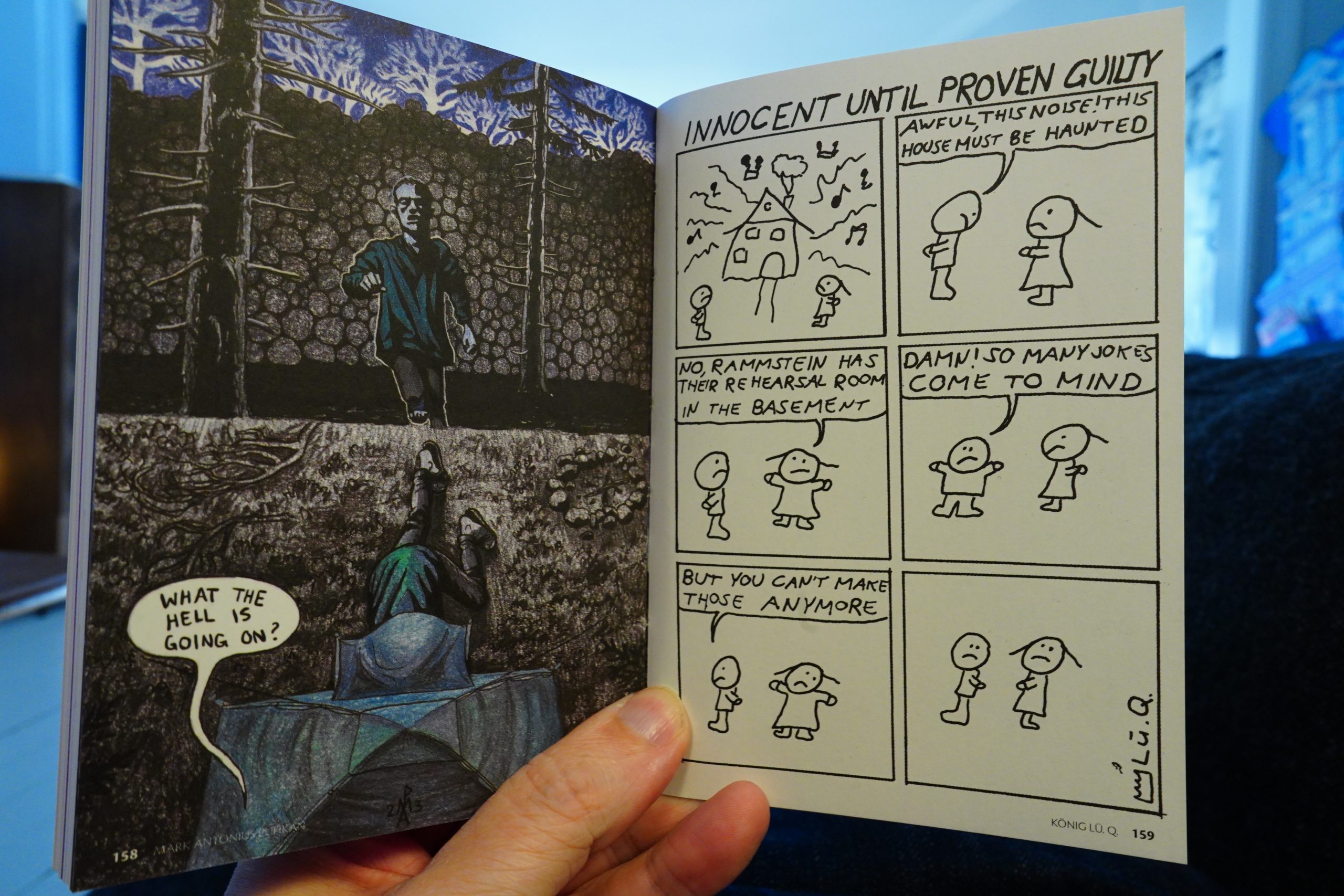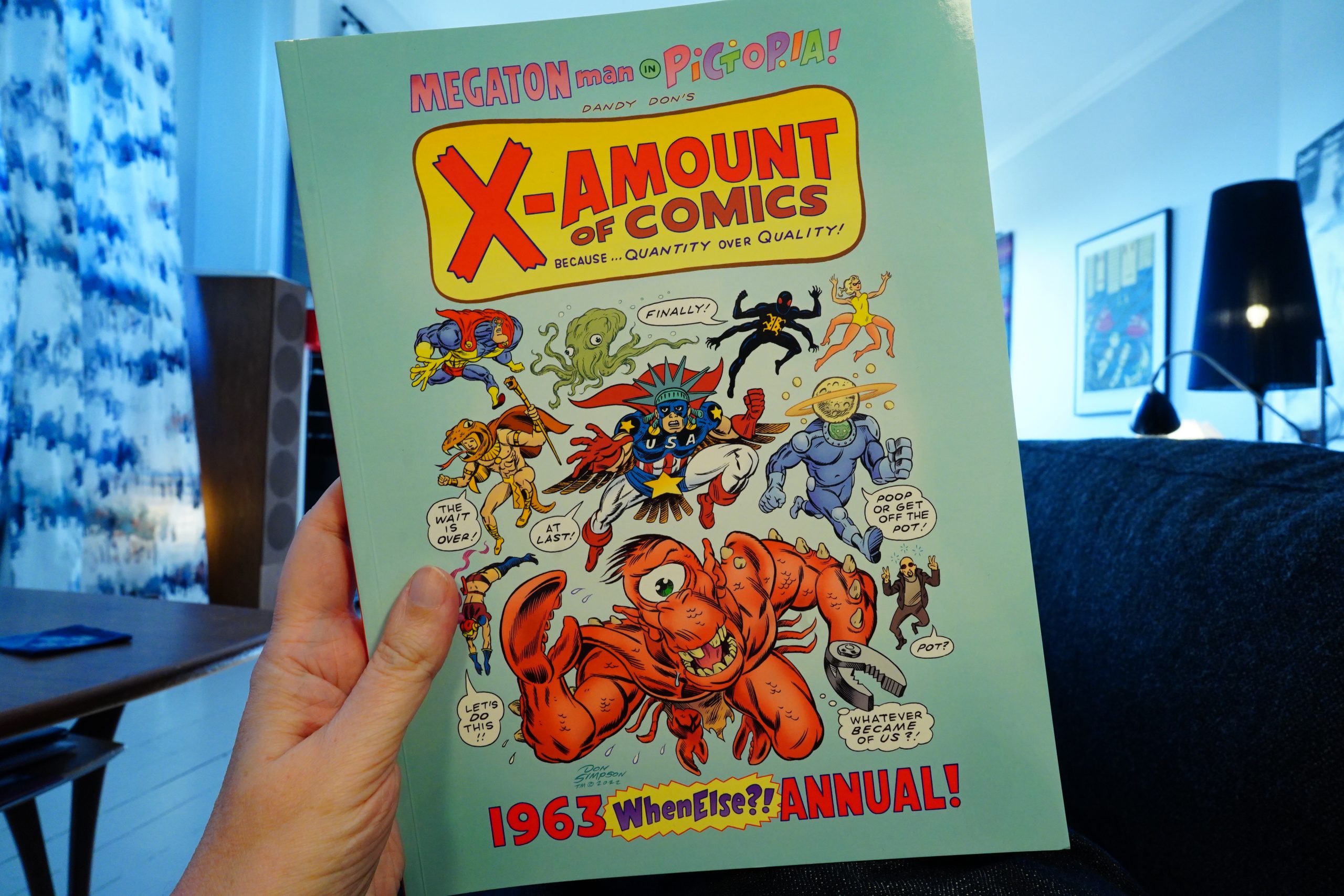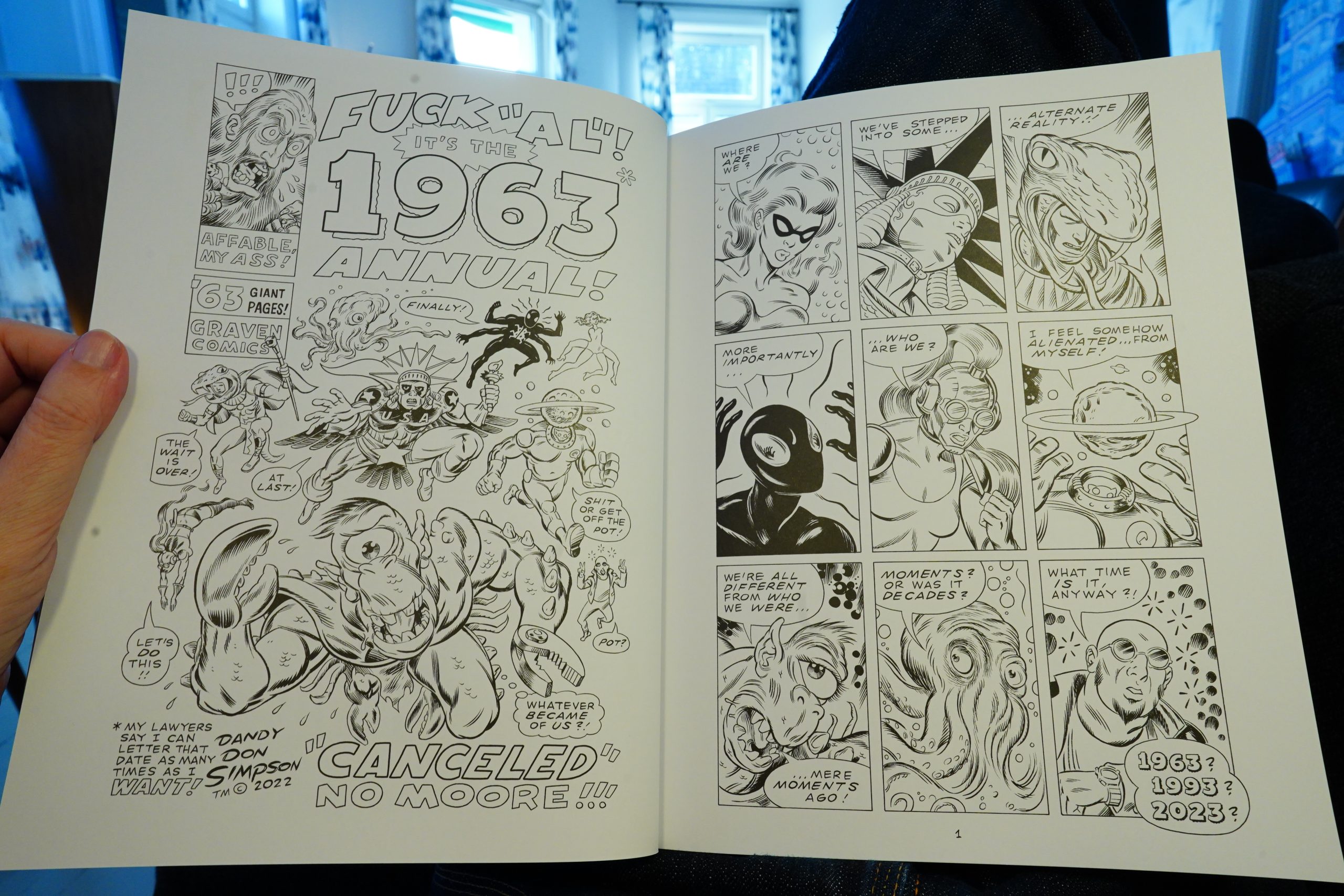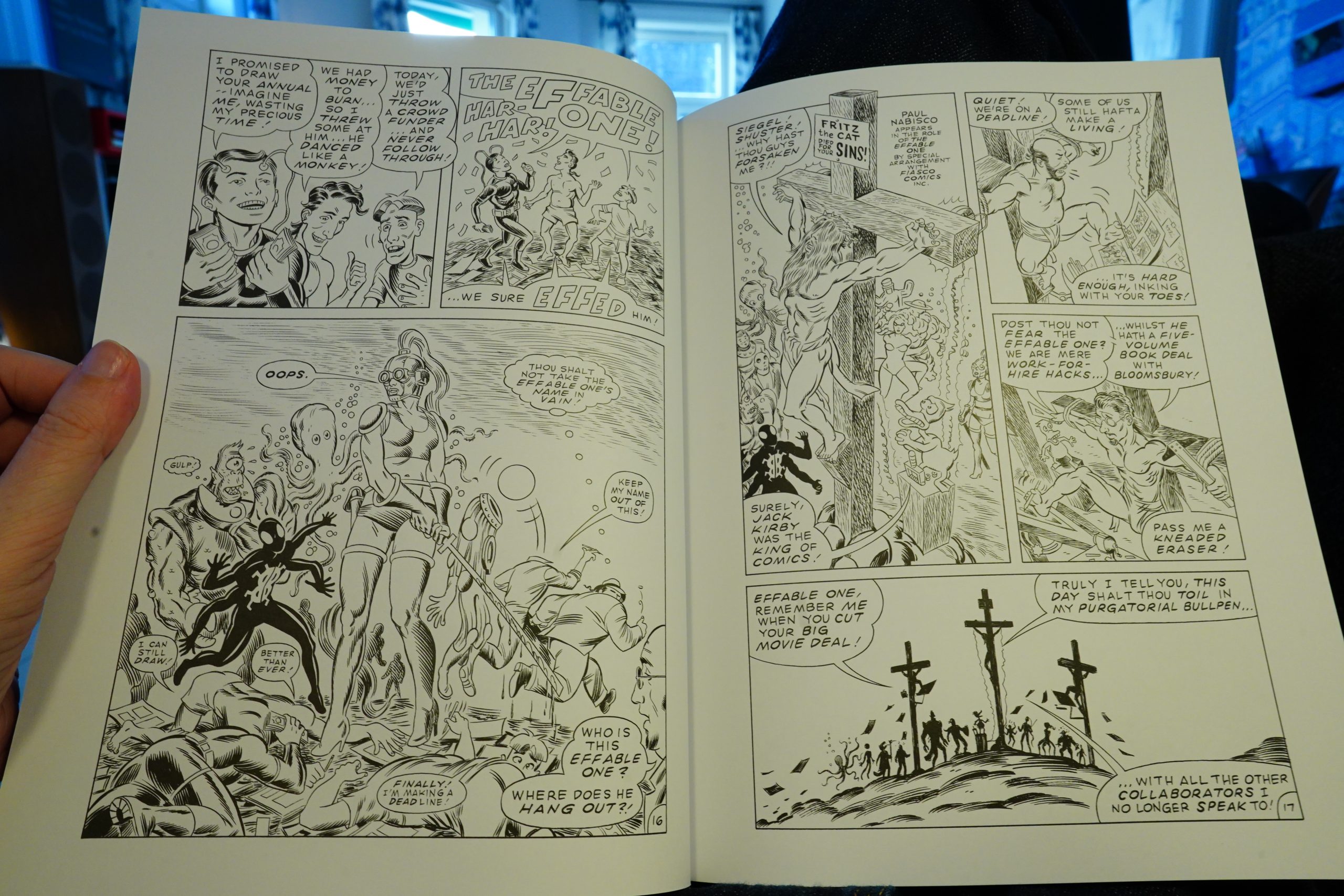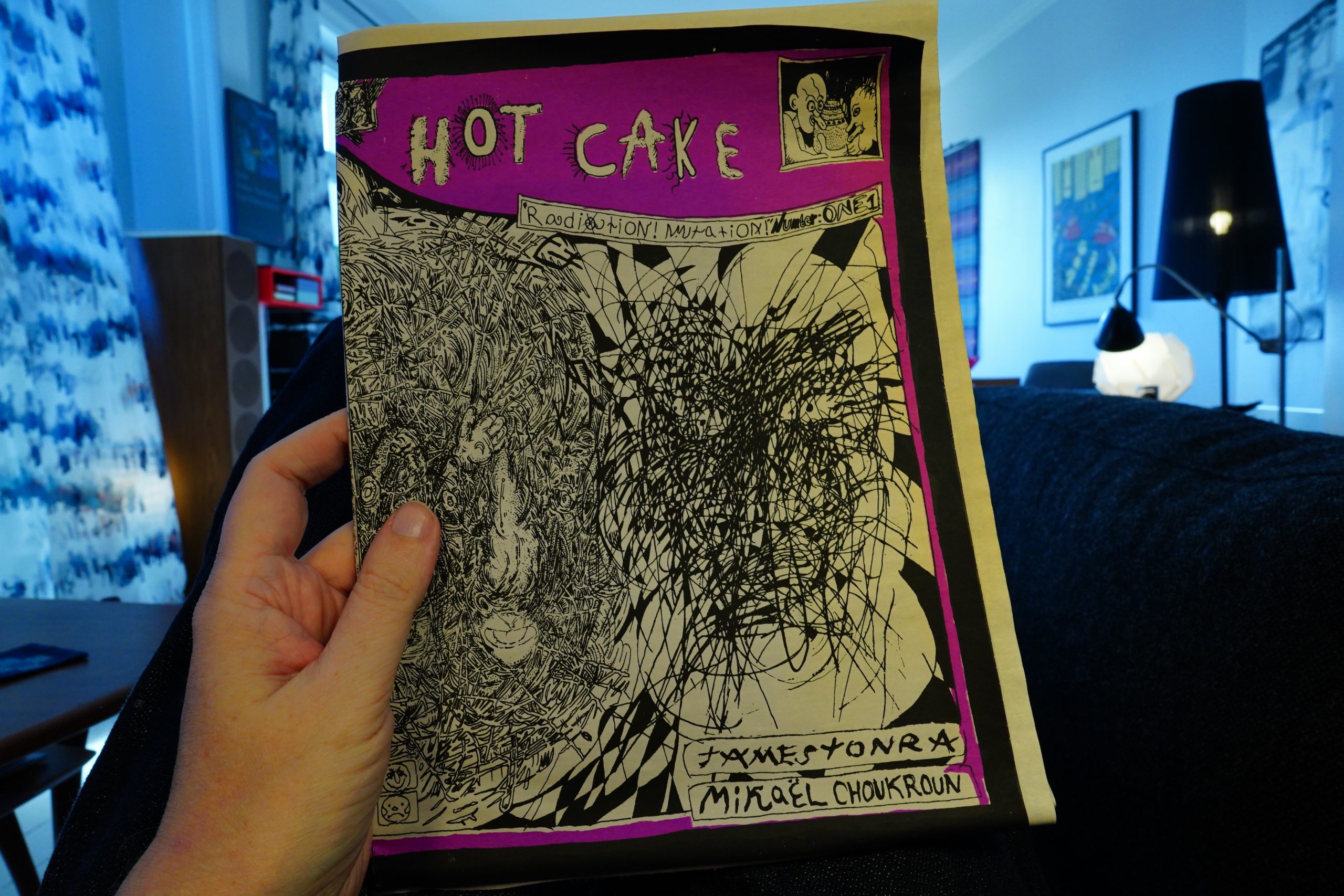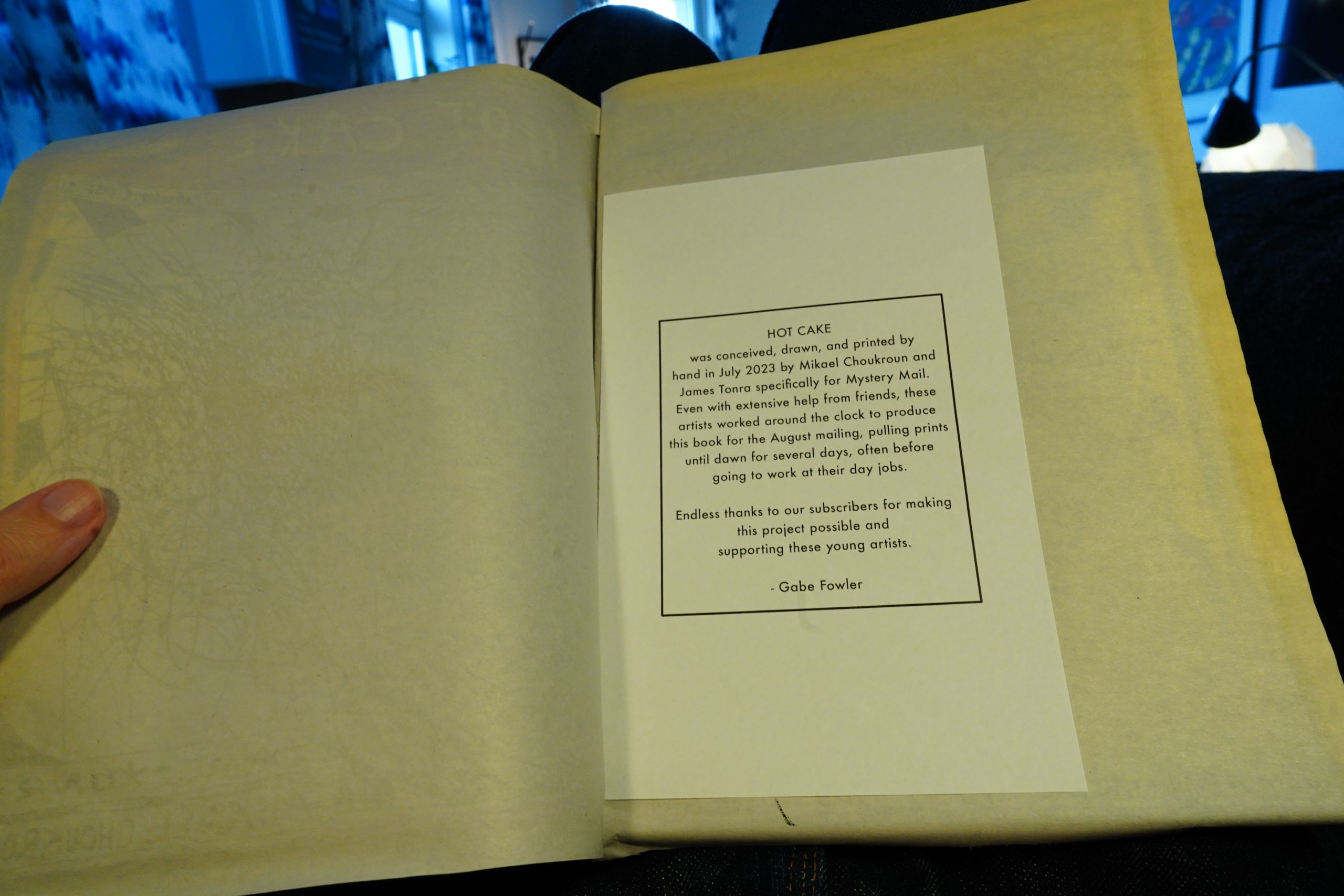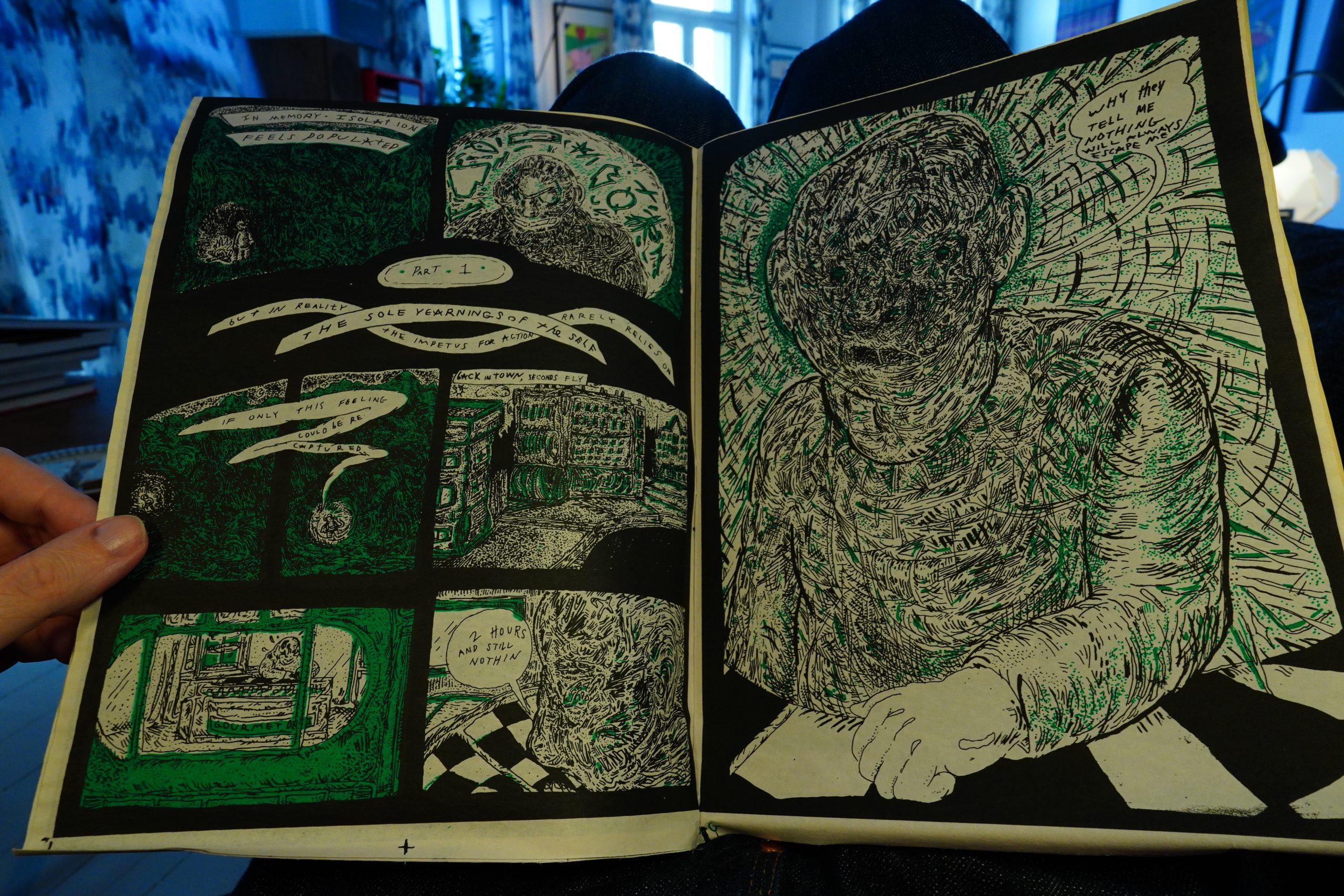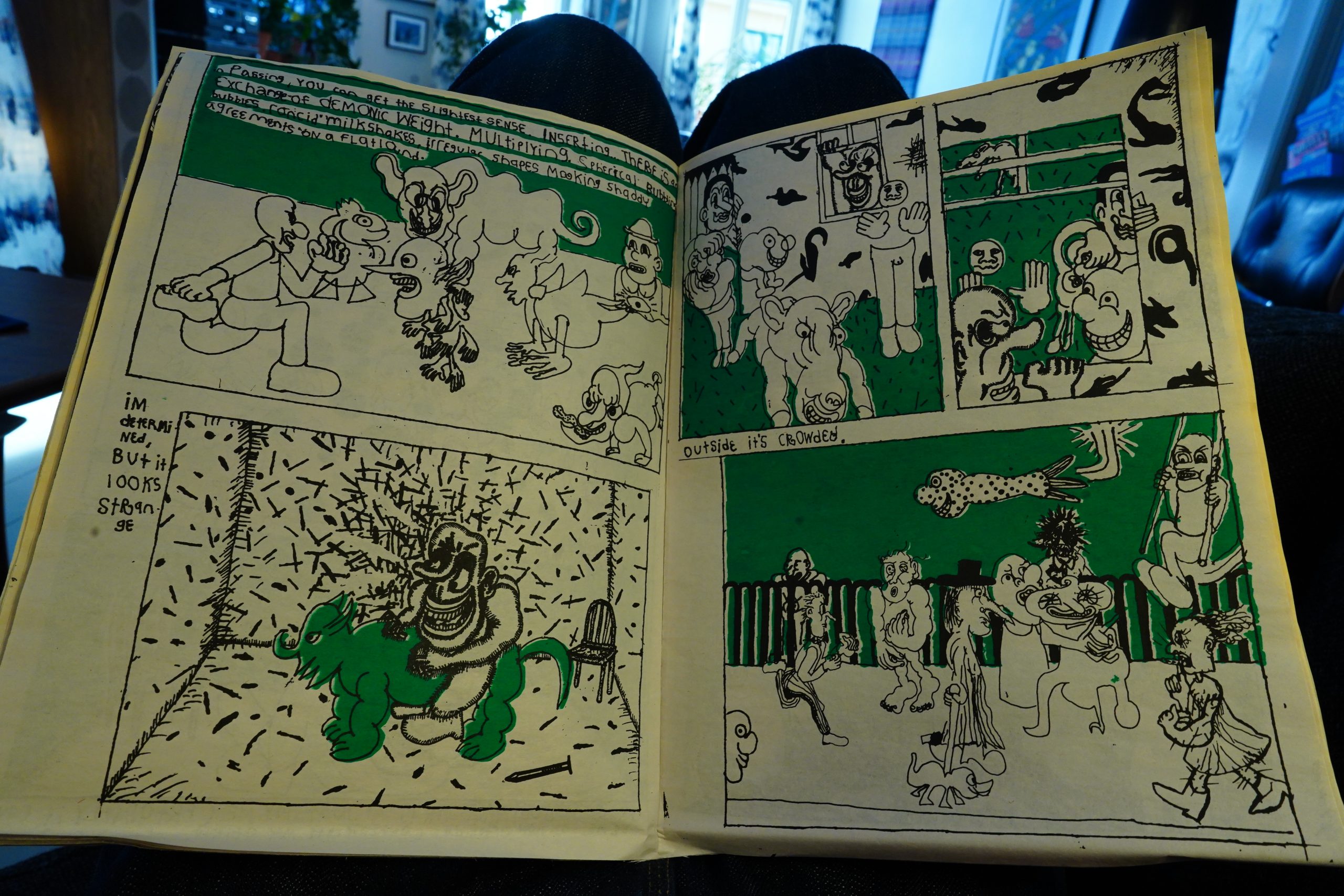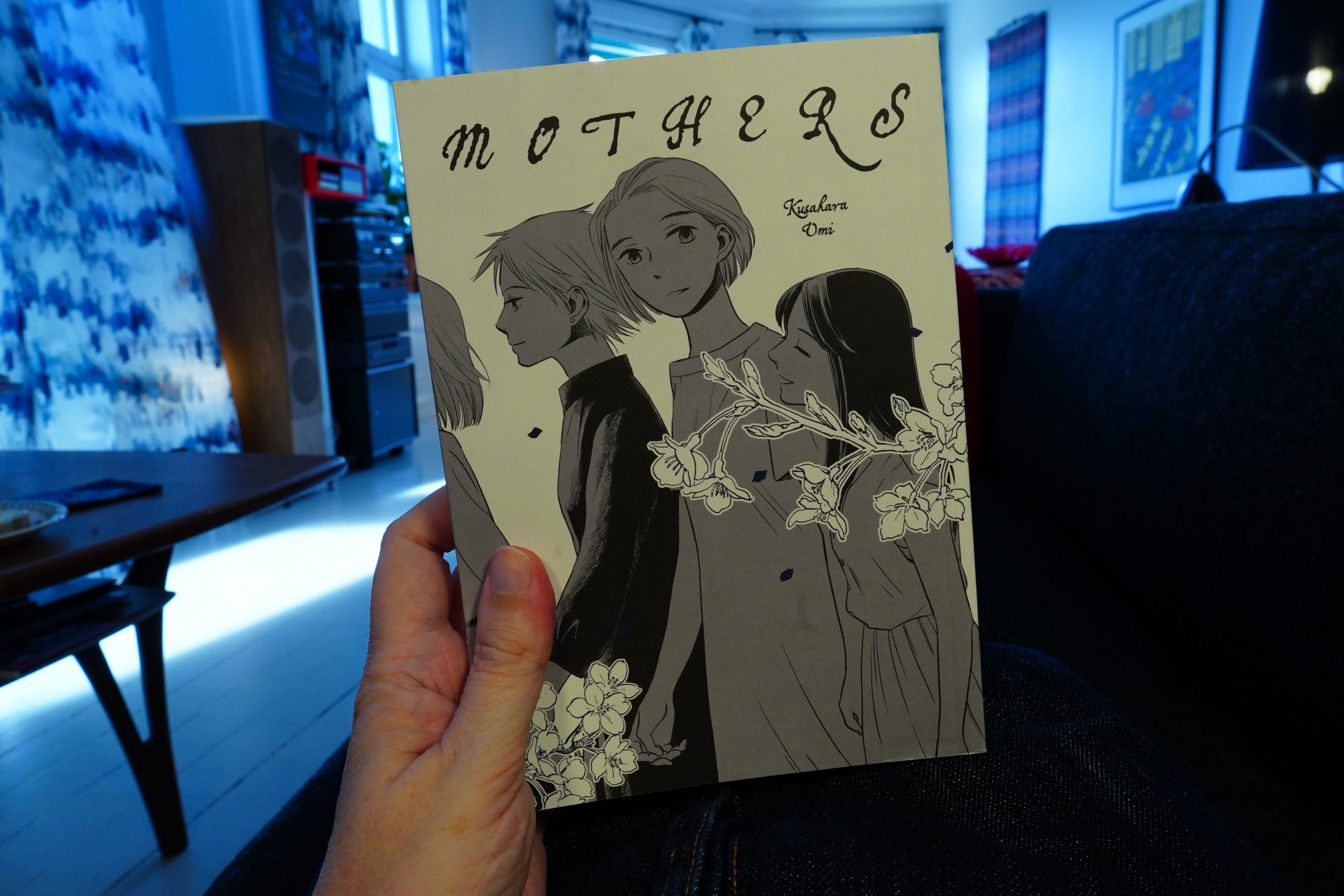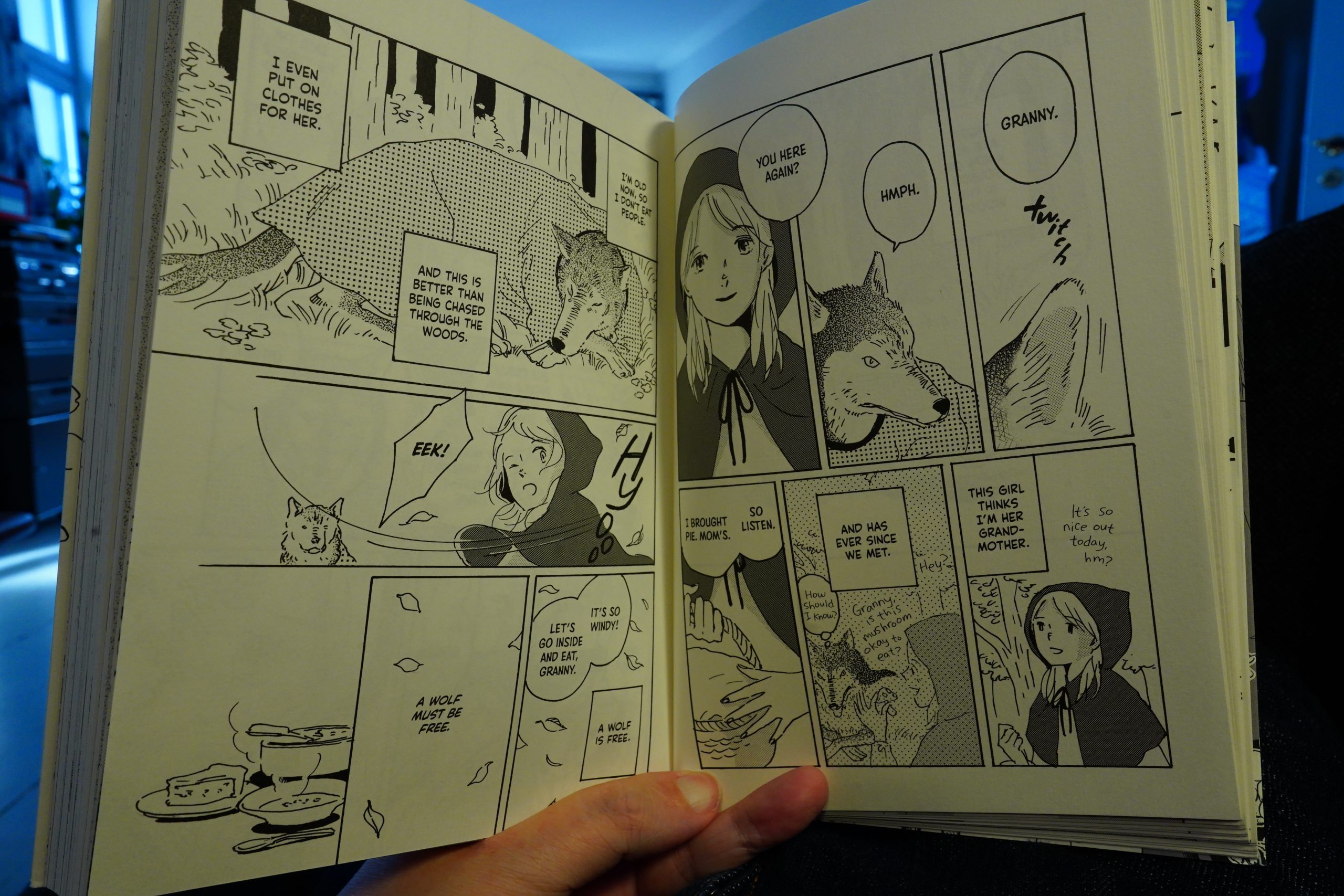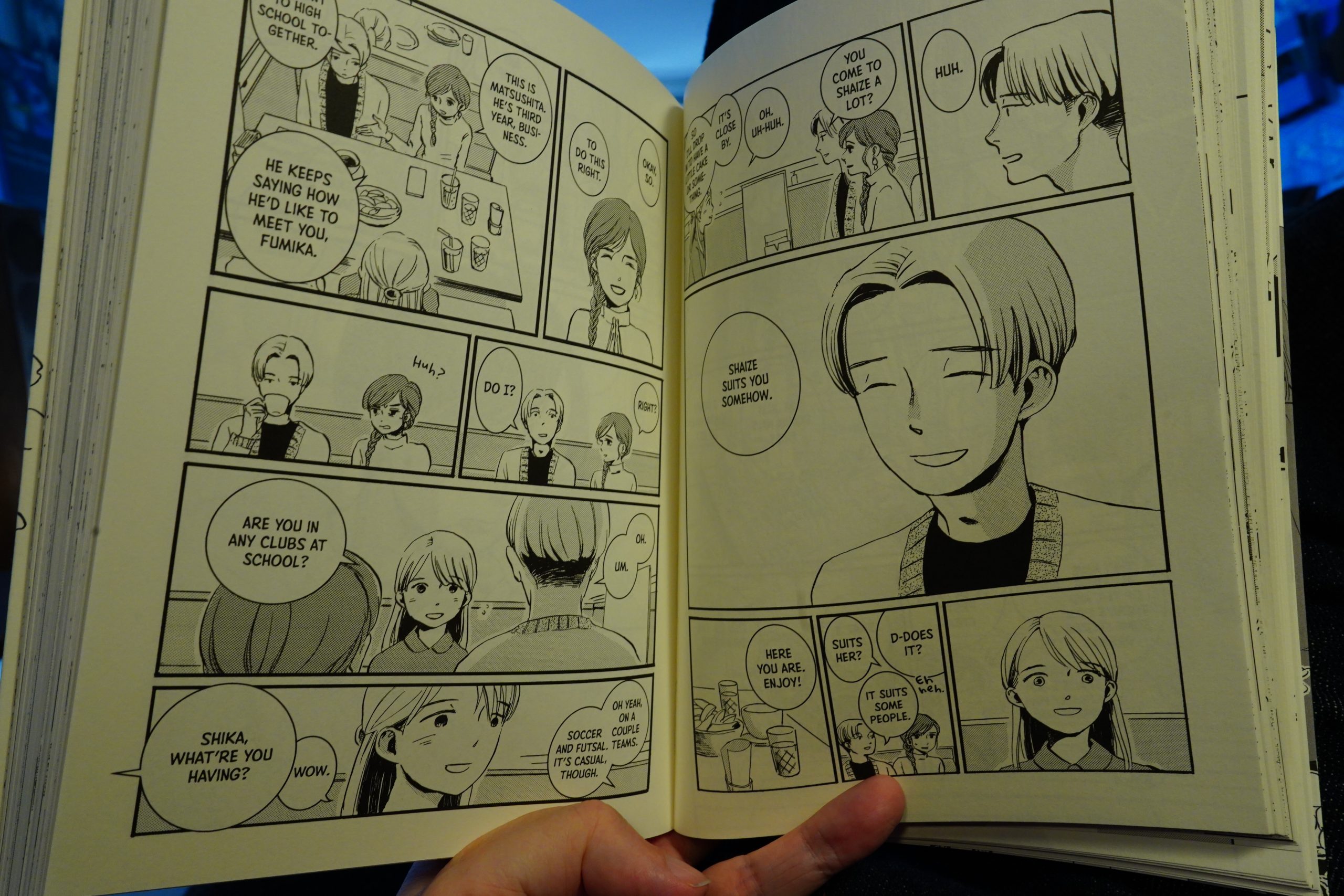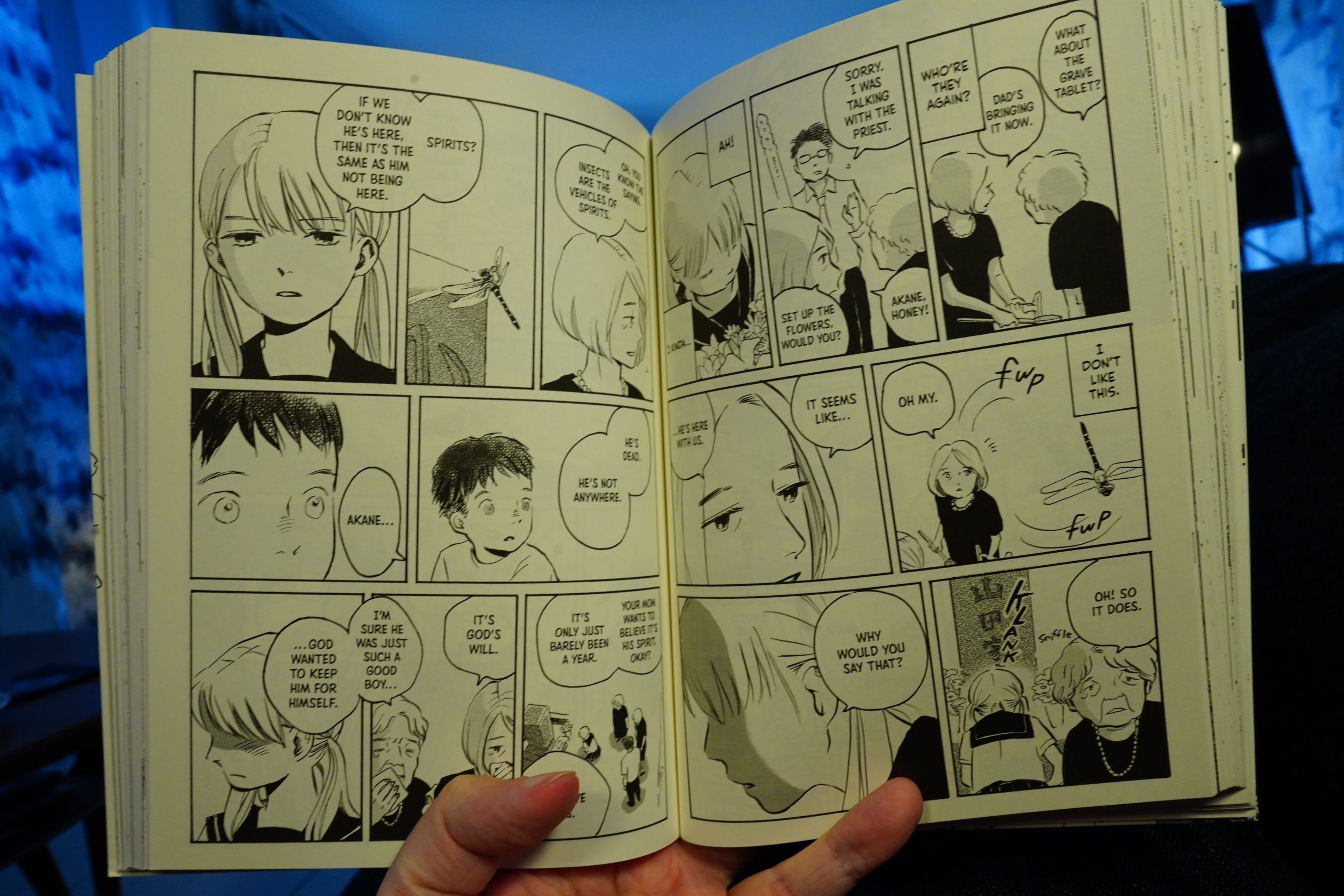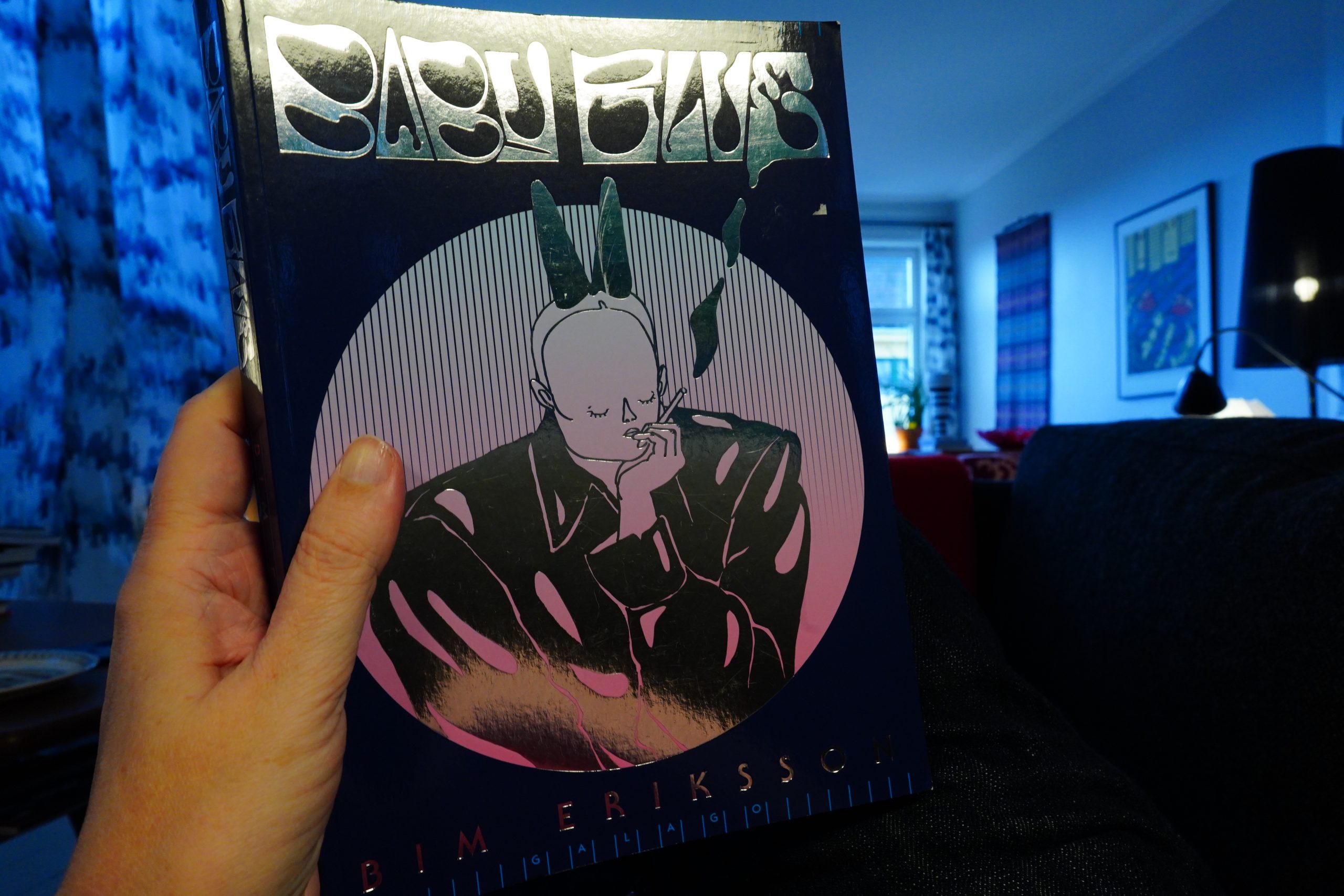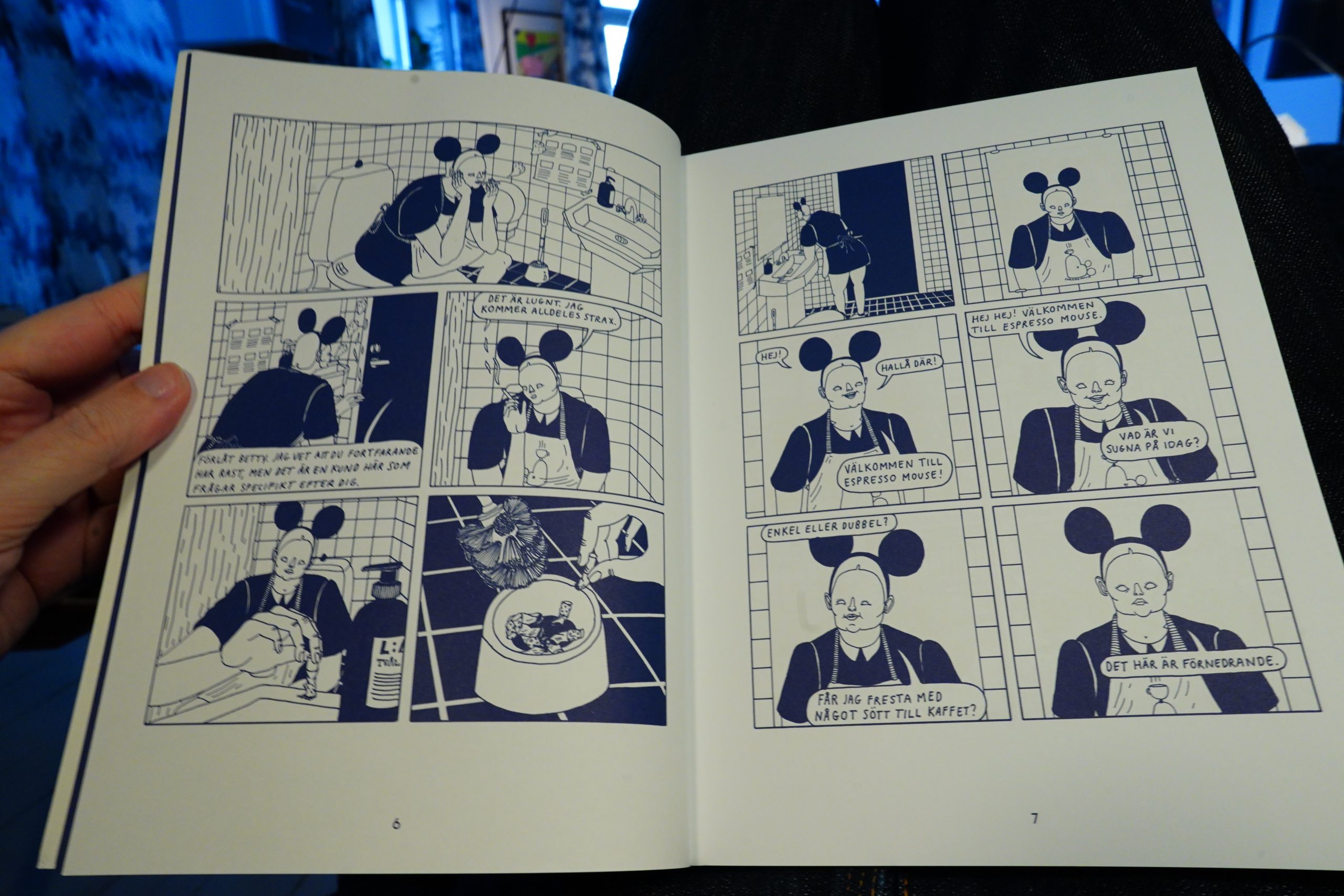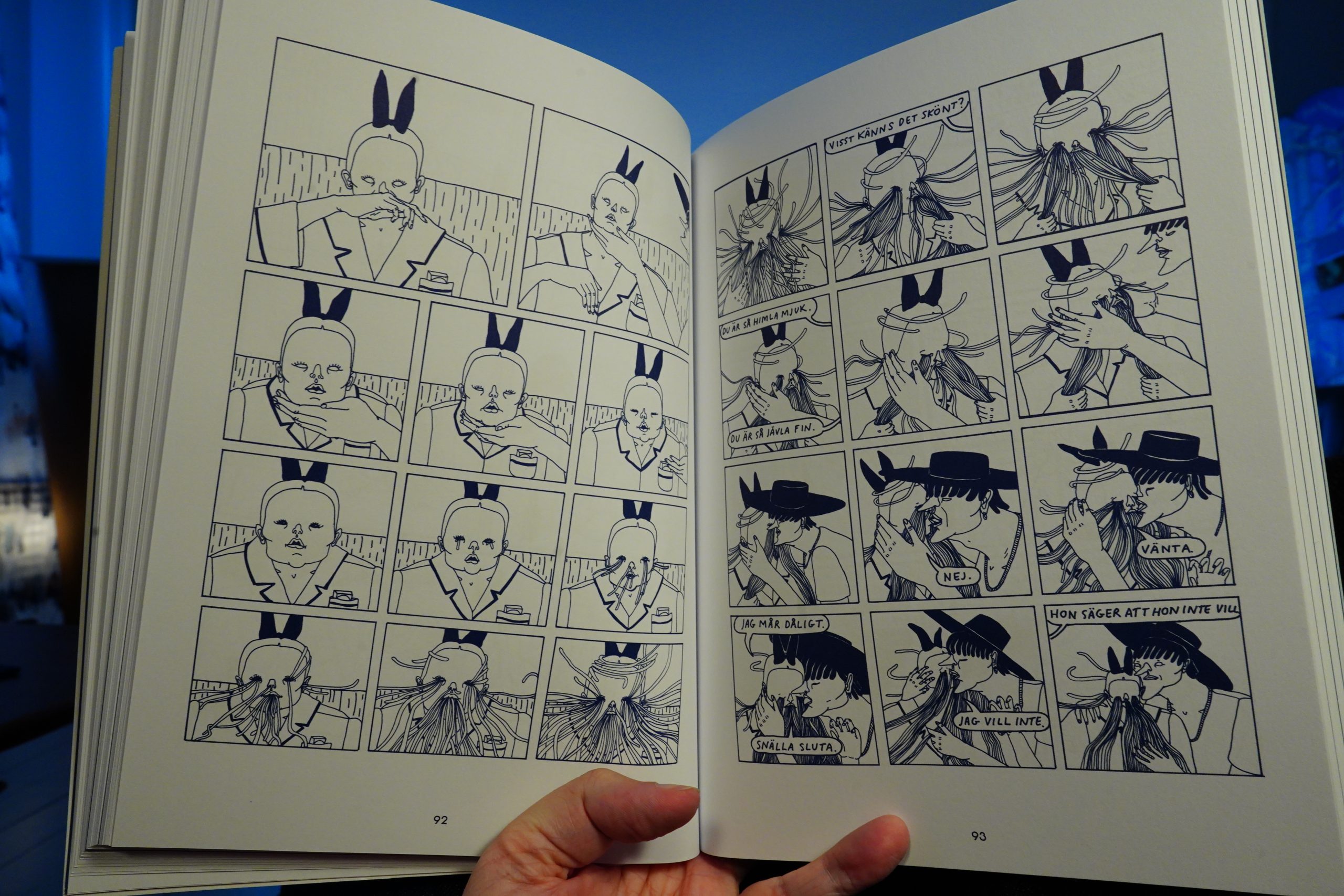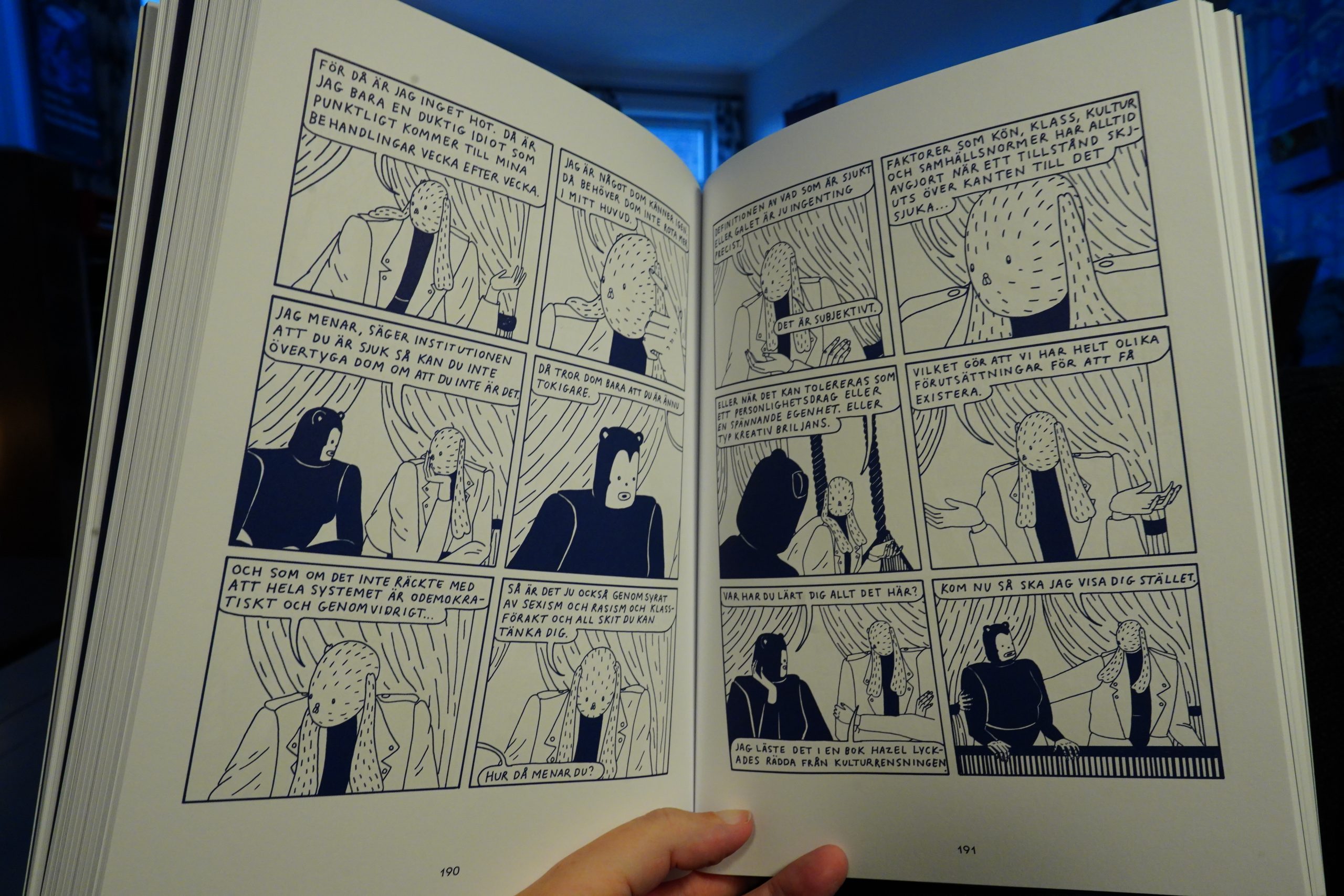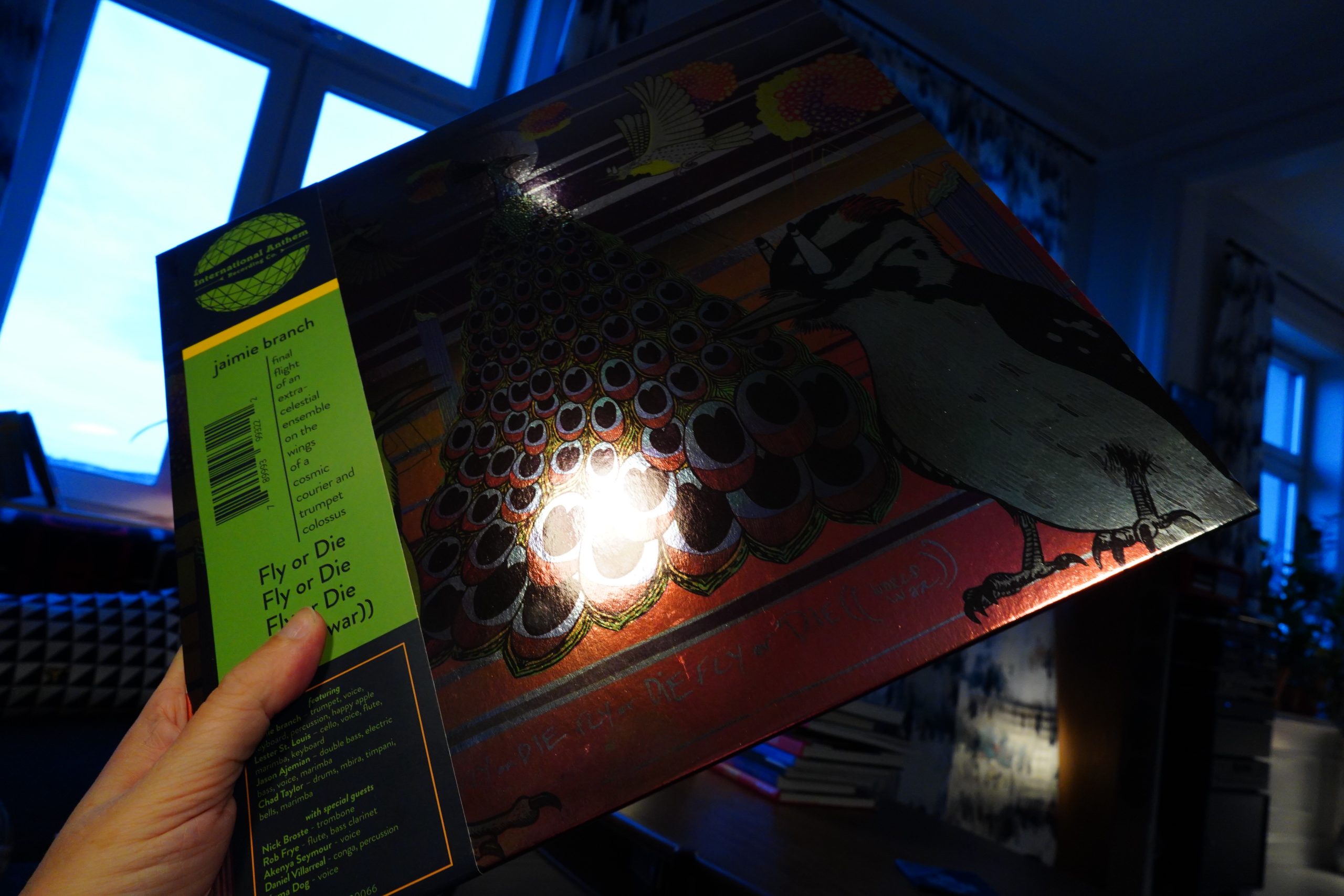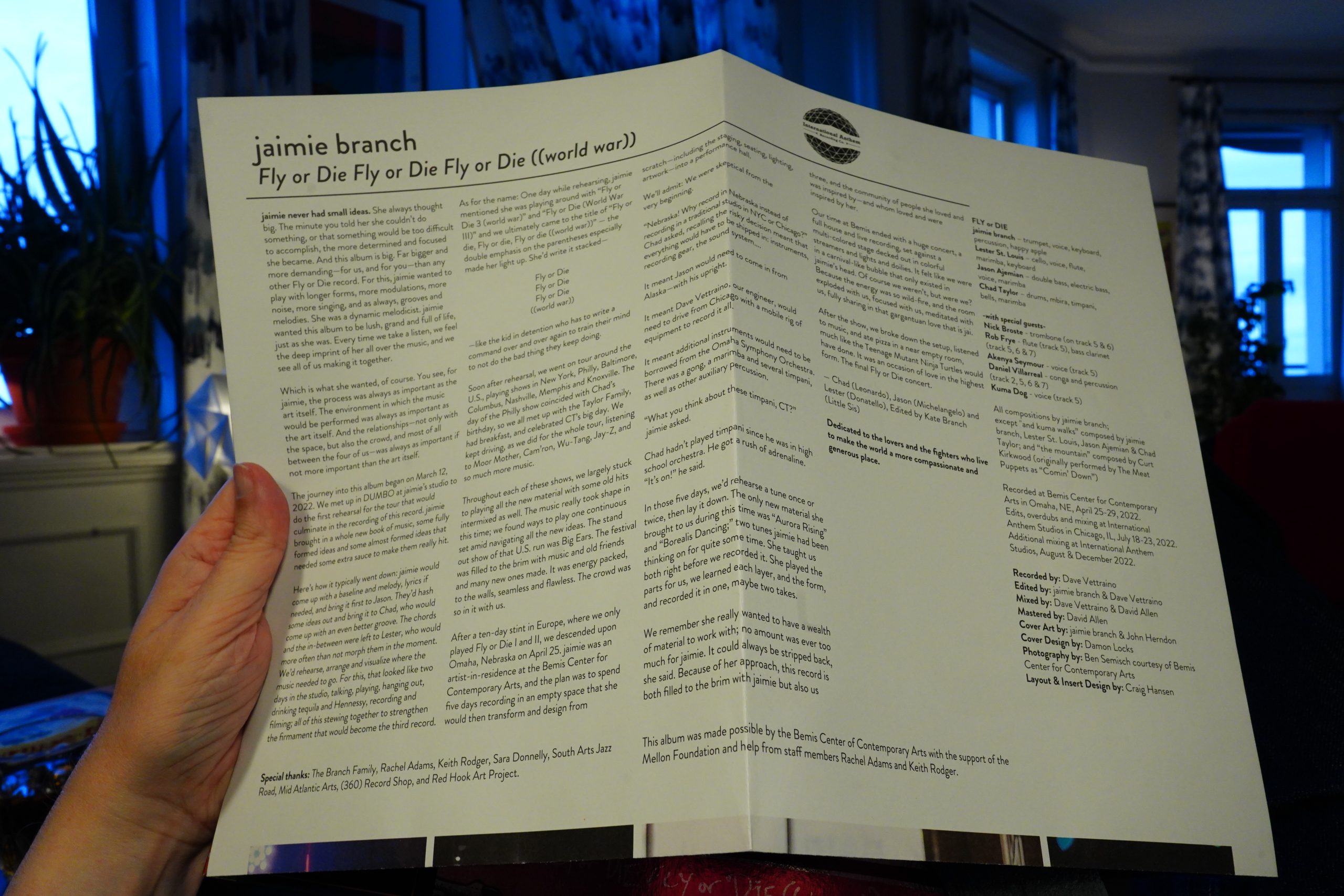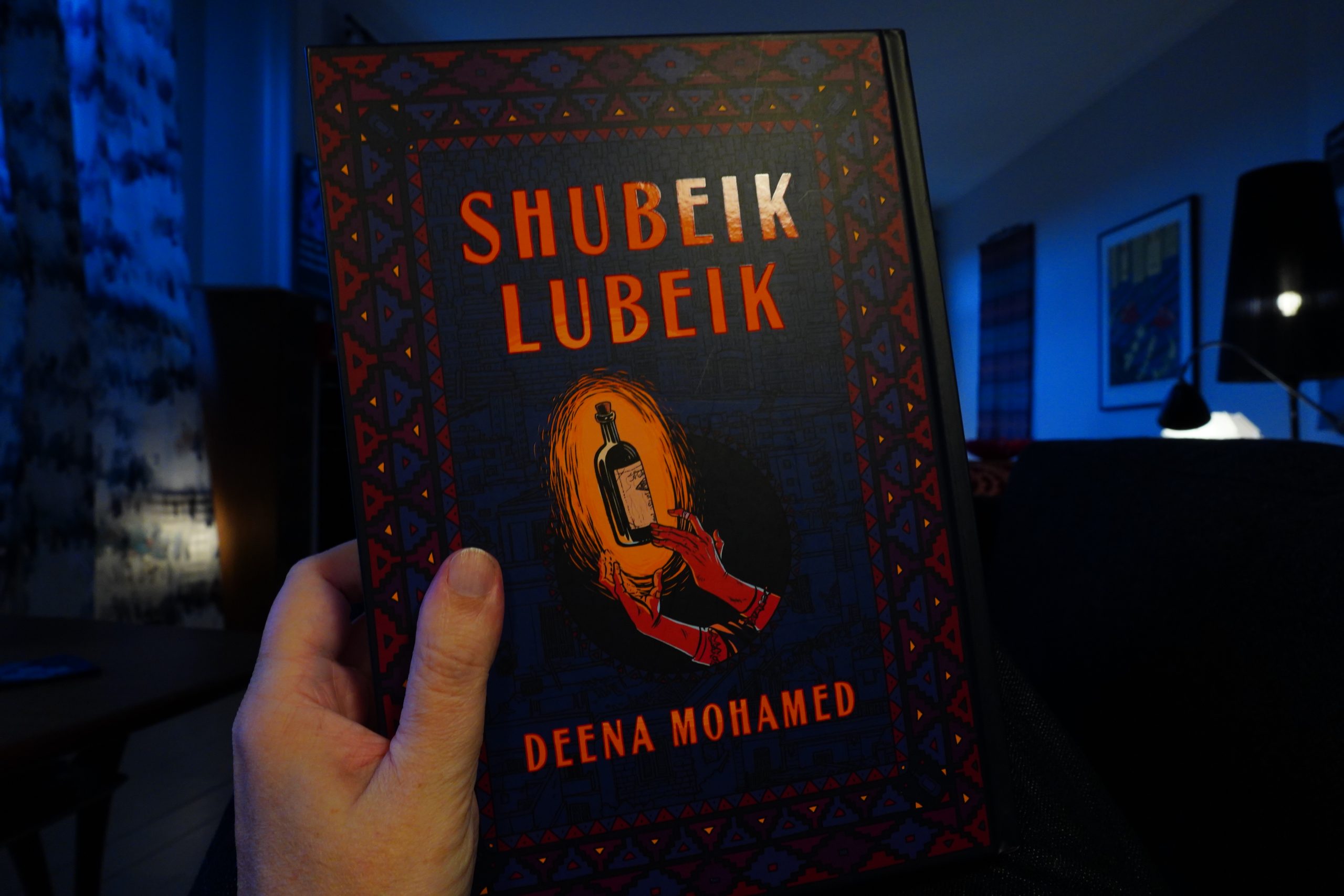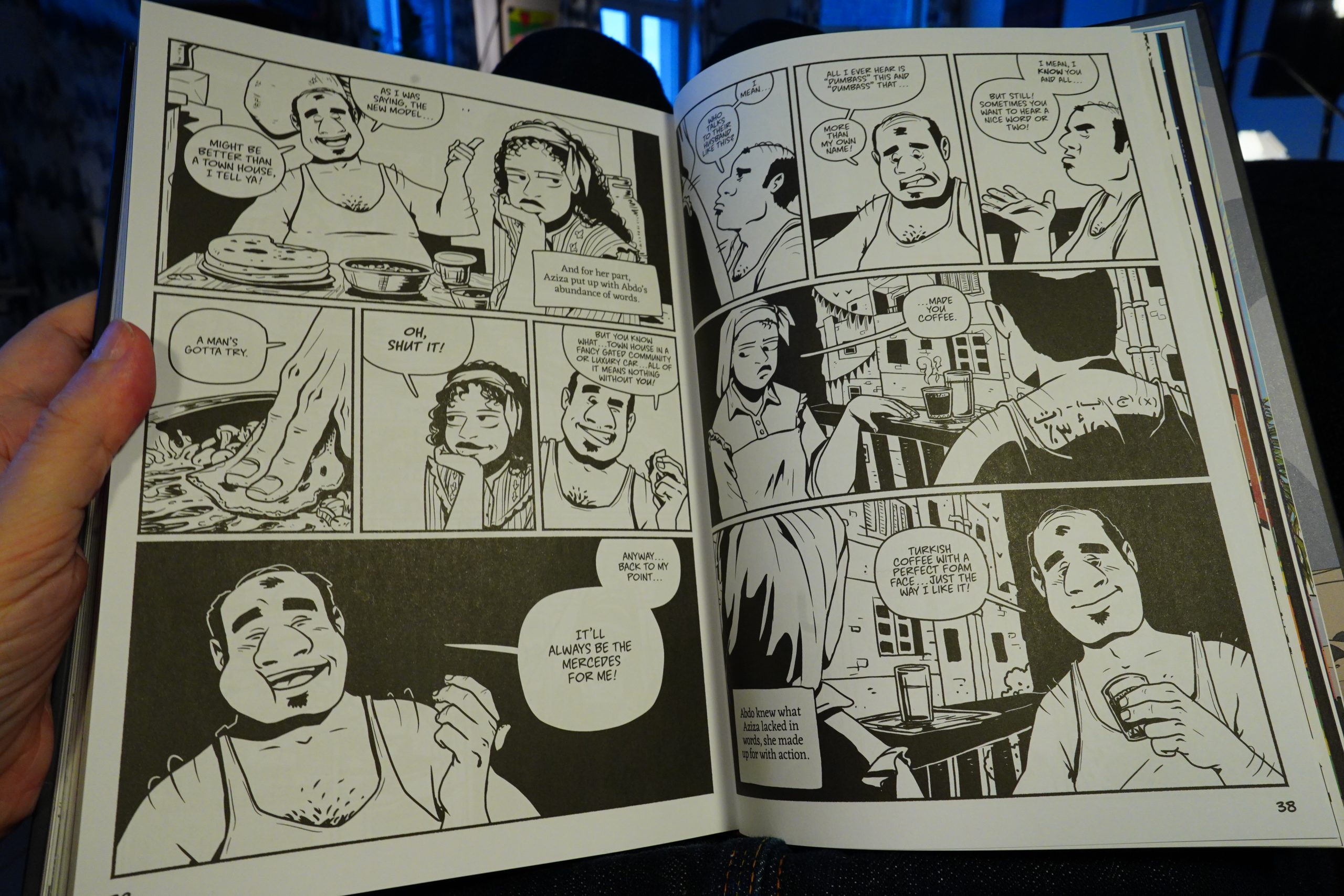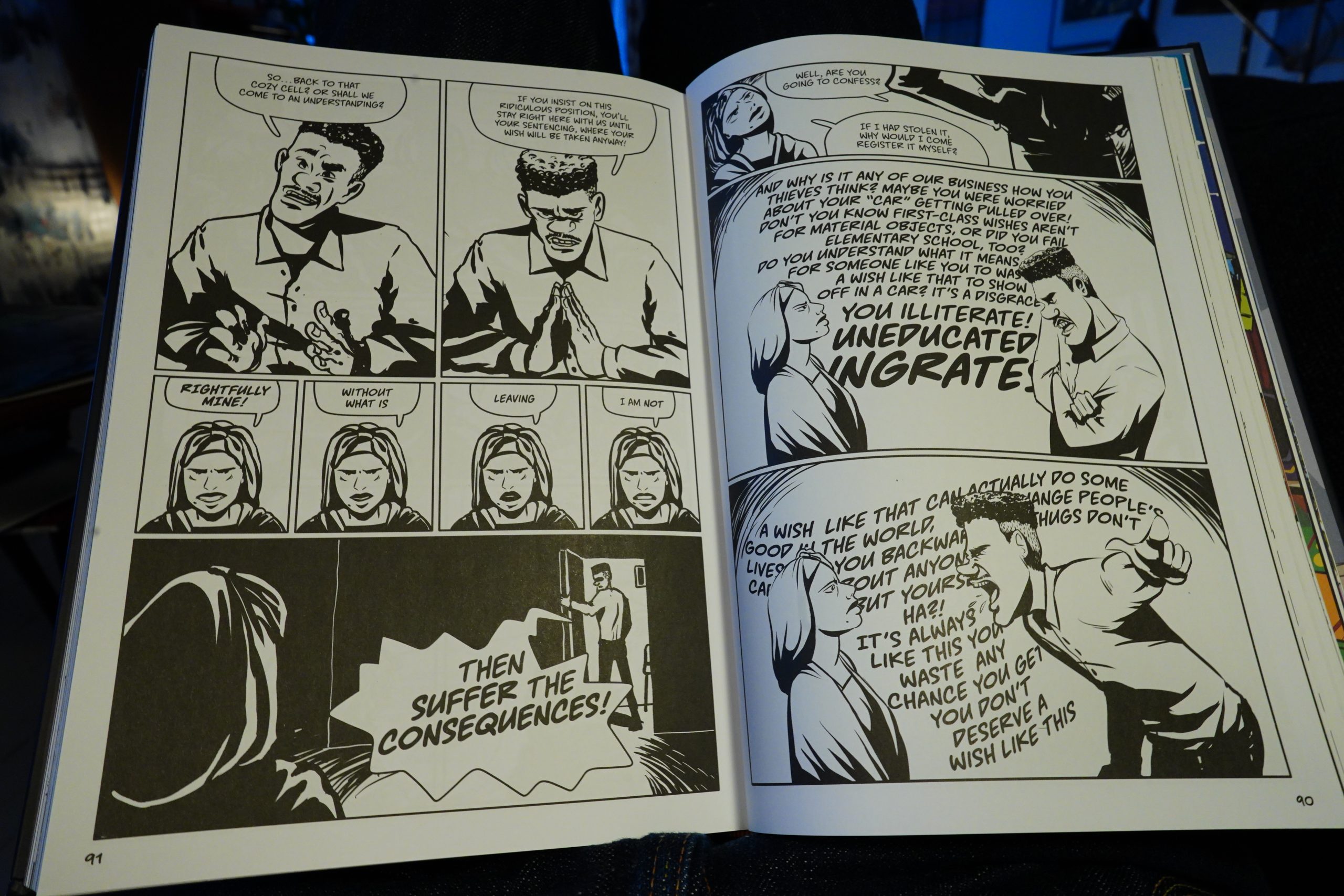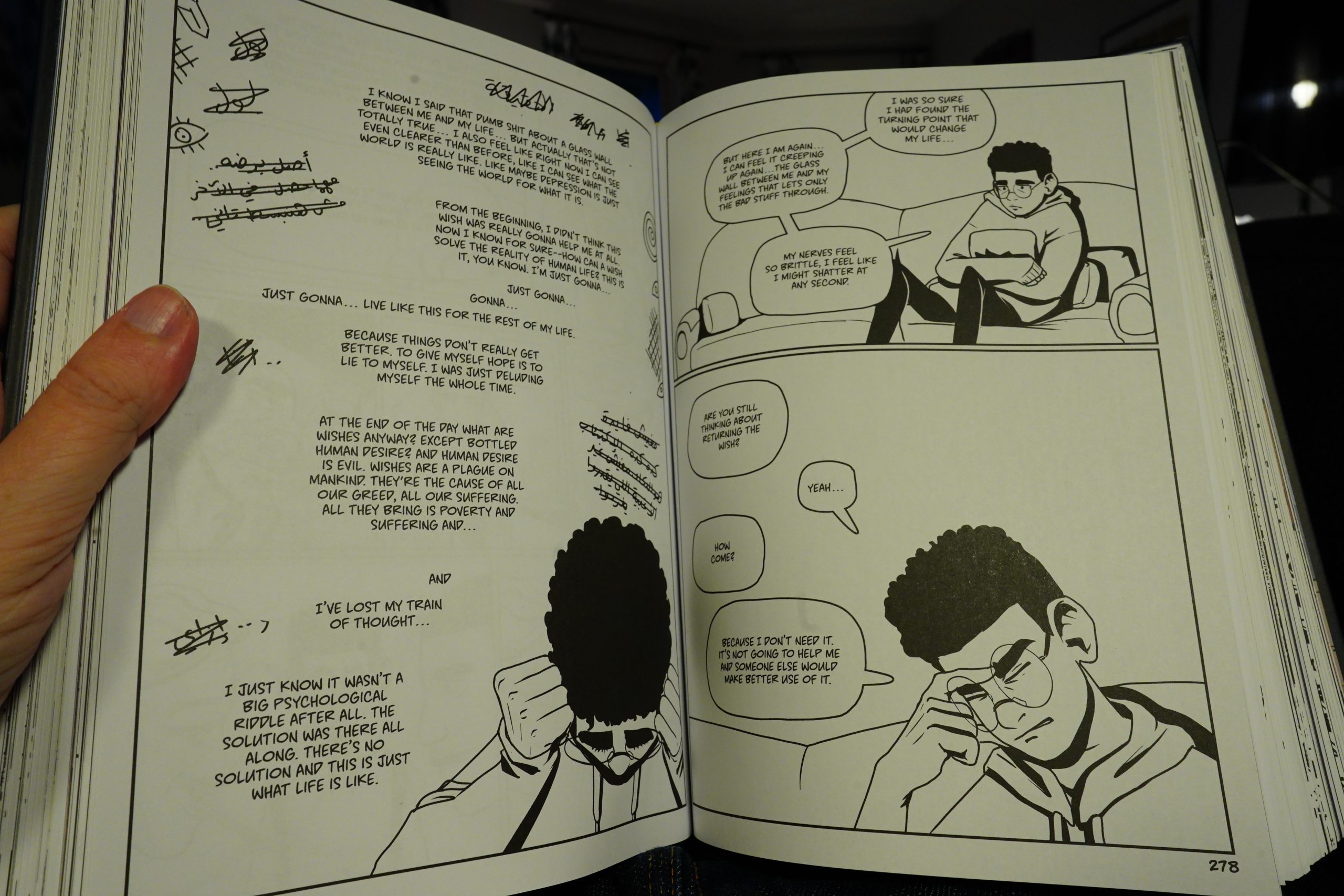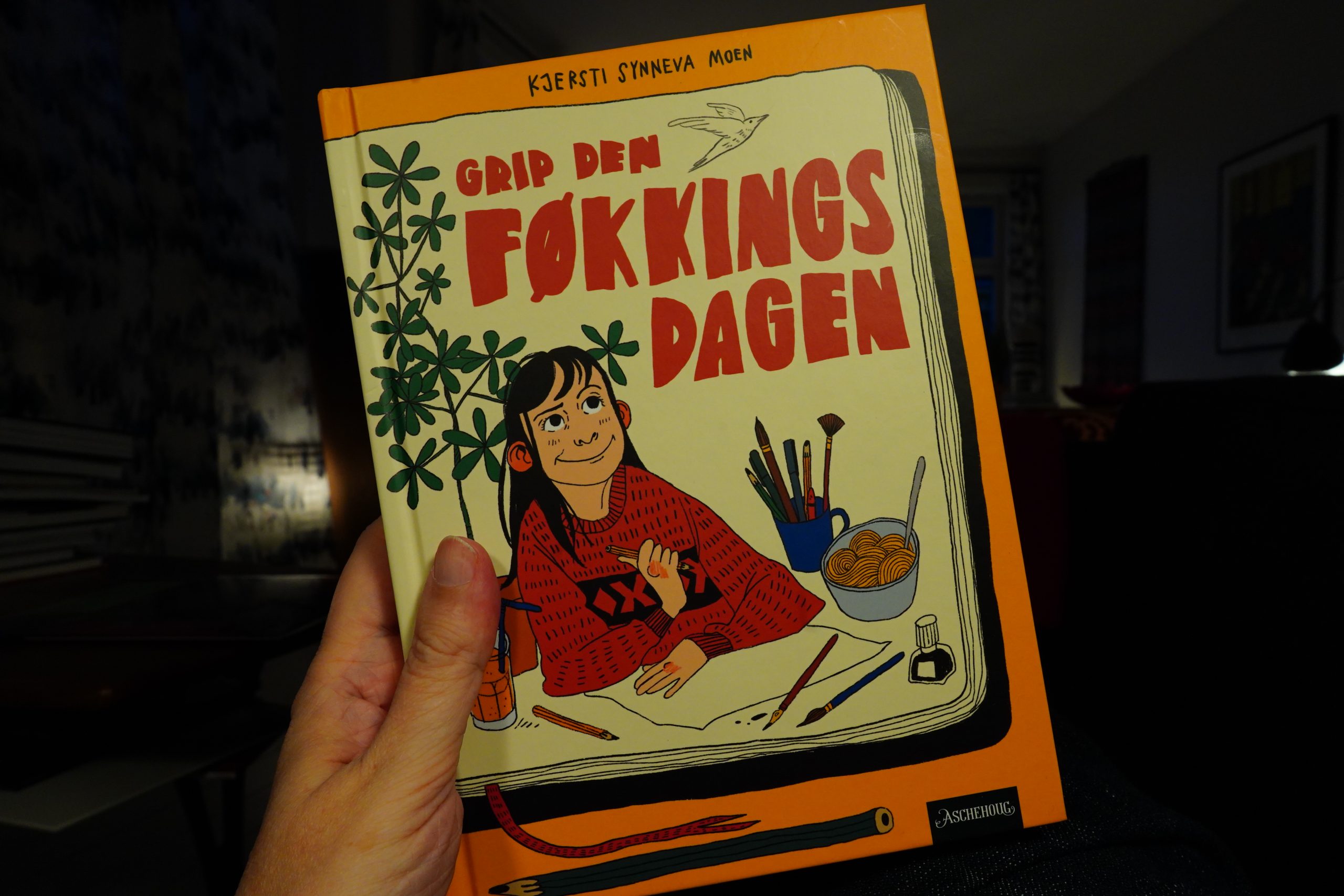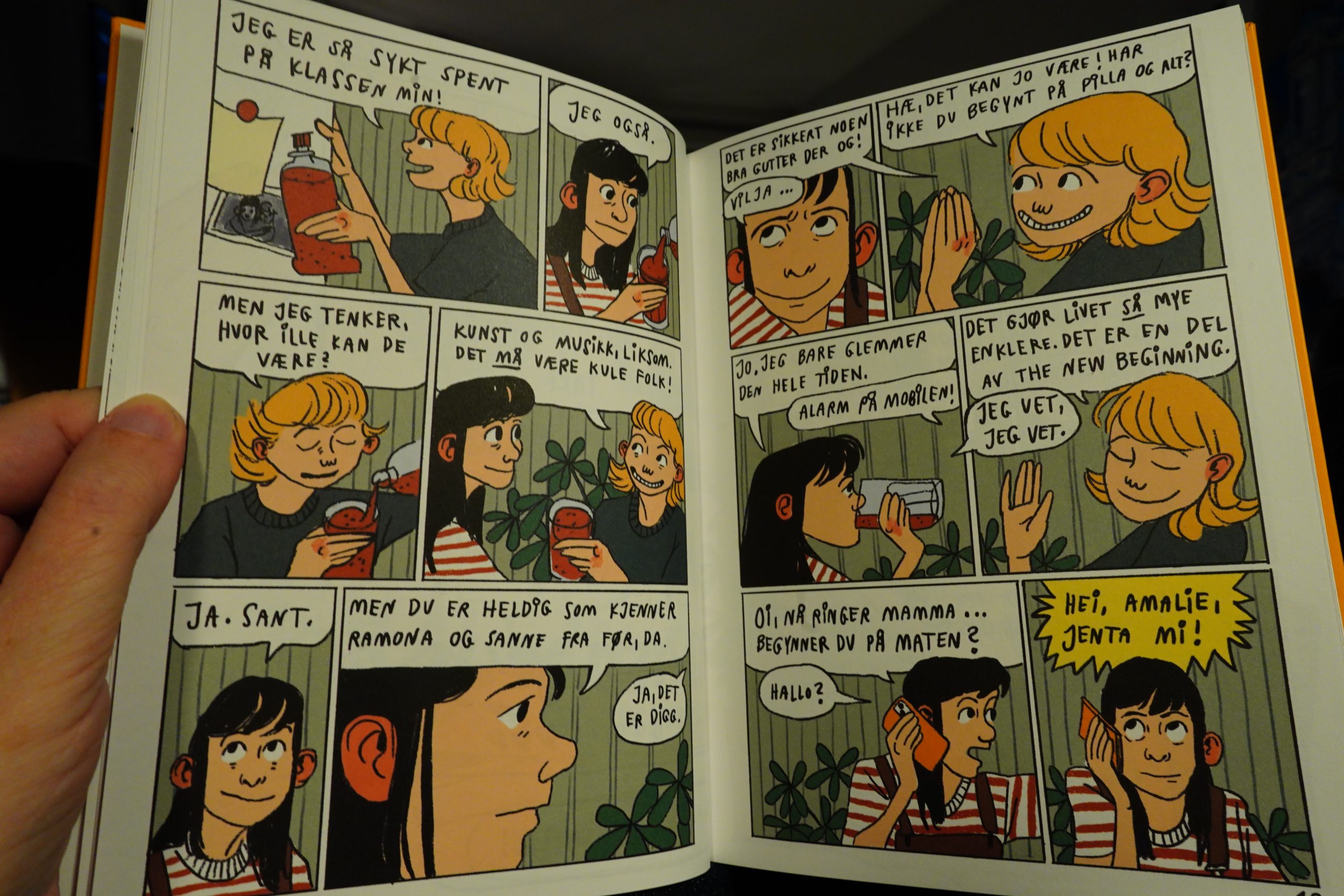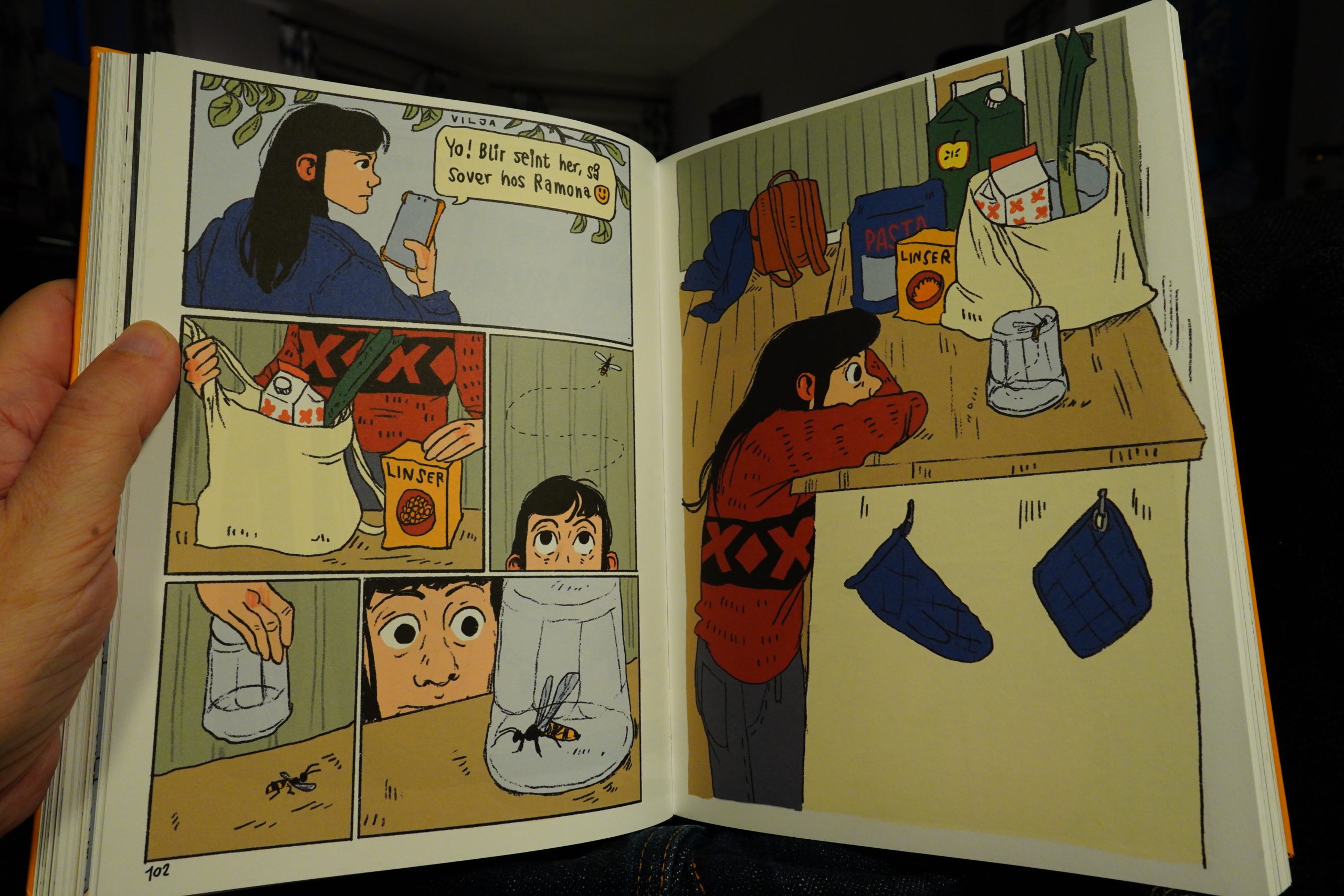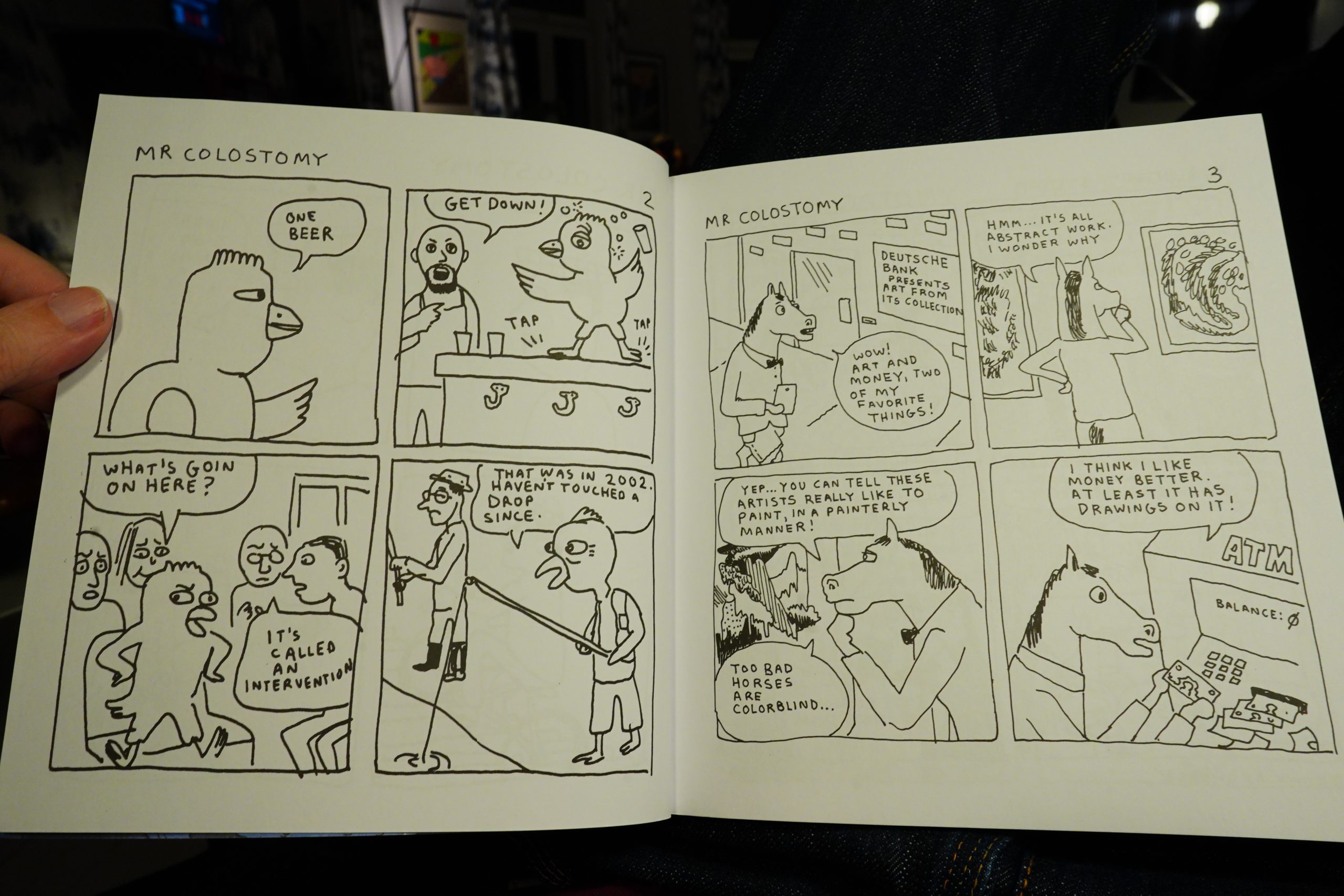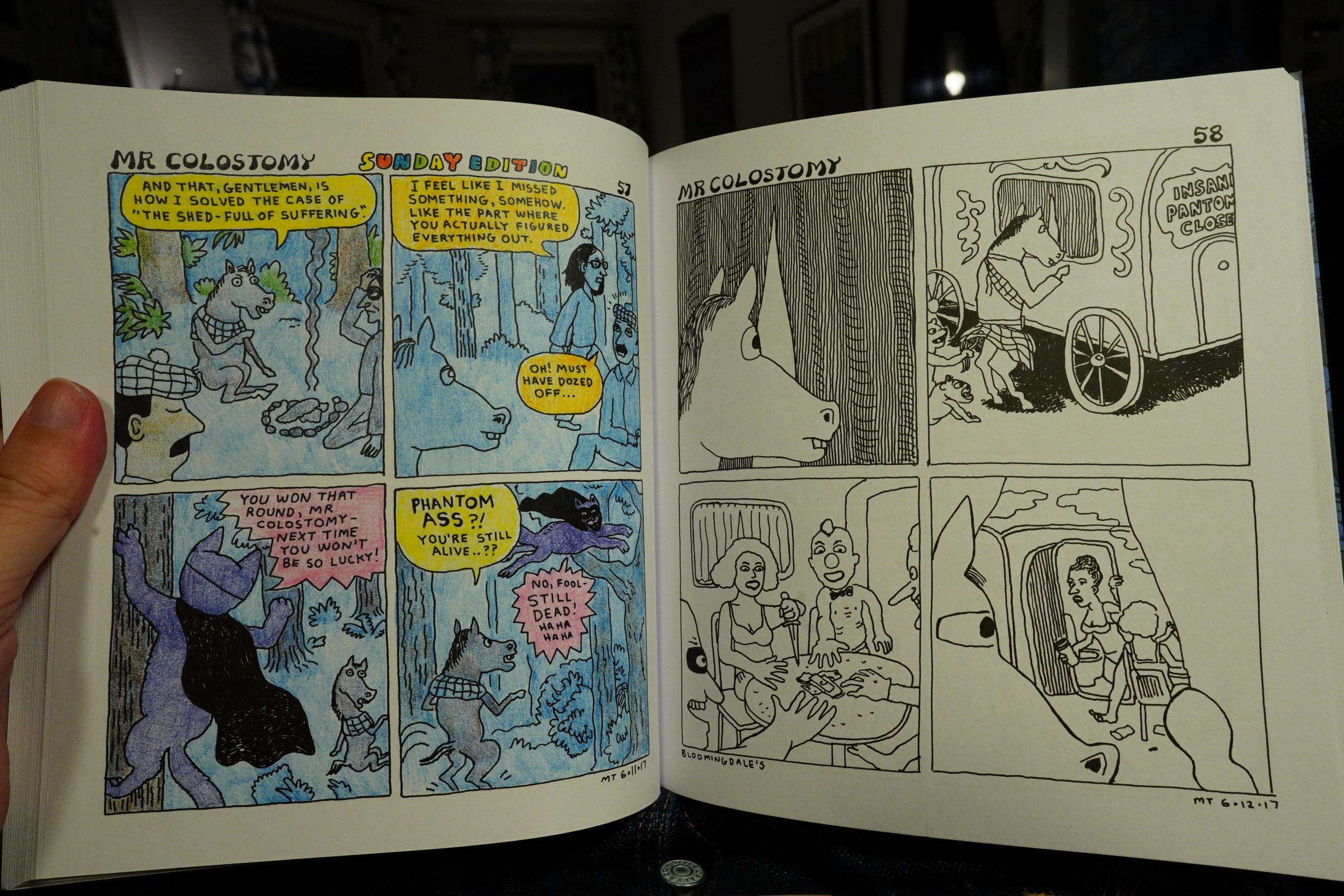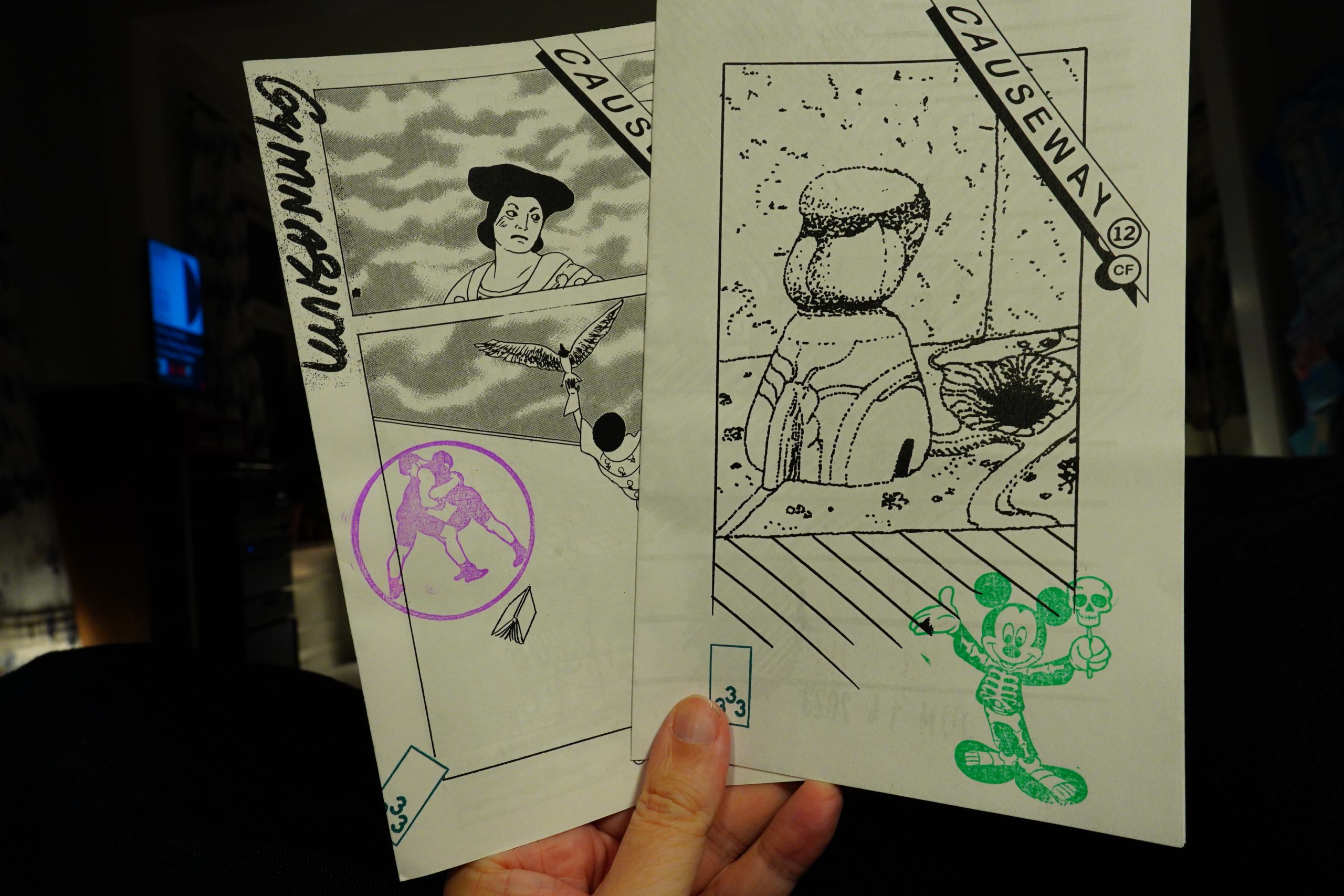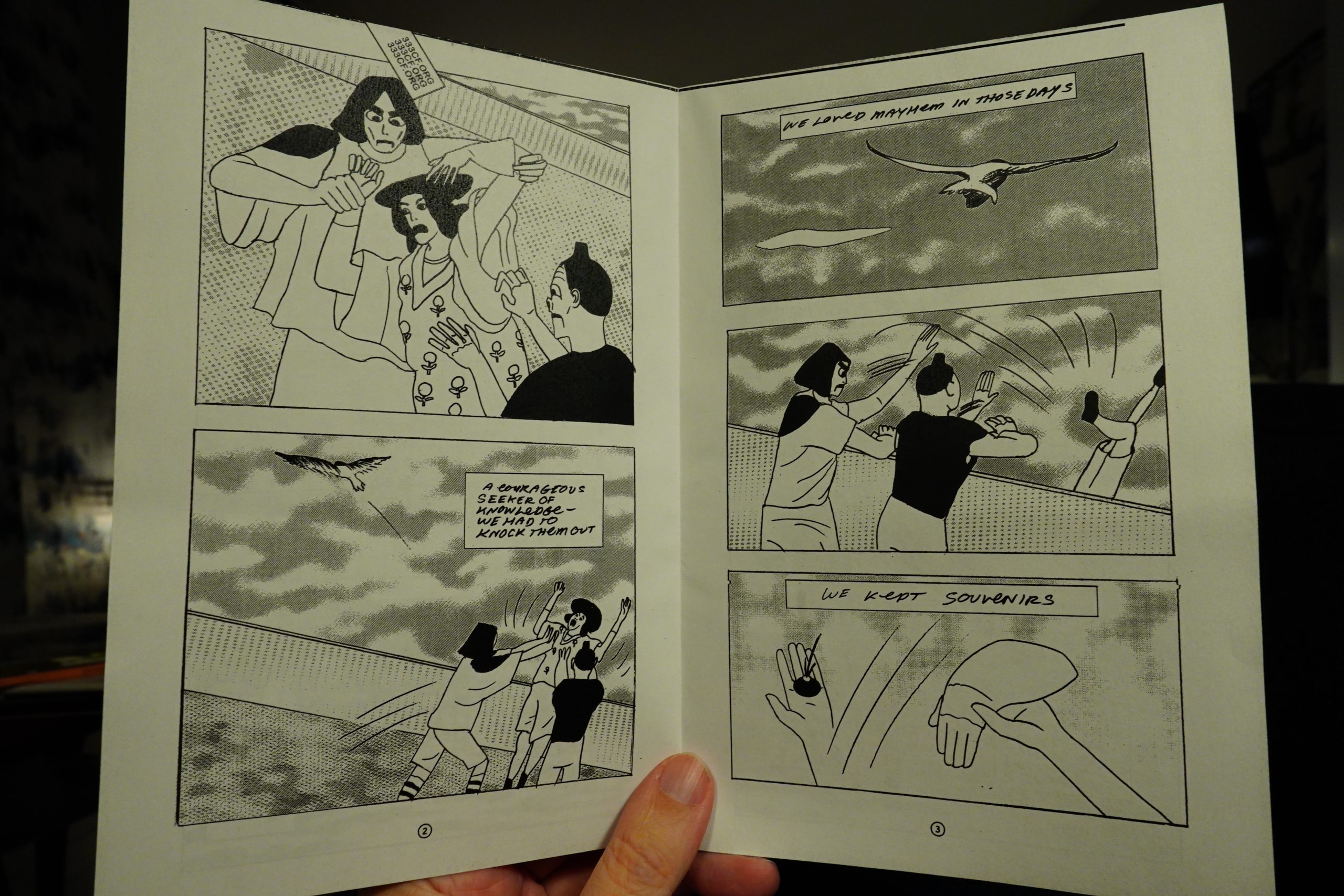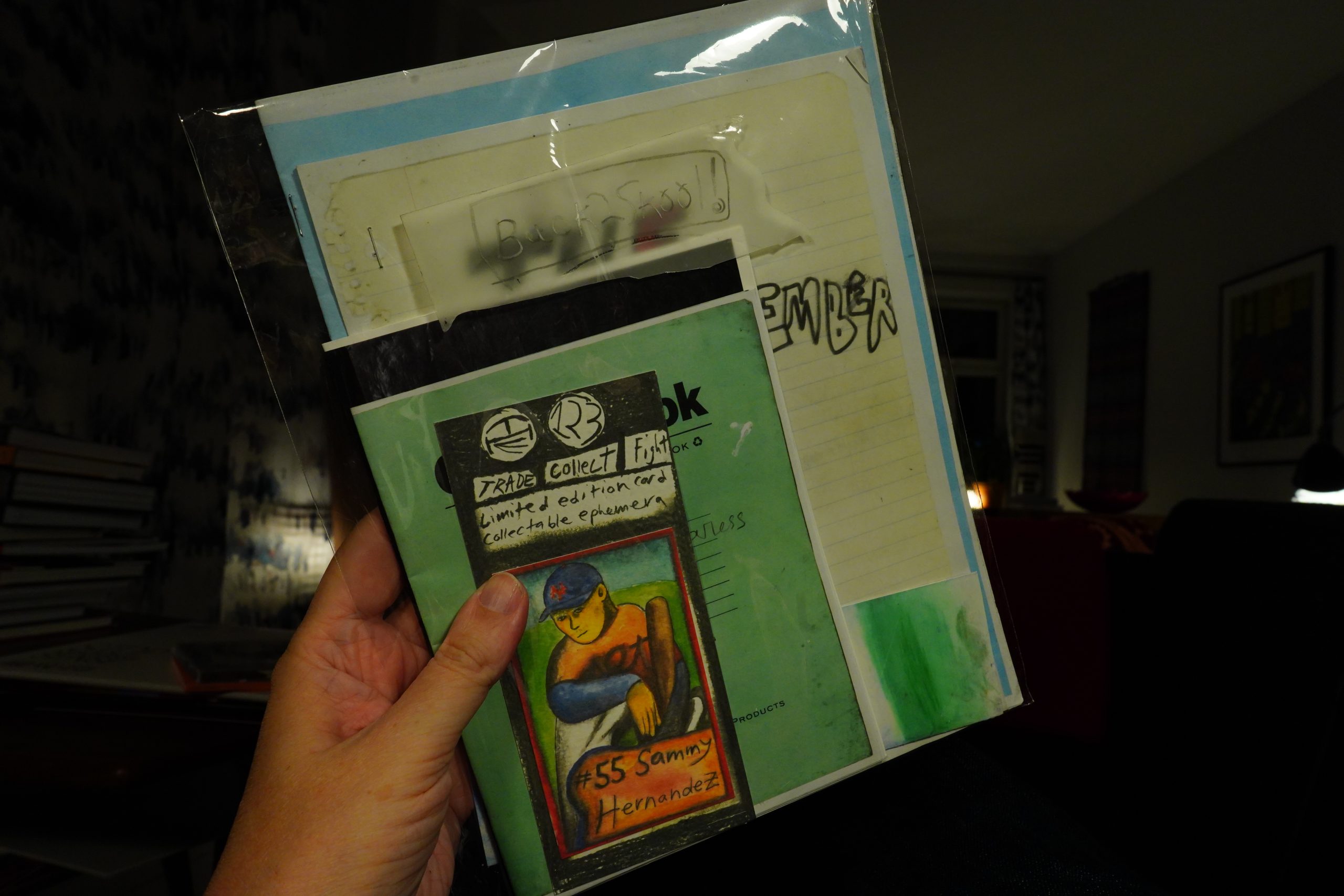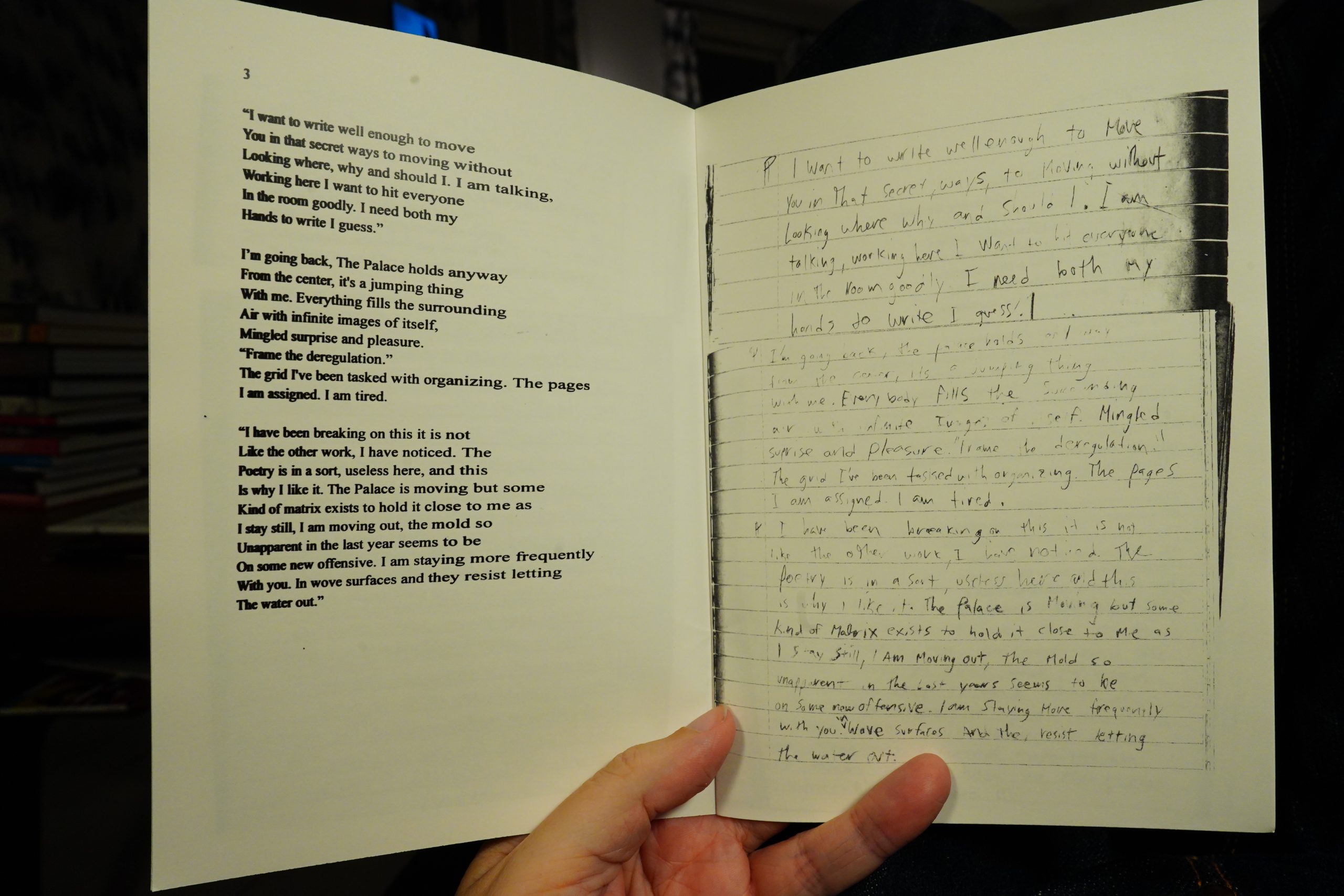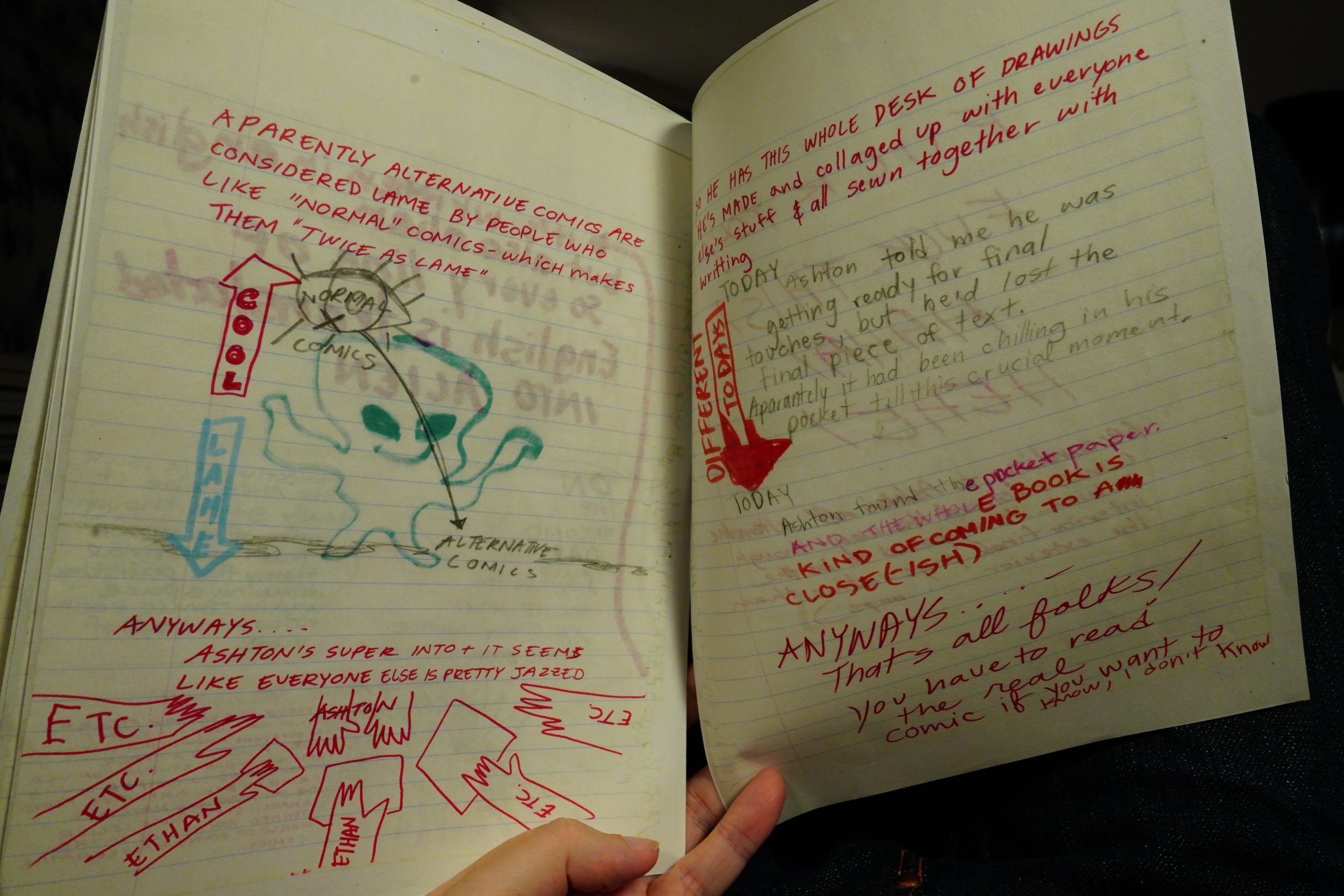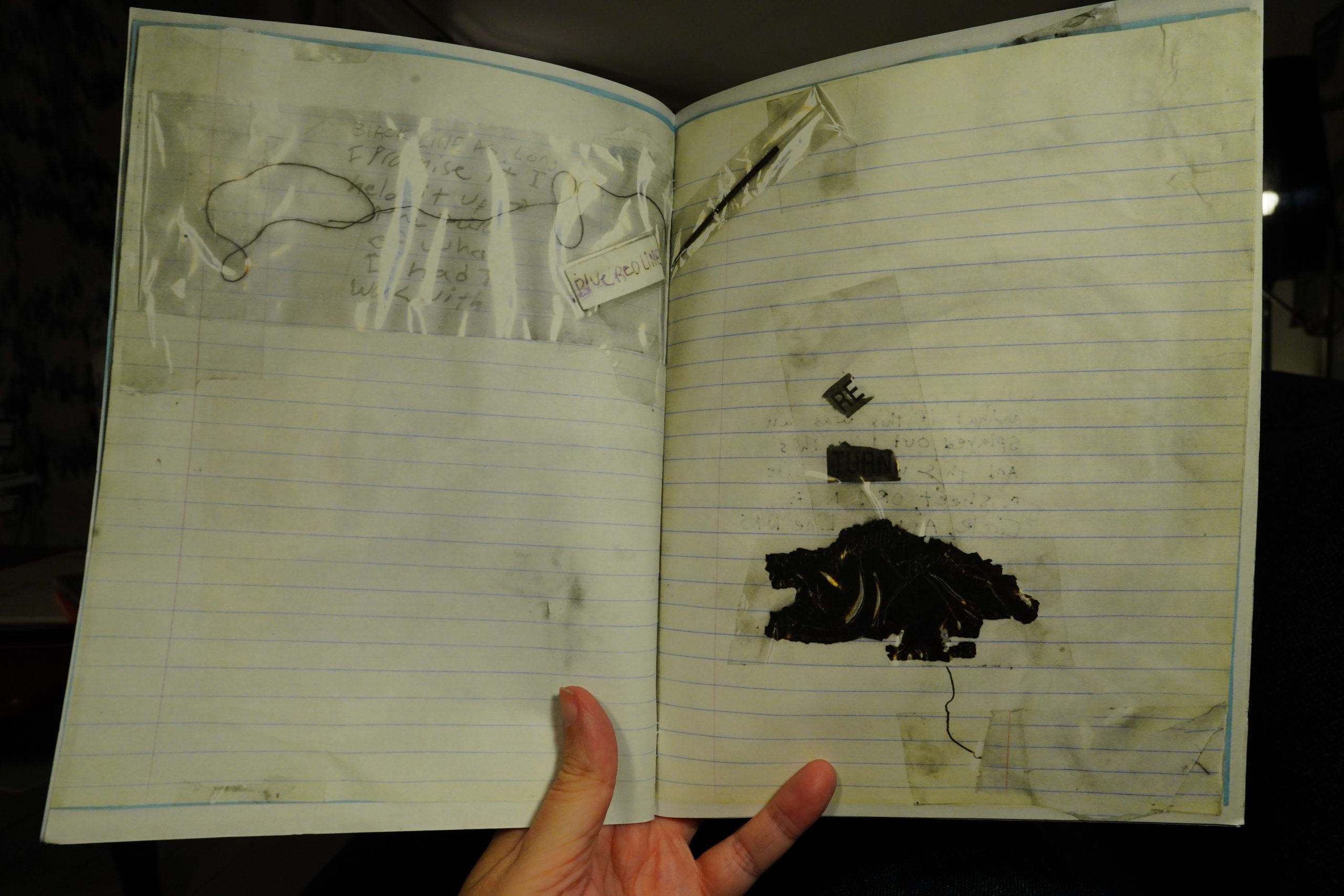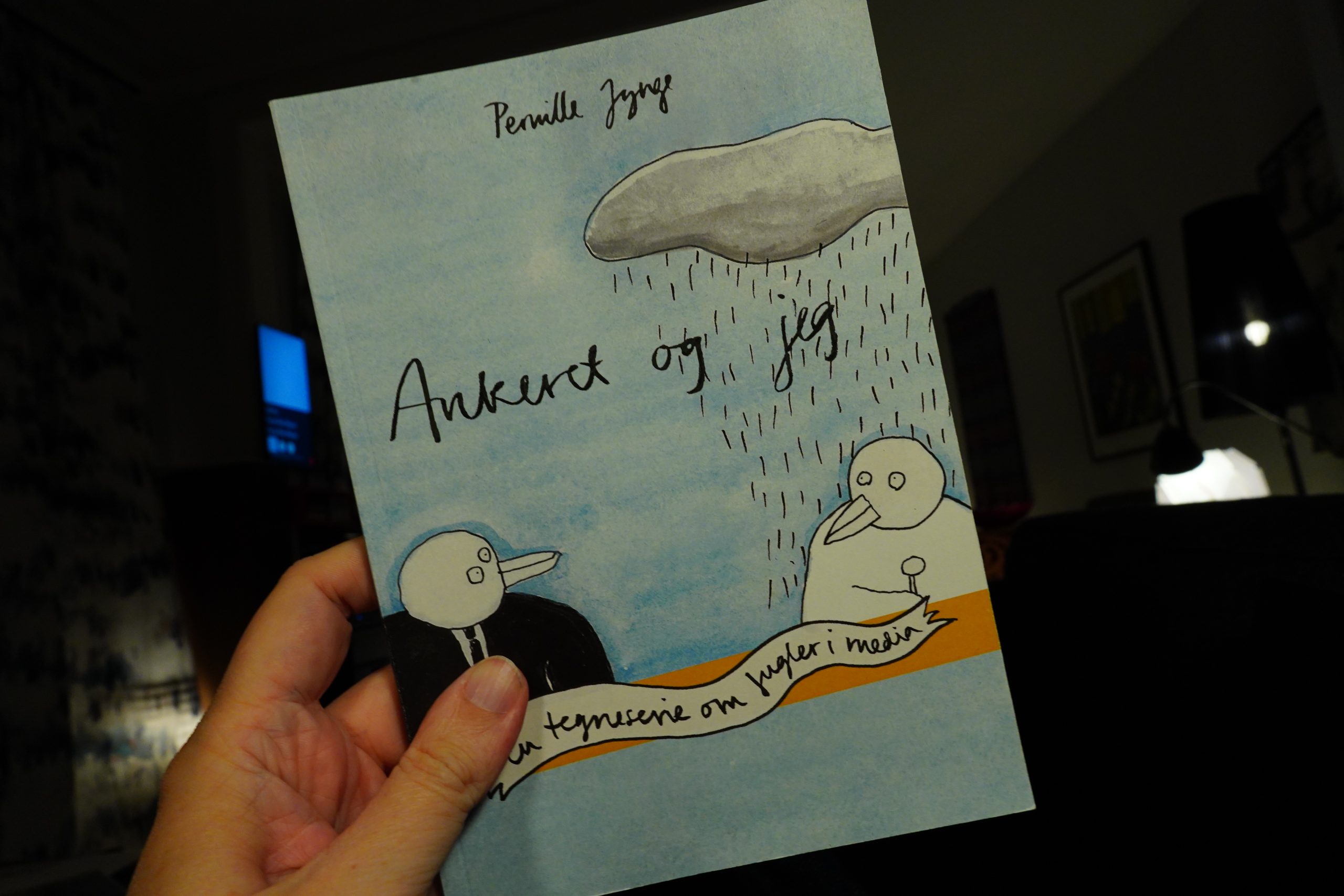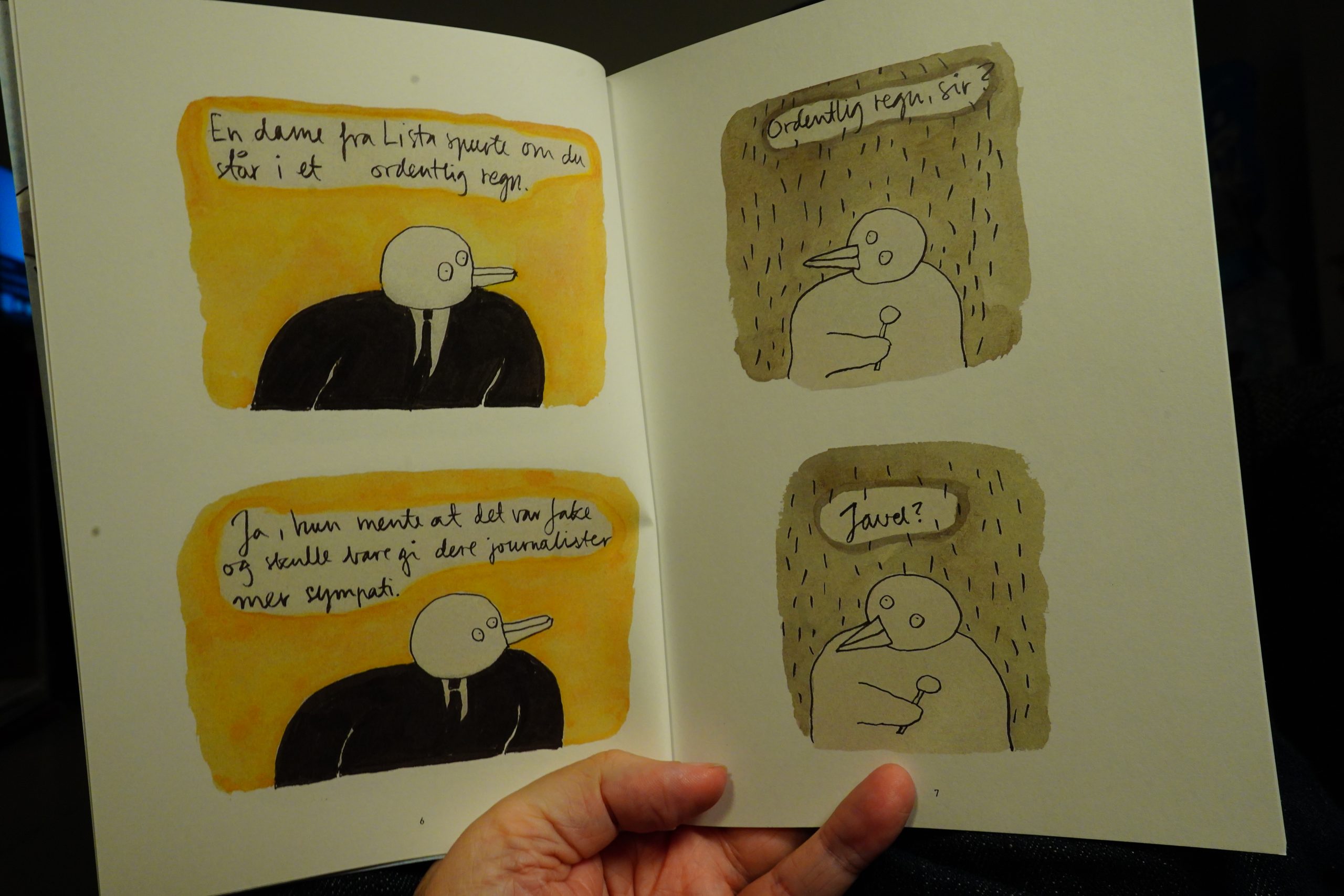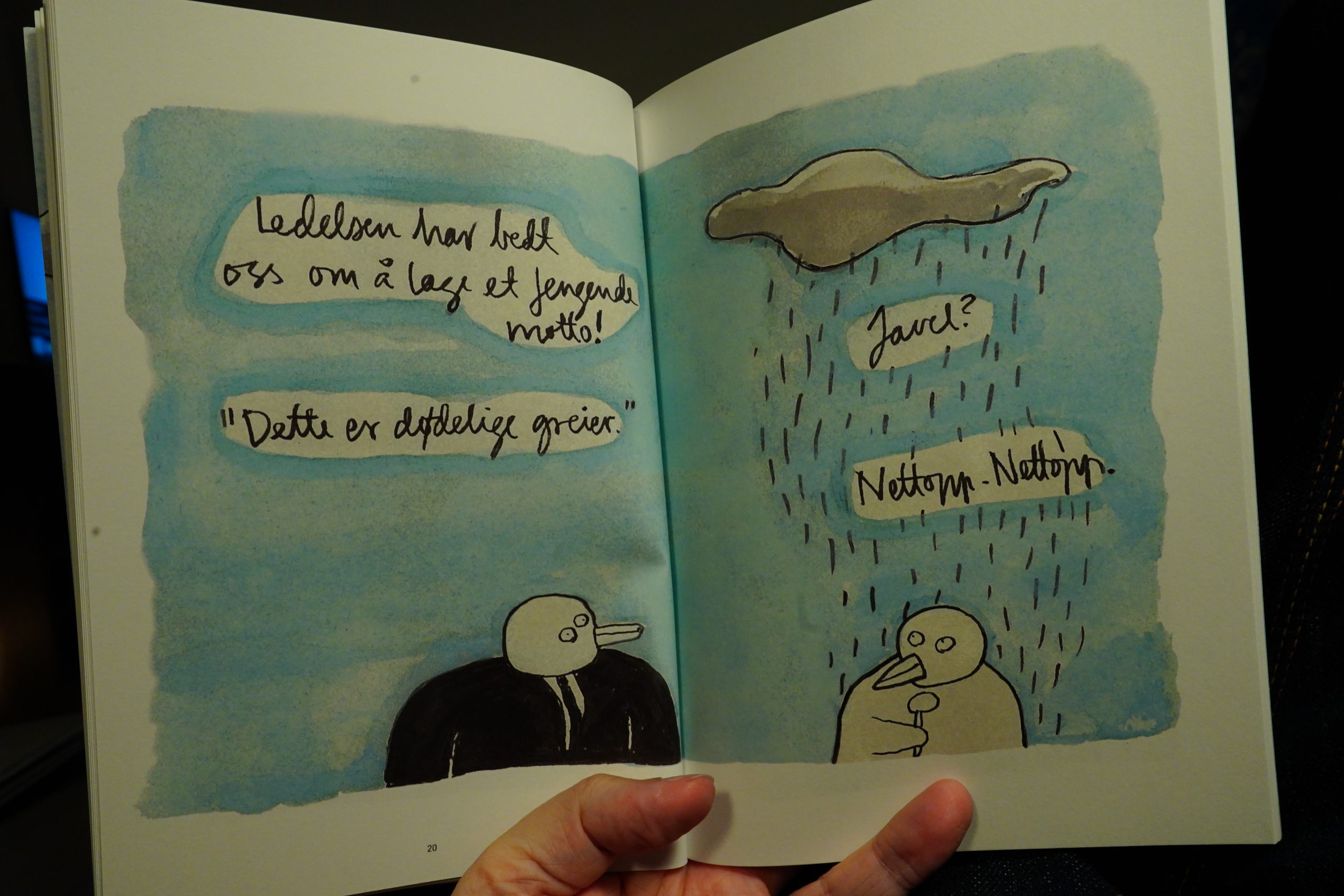September Music
Comics Daze
I hadn’t planned on doing a comics reading day this week, but then I got a whopping new package of brand new comics in the mail… like ten kilos? I think this means that the Book Season is upon us — publishers like to get a certain kind of book out this time of year so that they’ll be fresh in the minds of people doing Best Of
And what kind of books are these? They’re the hefty, brick kinds of books that are all “literary” and stuff.
So I think that’ll be most of today’s reading? I’ve felt the heft of the books; I haven’t actually looked at them… let’s find out if I’m right.
And for today’s musical accompaniment — let’s do calm, calm music.
| Two Nice Girls: 2 Nice Girls | 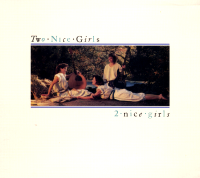 |
13:40: Roaming by Jillian Tamaki and Mariko Tamaki (Drawn & Quarterly)
OK, this is gonna be on top of all the “best of” lists, I think. But also… possibly not? Because it’s not completely typical…
I mean, it’s diffuse than books like this usually are. More ambiguous, less resolved, and I love it. This book has some of the best scenes ever in a comic book. And it perfectly captures so many little things.
It’s also extra amusing for me — I was touristing in New York a few weeks back, and it’s eerie how many of the places the kids here are visiting I saw on that trip, too.
Anyway, it’s a pretty wonderful book.
| Two Nice Girls: Chloe Liked Olivia |  |
14:43: Restless by Joseph Kai (Street Noise Books)
Huh, really original colour scheme…
Anyway, this is fantastic. It starts off slowly, but the tension builds and builds — several different threats mount (that ship in the harbour, TonyX, the gummint) and… it’s a real page turner. Such an exciting read.
And while it’s a point of view seldom seen in comics, it doesn’t succumb to catering to the reader with exposition, but instead just holds that point of view.
| Two Nice Girls: Like A Version |  |
15:12: Eden II by K. Wroten (Fantagraphics)
This brick of a book comes in a plastic sleeve, which is pretty unusual for Fantagraphics… (I mean, it’s unusual for them to have design flourishes like that.)
Or I guess it’s more like a phone book than a brick.
OK, this is some kind of near-future satire or something? (“Satire” is code for “not actually funny”.)
| 0: Soñando |  |
But then we abruptly shift gears, and we’re in Sit-Com Land. Sitcoms rarely translate to the page because the rhythms don’t sit the same way on the page. And you’d need a laugh track here to underline where the jokes are, because they’re not that funny.
“I’m adrift in a timeless void. Only stopping to sell my tears to rich sadists online.”
OK, I’m out. If you tried to design a book that’s less for me you couldn’t have made a more perfect book: This is 1) all philosophical (but kinda dumb), 3) about video games, with d) uninteresting drug sequences, 4) as a papery sit-com and (I’m mostly guessing based on the name) ii) with some “spiritual” dimension.
It gives you the uncomfortable feeling of being condescended to by a moron.
I ditched it after 120 pages. (Of 450.)
| Laura Jean: A Fool Who’ll | 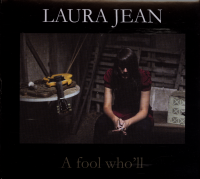 |
16:18: Osha Violation by Seohsahm (Superpose)
OK, I’m gonna divert a bit from the thick September tomes and read some small press stuff.
Oh, it’s a bondage porn book.
16:21: Despair by Charlotte Pelissier
This is from the Desert Island Mystery box — Gabe showed me pics of this being made when I visited. The covers are all hand spray painted. Looks great!
This is pretty wild.
And very funny.
| Laura Jean: Eden Land |  |
16:33: Memoirs of a Man in Pajamas by Paco Roca (Fantagraphics)
OK, back to the corporate (ahem) comics.
This starts off with a longer, very amusing story…
… but the rest of the book seems to be shorter pieces. That is, the book collects three albums (I think), and I was exhausted after reading the first album (about 80 pages of this stuff) that I’m going to postpone reading the rest to some later date. (Some things work better when left as thinner comics.)
It’s not that these aren’t funny pages — several of them are very amusing. The problem is that Roca has a lot of “observations” about everything, and they’re mostly (well, I’m being kind — all) trite.
| Laura Jean: Our Swan Song | 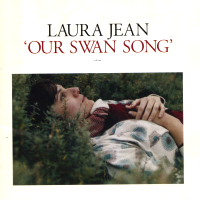 |
These pages originally ran in a magazine — one per week I’m guessing — and I think they probably worked very well in that context. Roca really plays up his schlubbiness, and reading page after page of this, it’s hard not to start to dislike him. I know, I know, these aren’t documentaries — what we’re reading is the way he chooses to portray himself, and he does this to get a laugh — but it’s a difficult genre. Joe Matt was a master of this genre: He, too, exaggerated his annoying qualities to make entertaining strips, but there was something really lovable and endearing about it all. Roca doesn’t have that fine-tuned control, and at the end of this I was going *gngnngng* at the pages here a lot.
Still, it is entertaining, but I think it’s best consumed in smaller quantities, which I’m going to do with the rest of the book. I think it might make for a perfect read-a-couple-pages-before-bed-time book.
| Morgan Caney & Kamal Joory: Magic Radios |  |
17:48: A Book to Make Friends With by Lukas Verstraete (Fantagraphics)
Well, isn’t this a fancy book… it comes with a slipcase that has handles embedded that you can pull out…
Kinda like this Ben Katchor book, but fancier.
Oh! I don’t know what I expected, but it wasn’t this… With such a lavish production on this huge book (almost tabloid size), I guess I was expecting something more finicky. More like Chris Ware or something. Or something wilder than this, like Gary Panter?
Not that this isn’t wild.
It’s a pretty slight story — it’s about somebody stealing a MacGuffin, and this guy losing his identity, and… stuff.
It’s an enjoyable read, but I guess I expected more? In this case, I think the fancy design worked against the book — a simpler presentation wouldn’t have raised the expectations so high, perhaps.
18:19: Damnation Diaries by Peter Rostovsky (Uncivilized Books)
This is an unusual-looking book for Uncivilized — I mean, it looks and feels just like an Image TP collecting a handful of issues. The same format and similarly glossy paper.
And this really is a honest-to-god satire, so none of the jokes are actually funny. I mean — two digs at modern art over the first few pages? I know that modern art is the bugaboo of certain “I know how to draw a hand” comics artists, but c’mon.
And then an Ikea joke? The jokes are just painful. Hey! Perhaps that’s a meta comment on it all, since the book is set in hell? So reading it should be painful?
Anyway, this book is about a former art teacher stuck in hell, visiting a psychologist to work out his real problems, and then there’s a resistance group in hell that wants to make things better, so they explode a huge bomb, burying lots of people. Like one does if one wants to improve things. I wonder whether Rostovsky works as a writer for Marvel/Disney:
Anyway, the book sucks. (But he does know how to draw a hand.)
| Telebossa: Garagen Aurora | 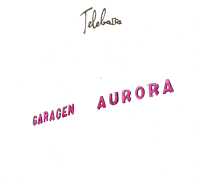 |
19:03: Ursula/This Disease We Call Skin by Erika Price/Lane Yates
Very cool.
I like the obsessive qualities here. And I guess this strip is about cell phones?
| Telebossa: Telebossa | 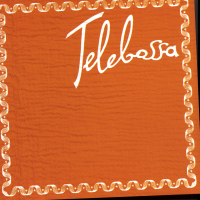 |
19:31: The Hills of Estrella Roja by Ashley Robin Franklin (Clarion Books)
This has a lot going for it — it’s got likeable characters, artwork inspired by Japanese comics, and a fun X-Files-but-for-2023 plot.
| Various: Erased Tapes: 1 + 1 = X (1) |  |
Oops; it’s eight — I should eat something. Be right back.
It’s got some problems, though — I was having a hard time telling some of the characters apart, and the usual way artists deal with that is by giving people different hair colour (Expert Tip Time) — but here that strategy is being defeated by the tendency to colour everybody by mood instead.
The plot is also just kinda seems to be lacking in general sense. Like — she drove out here, and there’s no time limit or anything to what she’s doing. She could just go back to Austin and return the next week with better equipment for monster hunting. And SPOILERS the ending itself: Those people taking care of The Secret sure did a bad job. I mean, a cave where anybody can just walk in? A defence that relies on nobody dragging their feet across a line of dust? A stray can could have released those monsters. How about installing a door? Or laminating the Anti Monster Dust Line Of Defence? Just something?
I know I know, those are very very nerdy things to be bitching about, and if you say that I must be fun at parties I have to tell you that you’re wrong.
Still! It’s a good, fun read.
| Various: Erased Tapes Collection VIII |  |
21:34: This Country by Navied Mahdavian (Princeton Architectural Press)
This is about a couple moving to a very remote place in Idaho.
Nothing really dramatic happens there — they grow some veggies and meet the neighbours (all of whom are pleasant towards them (except for asking him where he’s from)).
And then there’s this.
The artwork is really attractive throughout, and especially the drawings of wildlife are great.
The storytelling is really on point, too — like I said, nothing dramatic happens, but there’s still a nerve going through this: It’s not boring for a microsecond. (It’s also quite funny here and there.)
It’s really good.
| Various: The World Is Everything |  |
22:40: The End
So I think I’ll call it a night here. The day started with two really solid books, and then there were some mixed books, and ending it on a high seems like a good idea. (Besides, I have to do some French learnin’.)
Jazz Show
Comics Daze
Finally a day for reading comics again… I don’t know why I’m so busy these days, but Duolinguing French takes up a lot of time, I guess.
After reading a Chantel Montellier comic book last month, I decided that it was time to finally learn French so that I can start buying French comics, so how’s that going? Let’s check in with Yakari!
Hey! I understand everything in those speech balloons, except “les sables”, which Google Translate says means “the sands”… that eagle is very mysterious… Anyway… The system works!!! I now have the reading capabilities of a French two year old! Pretty soon! I’m sure!
OK, let’s start…
| Joni Mitchell: The Asylum Albums (1): For the Roses |  |
12:06: Santiago! by Jay Hosler (Margaret Ferguson Books)
I absolutely adore (j’adore vraiment) Hosler’s early series — Sandwalk Adventures, Clan Apis… they are very funny, very educationamal, and have a very distinctive pensive mood — they’re irresistable. I’m less enthused by his later First Second books, which are more conventional — he plays up the action a lot, presumably to appeal to a wider audience.
But I missed this book published last year, so let’s have a read.
It’s a very lively book — we spend most of the time on Santiago’s very early history of mischief.
I guess the point being made here is that even if you’re going around blowing stuff up as a child, you can still become a great scientist? Or even — blowing stuff up as a child is a prerequisite for become a great scientist…
It’s a fun book; very engaging. I didn’t really feel like I learnt anything, though.
| Joni Mitchell: The Asylum Albums (2): Court and Spark |  |
12:55: ABO Comix #4: A Queer Prisoners Anthology edited by Casper Cendre
So this isn’t an outsider art collection; it’s more insider art. (OK, that’s like a totally original joke. (I mean, it’s like a joke but not funny.))
I wondered how they were getting inmates to contribute to this collection in such large numbers (this book is almost 400 pages long), but apparently they get paid? That’s unheard of! I mean, for comics anthologies.
(Sorry, sorry…)
It is a really fascinating read — the skill levels vary wildly, but they’re all from points of view we never see…
| Joni Mitchell: The Asylum Albums (3): Miles of Aisles |  |
And some are pretty stunning.
And some are very professional.
There’s a rawness to it all…
I think this is the only strip that talks about why they went to jail? Which is a pretty odd omission in general, but the one strip that does talk about it…
Most of the strips are very traditional in form, but this is pretty cool.
It turns out that it’s all sex and violence, and mostly all violence.
It’s a really solid anthology. Get your copy here.
14:12: Disorder #1-3 by Erika Price
I wondered whether I could end up with fewer blurry images if I put the comic down on the sofa before snapping — eliminate one source of shakiness. But I guess not.
I guess this book is about body dysmorphia?
I admire the compulsive rendering.
But it’s otherwise not my kind of thing at all. It just seems really… self obsessed?
| Joni Mitchell: The Asylum Albums (4): The Hissing of Summer Lawns |  |
14:26: Blood Lines 2 by Rob Walton
Oh, I forgot that I got a copy of this a month ago… it’s the continuation (and conclusion?) of the series Walton published back in the 80s. The first volume of the remixed original issues was very good, and this is presumably all new stuff?
At the start of this my brain was mostly going “wha?” “er” “uhm” and then “wha?” again.
Then everything snapped into focus, and… it’s great! It’s so propulsive and so embedded in its own hermetic world — it’s obsessive and insanely convincing. It’s a real page turner, and while there’s constant mysteries, they’re mysteries that you want to resolve.
It’s just a really exciting read, and there’s nothing quite like it. It’s got all of these convoluted ideas that somehow fit together and make sense in this book.
And the artwork just works great — Walton’s super sharp lines coupled with occasional xeroxes of houses and angels and monsters.
Unfortunately (or fortunately, depending on how you look at it), this isn’t the final volume. The story is to be finished in a third and final book, which I’m totally going to read. I only hope it’ll be published…
*googling* Whaaaa!!!! It’s already out! Wow, Walton has been working hard!
*buy*
| Goldie: Timeless: The Remixes (1) |  |
15:20: Hvis det ikke brenner by Ronja R. S. Berge (Gyldendal)
The artwork is really attractive. I like the marks and I love the way she draws figures. And the pacing and storytelling are on point.
And… it’s just actually fabulous. It’s about trauma and stuff, but it’s never made clear what happened — instead it’s about getting past that and on with your life. It’s gripping and it’s moving.
It’s one of those kinda perfect books.
15:35: I’m a Cop no. 2 by Johnny Damm
I got this from here.
This is a mash-up of old comics and statements from heads of police unions.
Heh heh heh oh the irony.
It’s a very angry book, and I like that.
15:41: Š! #48 edited by David Schilter (Kuš)
The focus this issue is on artists from Africa.
And the theme is “ghosts”.
It’s not the strongest issue — most of the pieces are kinda basic, but there’s some good stuff here, like this one by Akvilé Magicdusté.
Oops!
15:54: X-Amount of Comics by Don Simpson (Fantagraphics)
Over the last couple years, I’ve read a substantial number of Simpson comics (while doing the Kitchen Sink blog).
I’ve seen this book mentioned on Xitter a couple of times — it’s apparently the conclusion to the 1963 series, which was written by Alan Moore… and Simpson was the letterer? I’ve never read 1963 myself, and I’m not really a Simpson fan, so… er… I have very low expectations.
Uhm er “Fuck Al”?
So, Alan Moore thinks he’s Jesus and etc.
It’s nice to see that science has made progress: They’ve now figured out how to distil a migraine down on paper.
Perhaps it’s would have been funnier if I got more of the references, but the references I got were really kinda tedious. Nothing here is actually funny, as far as I can tell.
I gave up reading this halfway through.
| Goldie: Timeless: The Remixes (2) | 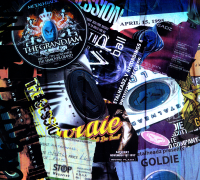 |
16:24: Hot Cake by James Tonra/Mikaël Choukroun
Ooh I love hand-made comics.
This is pretty wild…
Cool stuff.
16:34: Mothers by Kusahara Omi (Glacier Bay Books)
This is very Glacier Bay — it’s a collection of more or less allegorical stories with a somewhat “spiritual” bent.
But some of the stories here are rather fascinating. There’s a nice stillness to them.
Then again, some of them tip over into religiosity.
| The Holy Family: Go Zero | 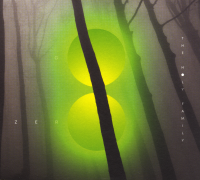 |
17:13: Baby Blue by Bim Eriksson (Galago)
This is set in a near-future dystopian Sweden. I like the artwork, but the milieu seems over familiar — it feels like a mish-mash of a bunch of well-known dystopian tropes (Fahrenheit 451, Alphaville, 1984, etc).
| Aphex Twin: Blackbox Life Recorder 21f – in a room7 F760 |  |
There are some pretty spiffy sequences…
… but it just gets bogged down in these long talks where the characters explain to the reader pretty much what we’ve already understood.
It’s OK, but it lacks zing.
| Jaimie Branch: Fly or Die Fly or Die Fly or Die ((world war)) | 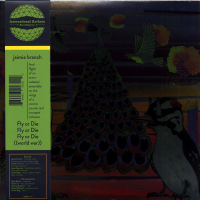 |
They’ve really gone to town on Jaimie Branch’ final album, but that’s totally understandable.
I only got to see her a couple of times live, but she was pretty amazing. And dying that young? Geez. So it’s melancholic getting this album, because it’s pretty great, too.
18:13: Shubeik Lubeik by Deena Mohamed (Pantheon Books)
It’s an odd book — it’s about using genies and magical wishes to do stuff, but it’s mostly about the mechanics of doing that and how to not, etc. I’m guessing it’s very allegorical and stuff.
The problem is just that it’s kinda boring.
I think it’s three albums that been mashed together, too? They’re all about the wish thing, but feature different characters.
After the second story, I decided I didn’t need to read any more of this stuff.
| Róisín Murphy: Hit Parade | 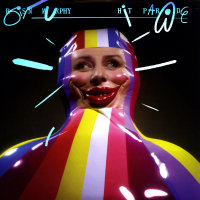 |
19:02: Grip den føkkings dagen by Kjersti Synneva Moen (Aschehoug)
This book is about moving to a big city to start art school when you’re sixteen. I.e., a truly universal experience.
The artwork’s charming, and I like the low stakes of the story. It’s good stuff.
OK, gotta grab something to eat… be right back.
| Talking Heads: Stop Making Sense (40th Anniversary) | 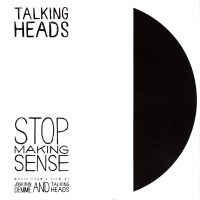 |
19:58: Mr Colostomy by Matthew Thurber (Drawn & Quarterly)
This is a collection of strips that presumably ran on Instagram or Patreon or something?
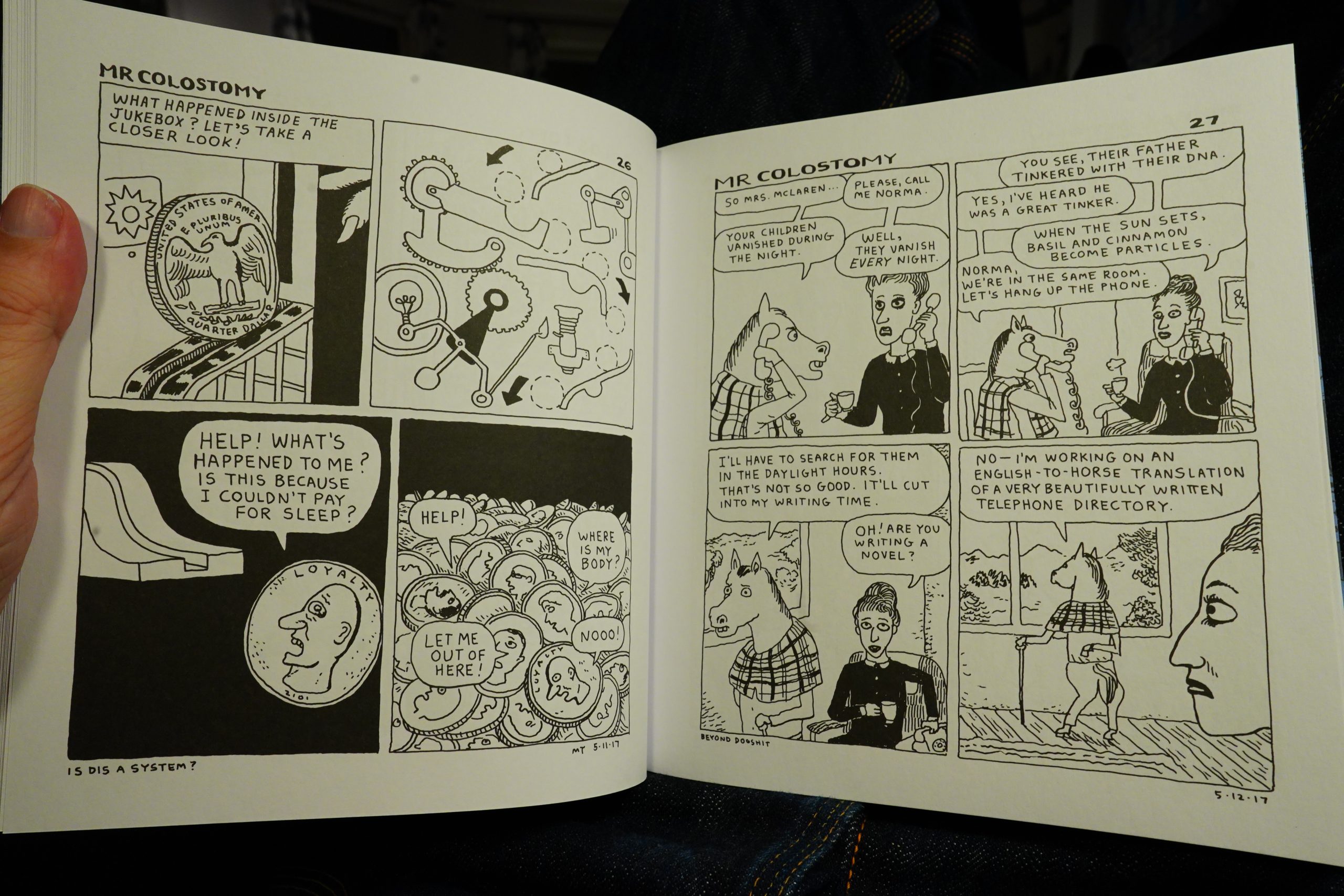
They’re improvised, but there’s several storylines that develop over the strips. And some of the strips are indeed very funny.
But for me, something seems to dissipate about one third in — the storylines mostly end, and we get more random stuff. The absurd bits are still properly absurd, and I just kinda get sleepy. But that might just be me. Being sleepy.
21:11: Causeway by CF
Oh, I forgot I’d gotten these…
I should read all the issues in order, because I’ve forgotten what’s going on.
If indeed anything is going on. It’s very cool, anyway.
21:14: Back2School by Ashton Carless
I’m not totally sure who this is by… I think I bought it at Desert Island? It’s a plastic bag with various things in it.
Mostly poetry stuff…
… but also other stuff.
And collages. It’s cool.
| Lolina: Face the Music |  |
21:36: Ankeret og jeg by Pernille Jynge
This is pretty amusing…
… but it feels a bit unresolved.
| DJ Rupture: One Plus One Equals Three |  |
21:44: The End
OK, that’s enough comics for one day.

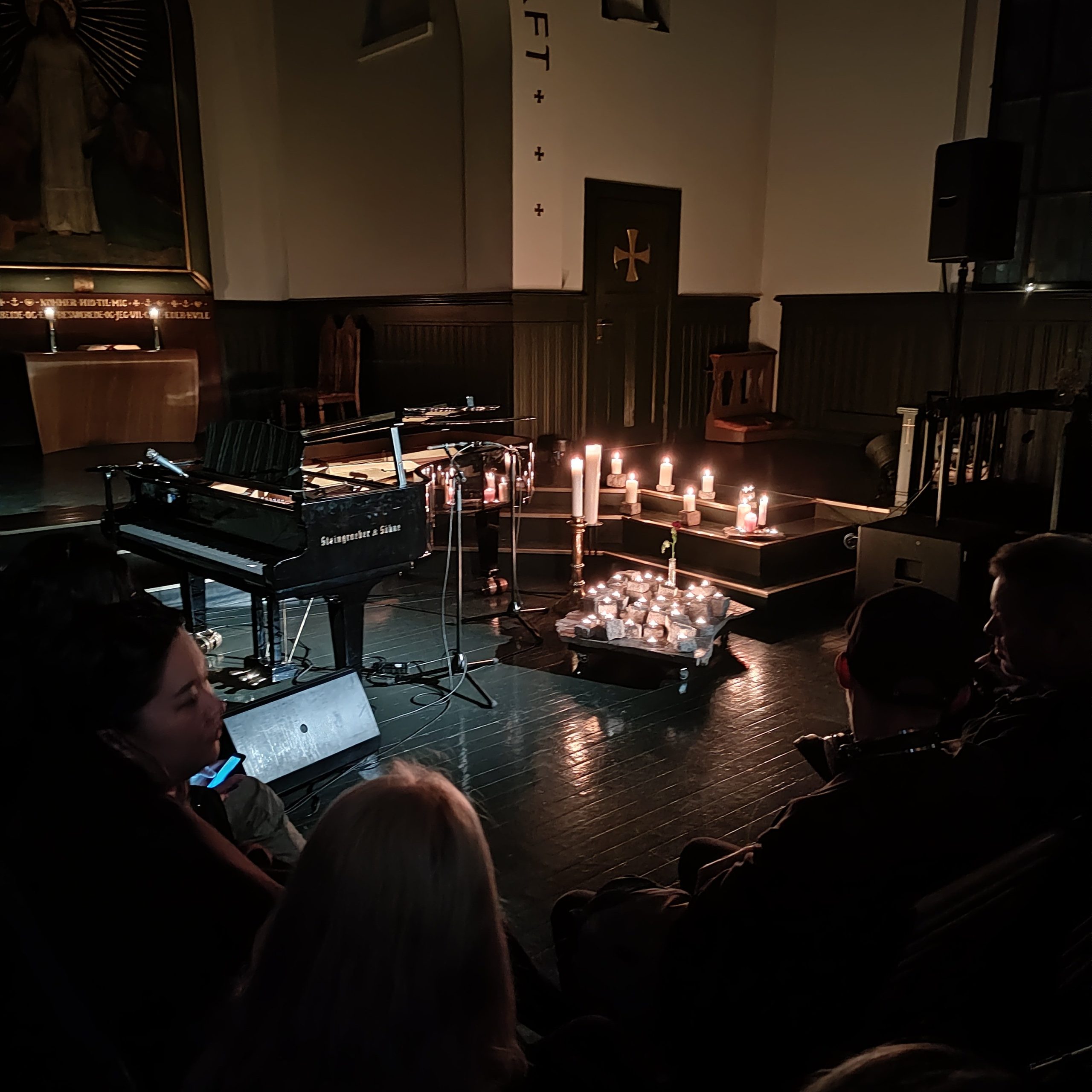

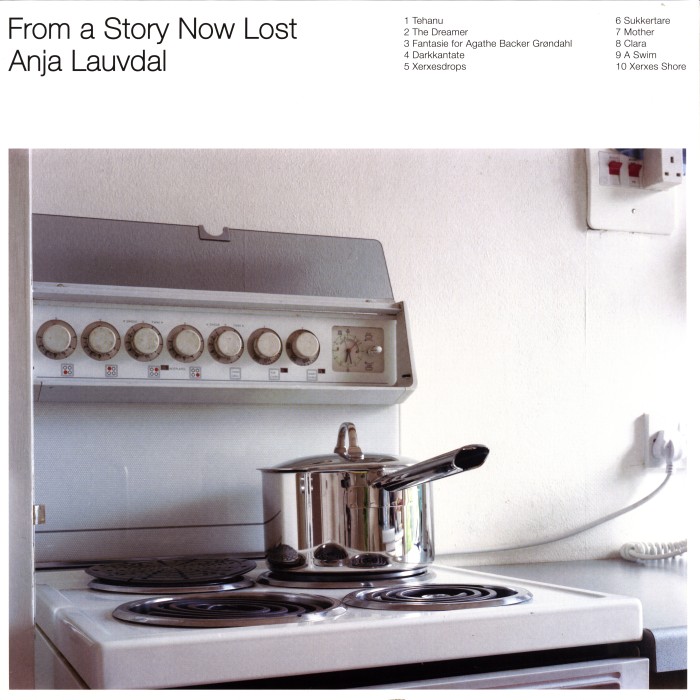


%3A+Live+In+Paris+'99)

)
)


))




)
)

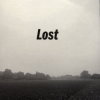
)
)



%3A+Paperback+Writer-Rain+EP)

)
%3A+For+the+Roses)
%3A+Court+and+Spark)
%3A+Miles+of+Aisles)
%3A+The+Hissing+of+Summer+Lawns)
%3A+Peter+Evans)

)
)

